Tom's Hardware Verdict
EVGA is back! The SuperNOVA 1000 G6 is among the best PSUs in its class, offering top performance while keeping noise output low.
Pros
- +
+ Full power at 47 degrees Celsius
- +
+ High overall performance
- +
+ Good build quality
- +
+ Tight load regulation at 12V
- +
+ Highly efficient at super-light loads
- +
+ Long hold-up time
- +
+ Low inrush current with 115V
- +
+ Not noisy at normal operating conditions
- +
+ Fully modular
- +
+ Loads of connectors
- +
+ Compatible with the alternative sleep mode
- +
+ Compact dimensions
- +
+ 10-year warranty
Cons
- -
Increased noise under stressful conditions
- -
Efficiency under normal loads could be higher
- -
High inrush current with 230V
- -
Not so efficient 5VSB rail
- -
Small distance between connectors
Why you can trust Tom's Hardware
EVGA has done it again, this time with Seasonic's help. The SuperNOVA 1000 G6 is one of the best of the Gold 1000W category, posing some serious competition to the Corsair RM1000x (2021). Noise output is kept low, although it's only 1 dBA less than Corsair's top RMx unit, so the difference is barely noticeable. Overall, though, the new EVGA 1000 G6 boasts impressive performance, which justifies a place in our best PSUs article.
Let's start with some history. After the highly successful SuperNOVA G2 line, which Super Flower produced, EVGA rolled out the G3 (Super Flower) and G5 (FSP) until it reached the G6 line, which is based on a Seasonic design. A major feature of the 1000 G6 is the hybrid (Hardware & Firmware) over power protection (OPP). An analog IC handles hardware OPP, and an MCU is responsible for the firmware OPP. The first is designed to trip when power output exceeds 135% for a few nanoseconds, while the latter trips once power exceeds 125% for longer periods, in the millisecond range.
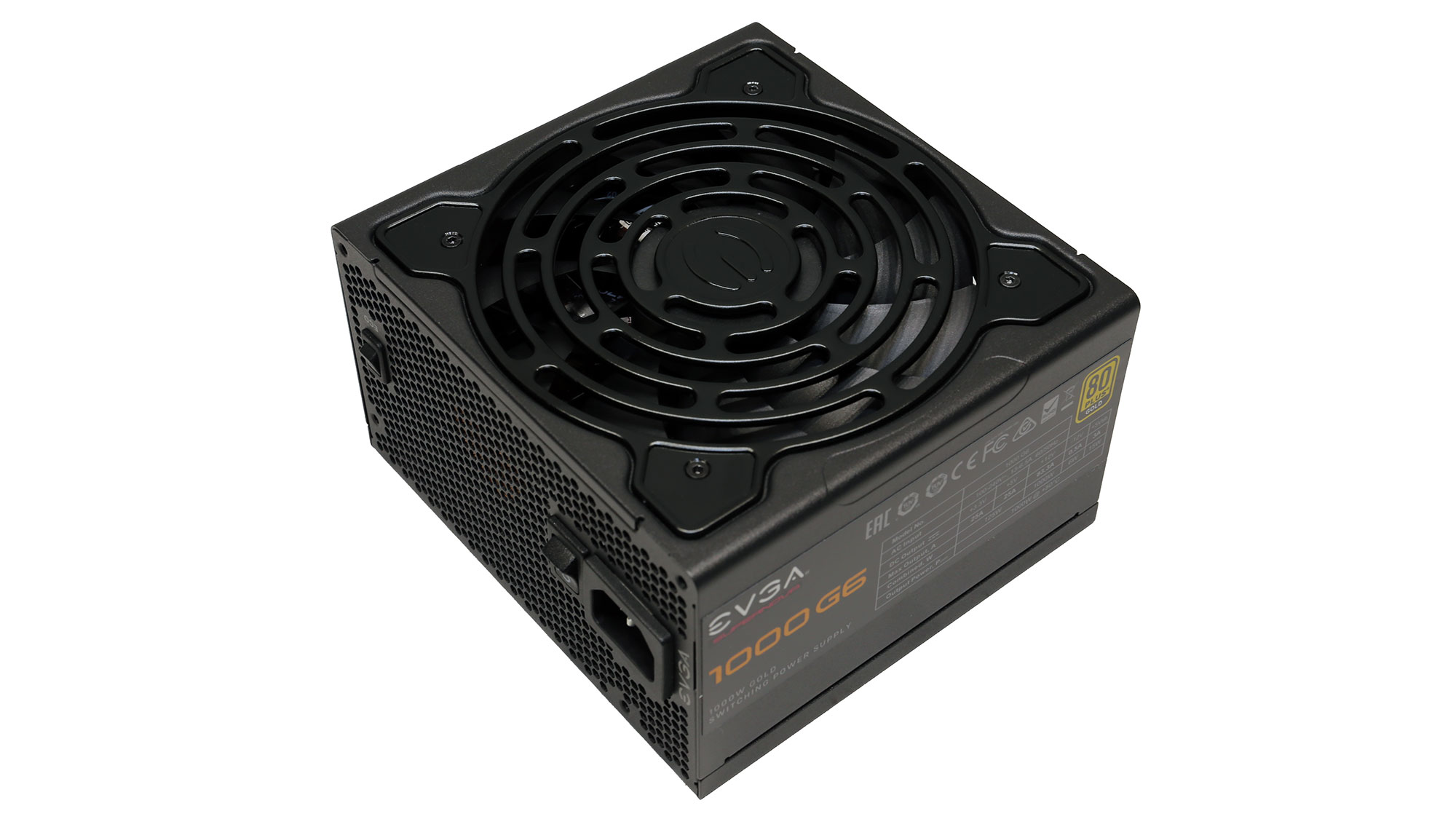
Product Photos
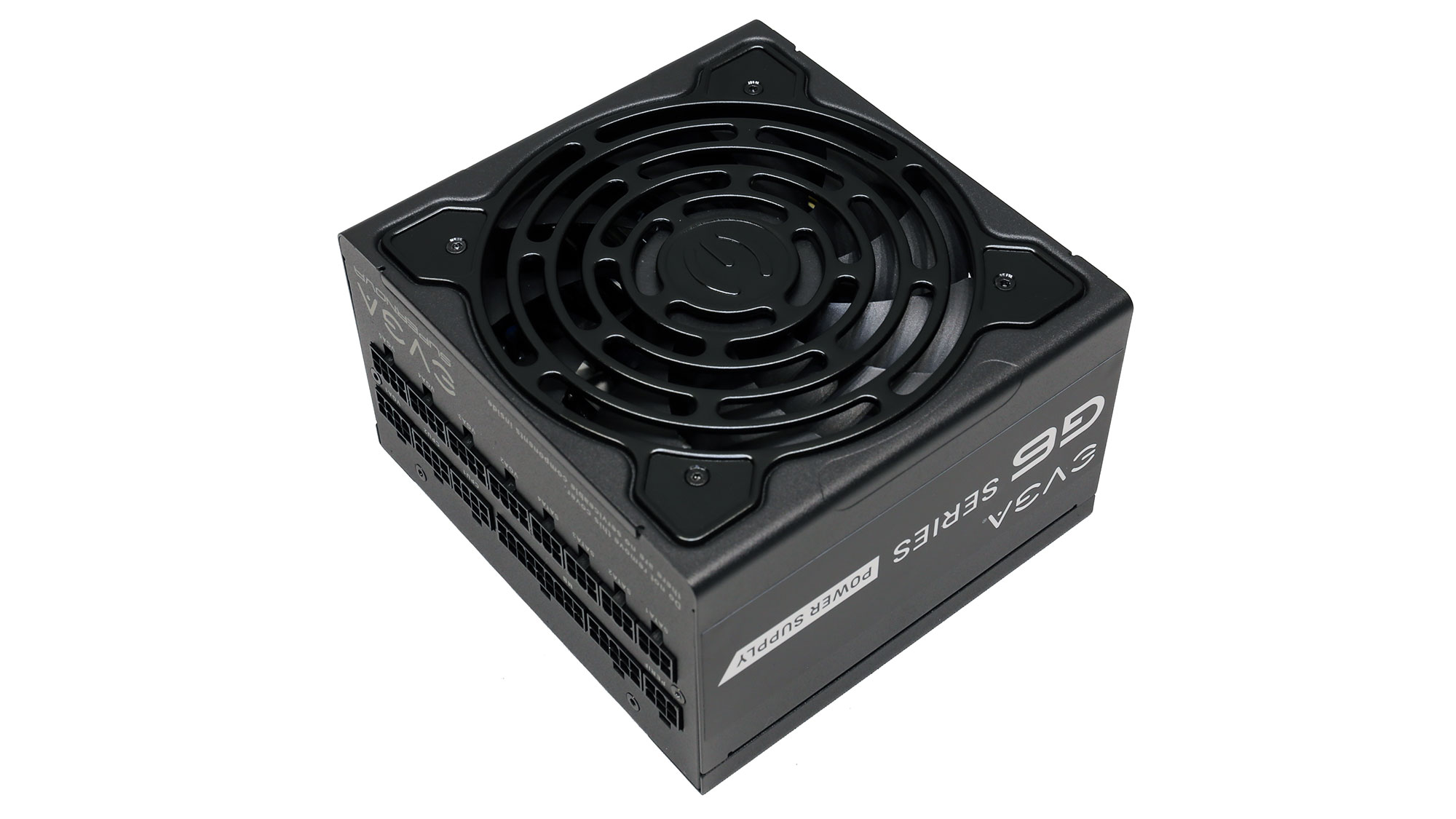
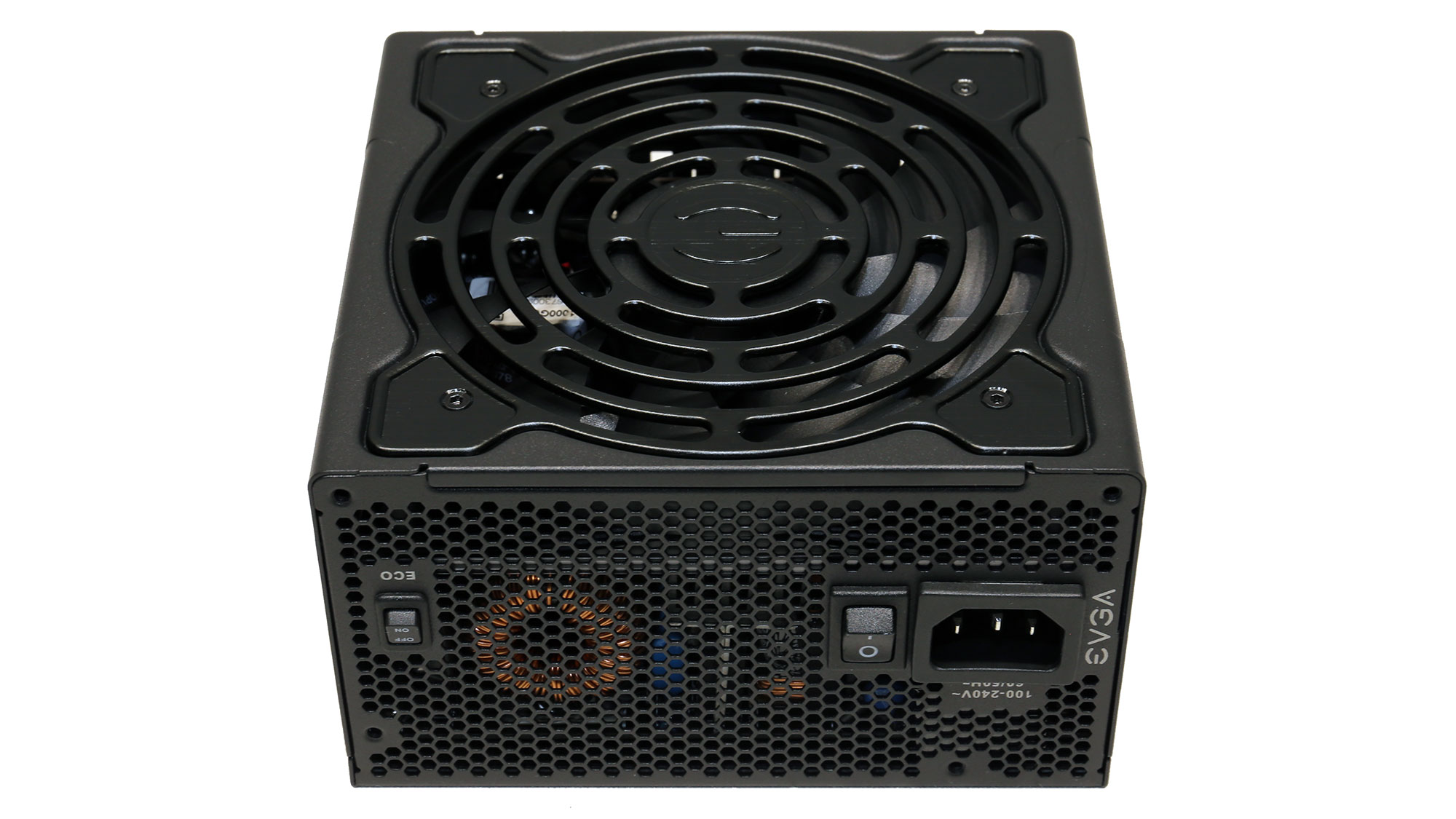
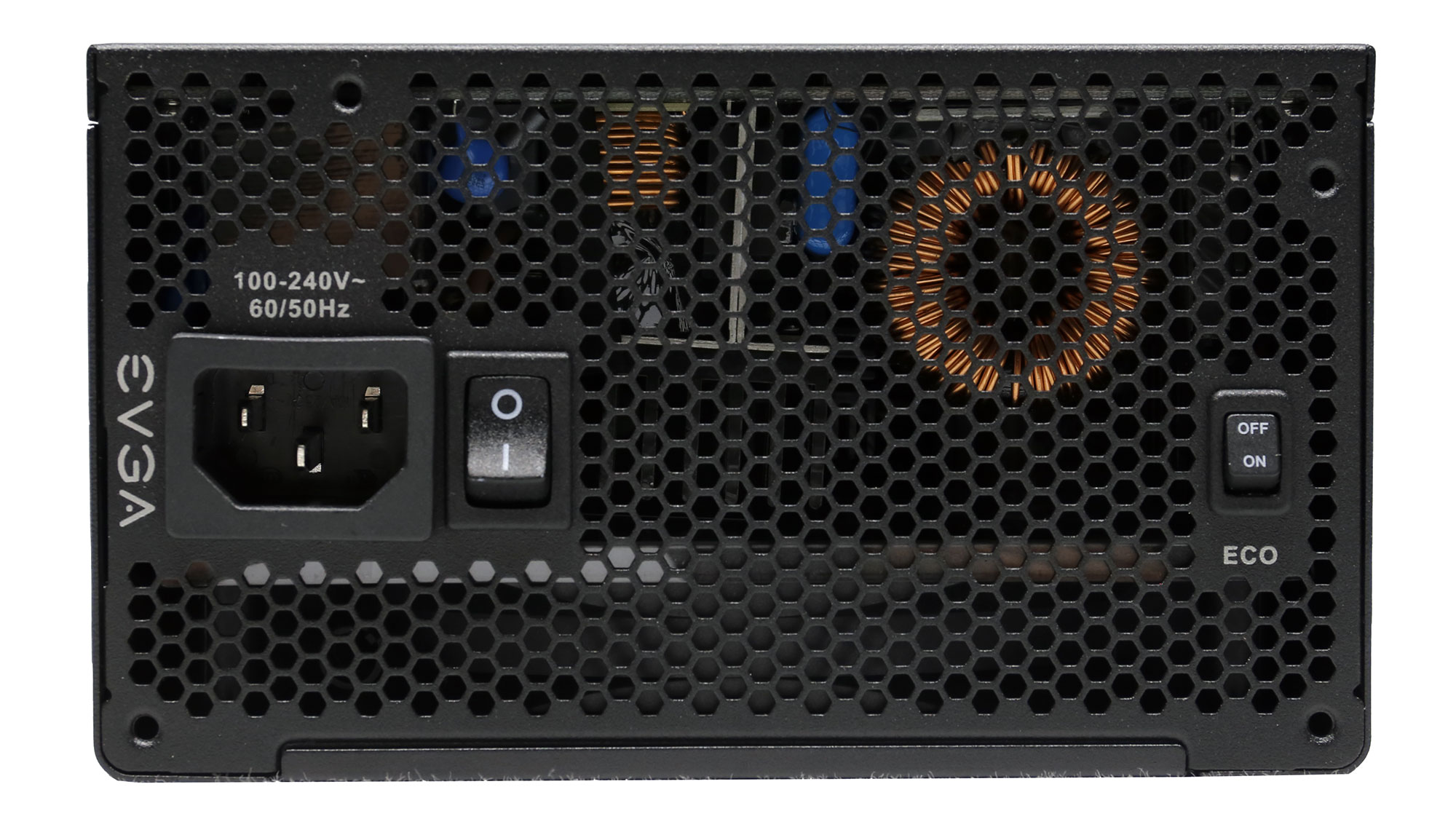
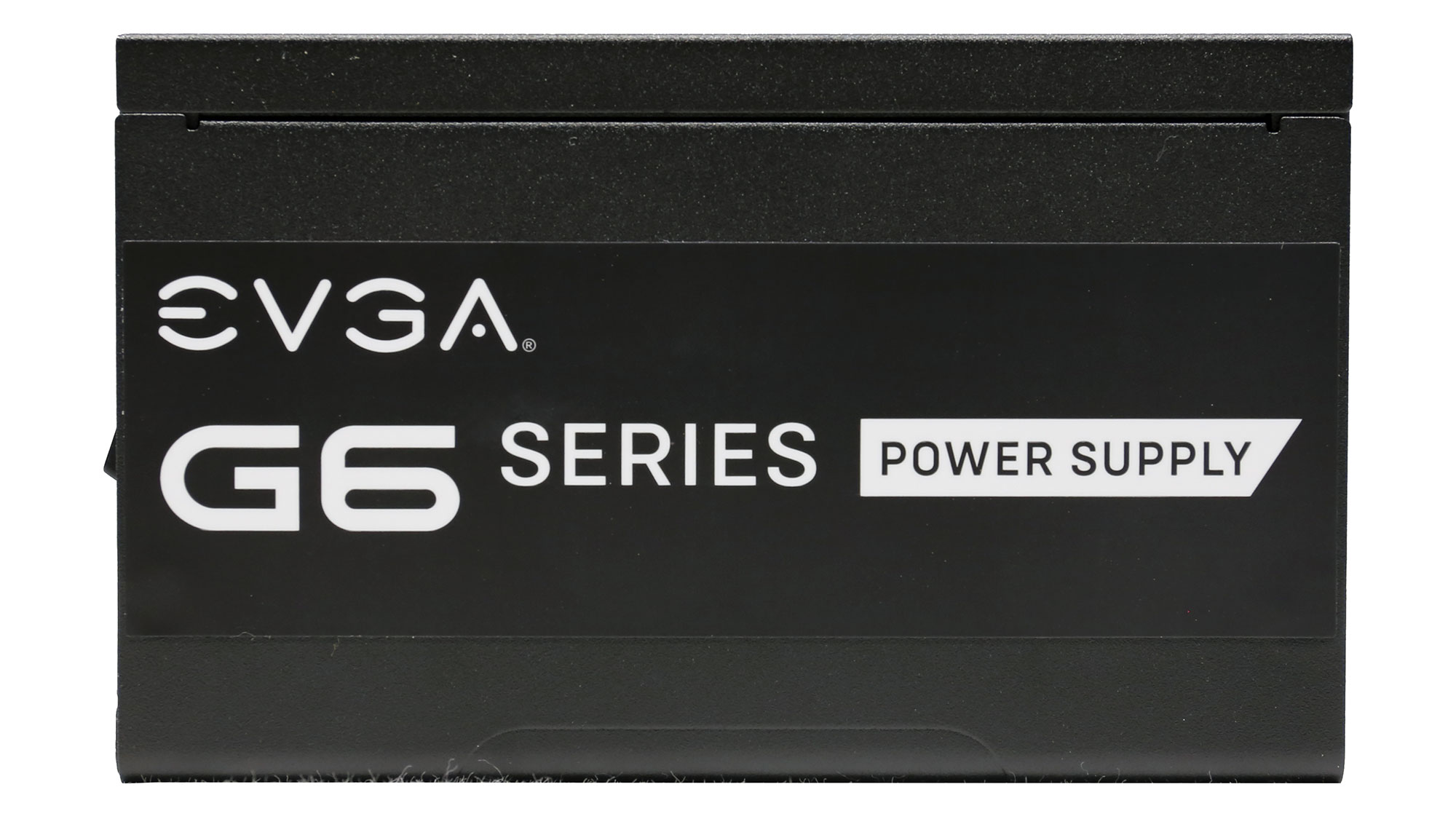
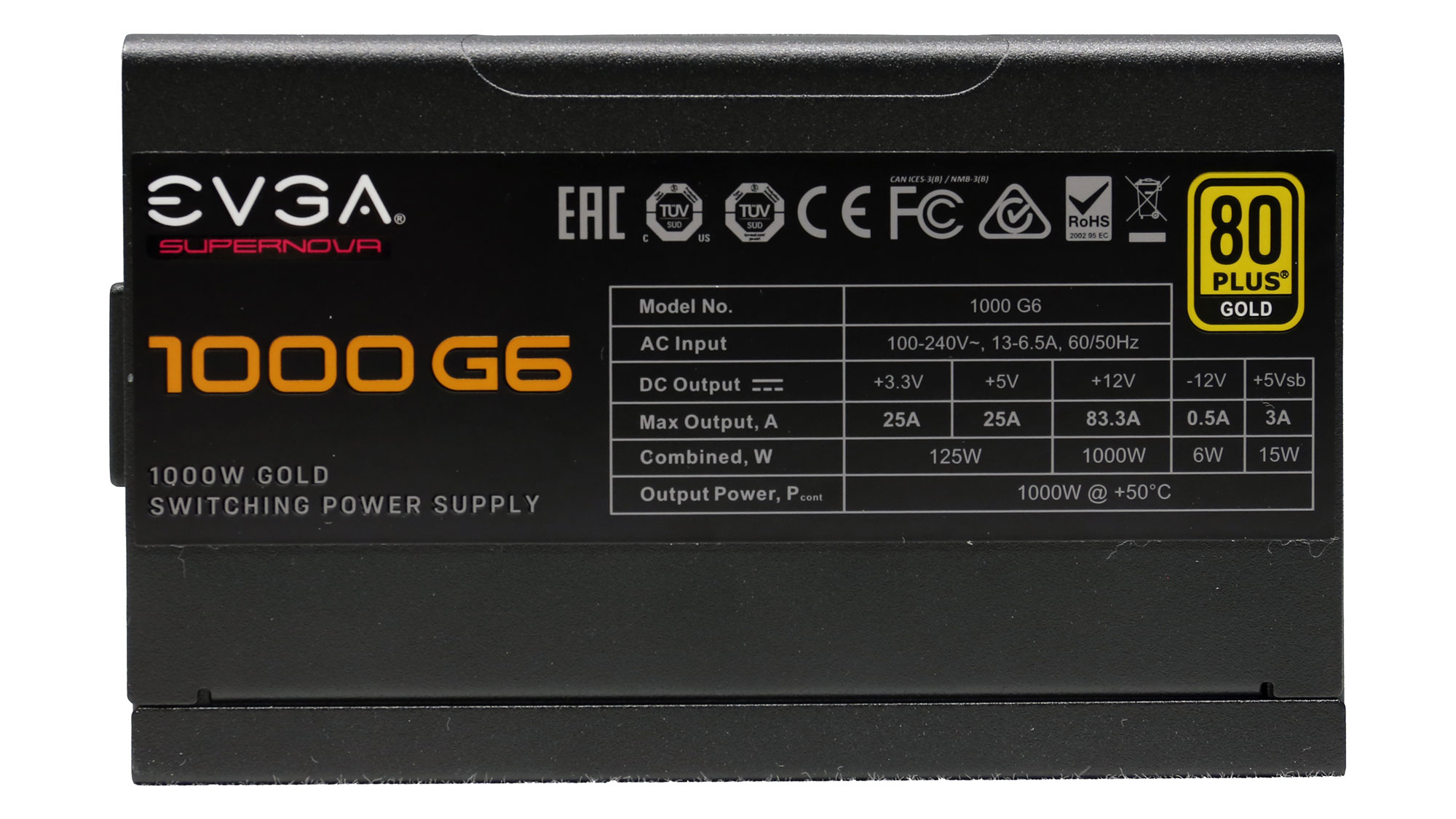
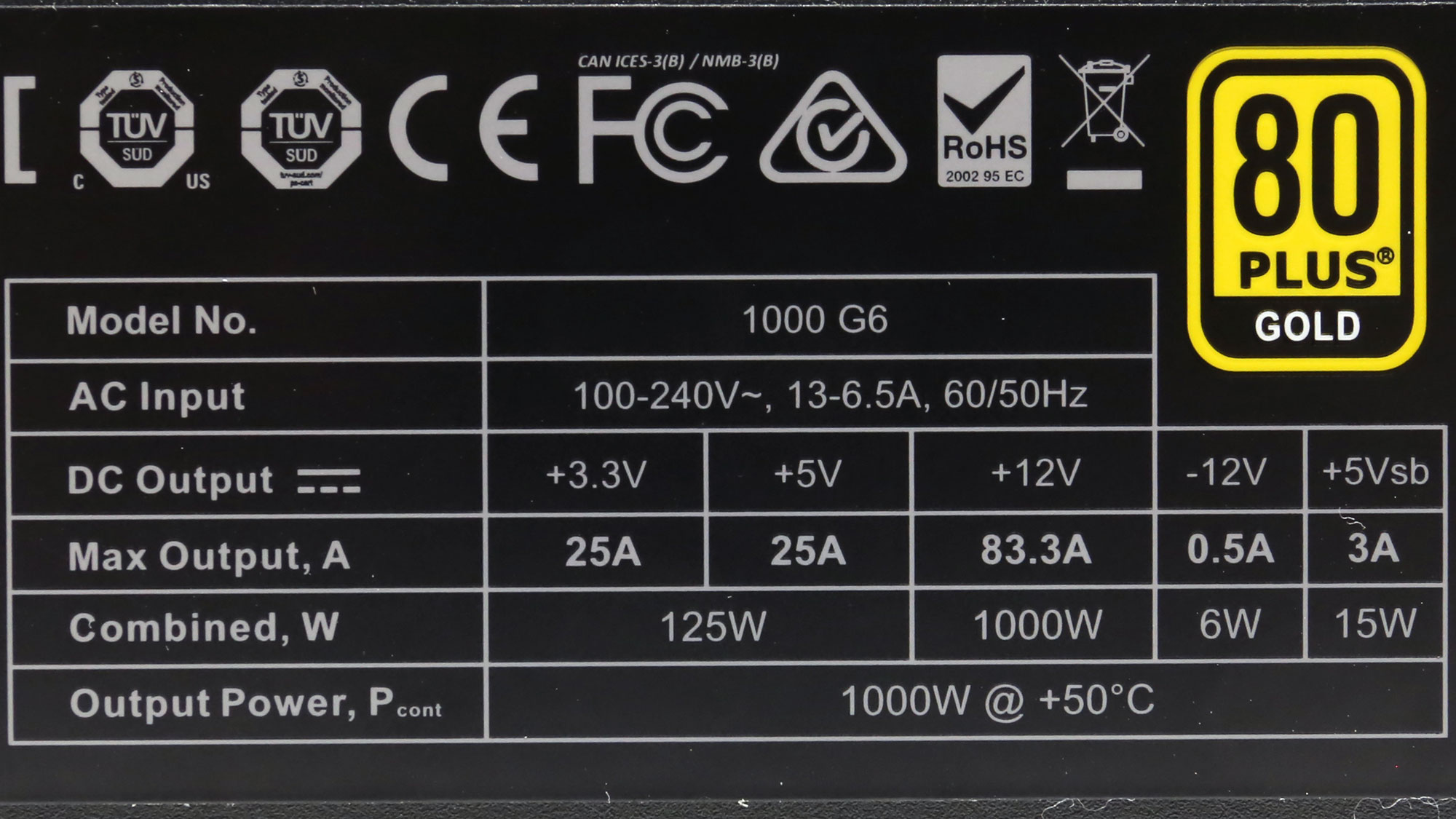
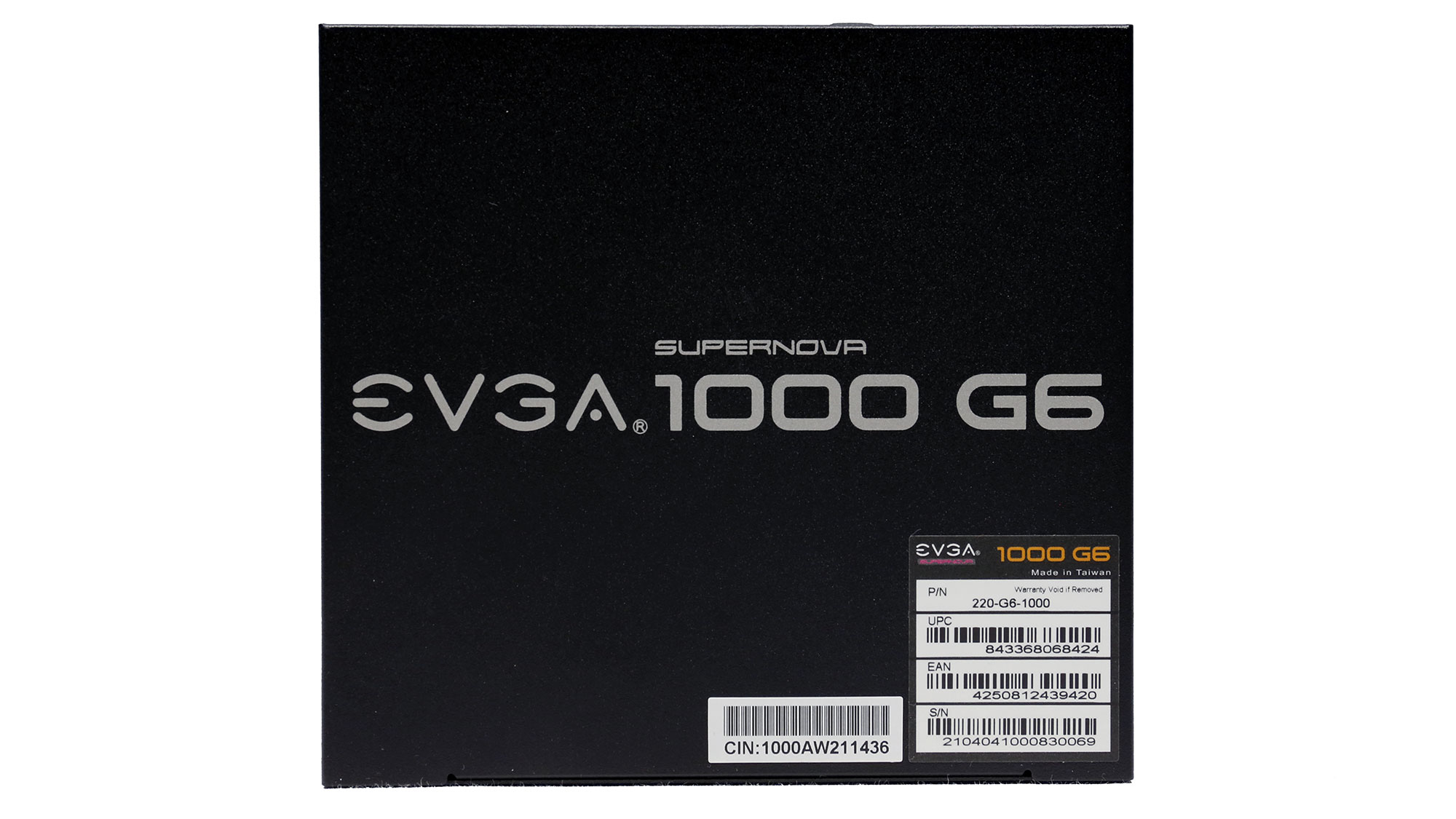
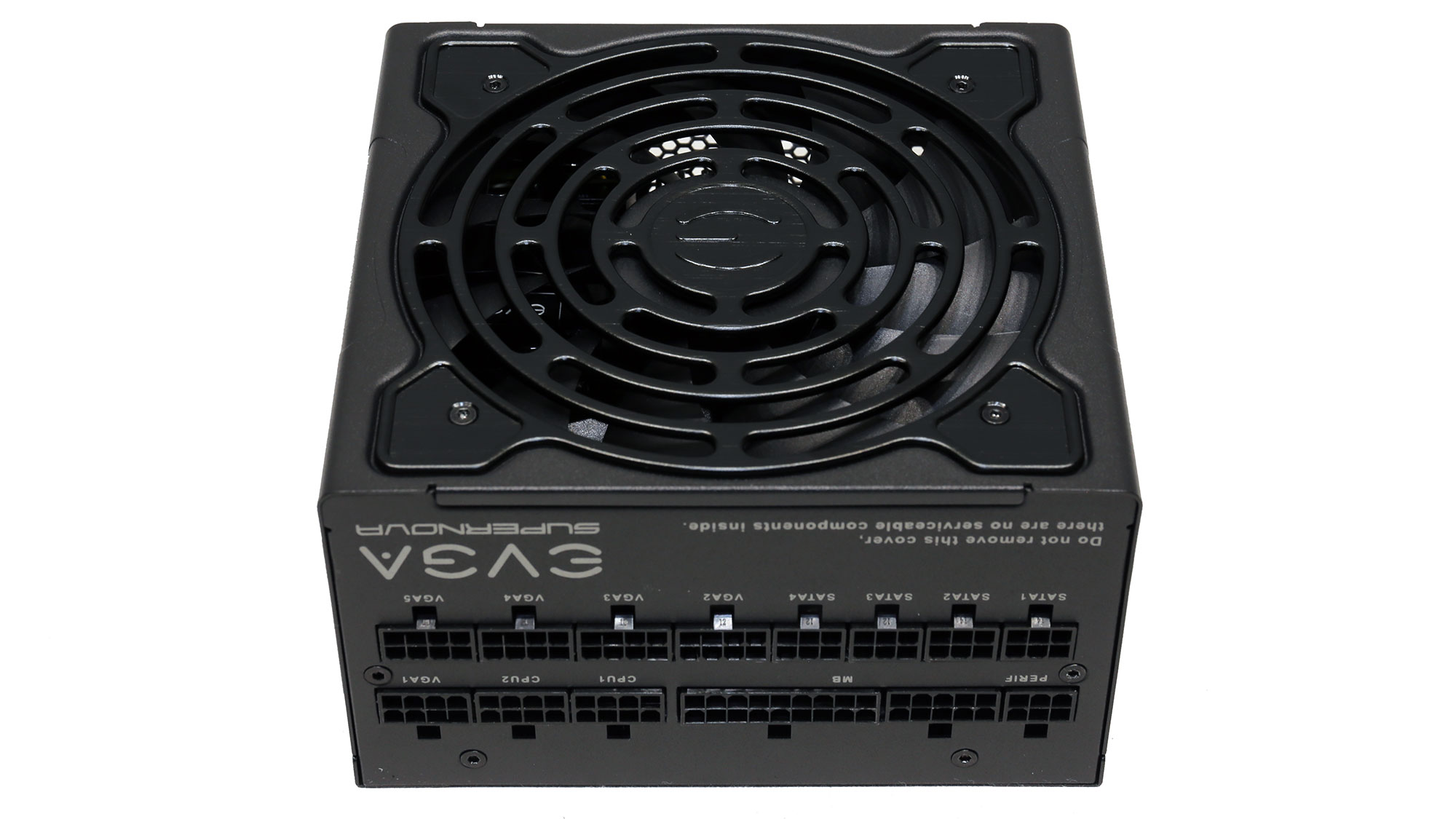
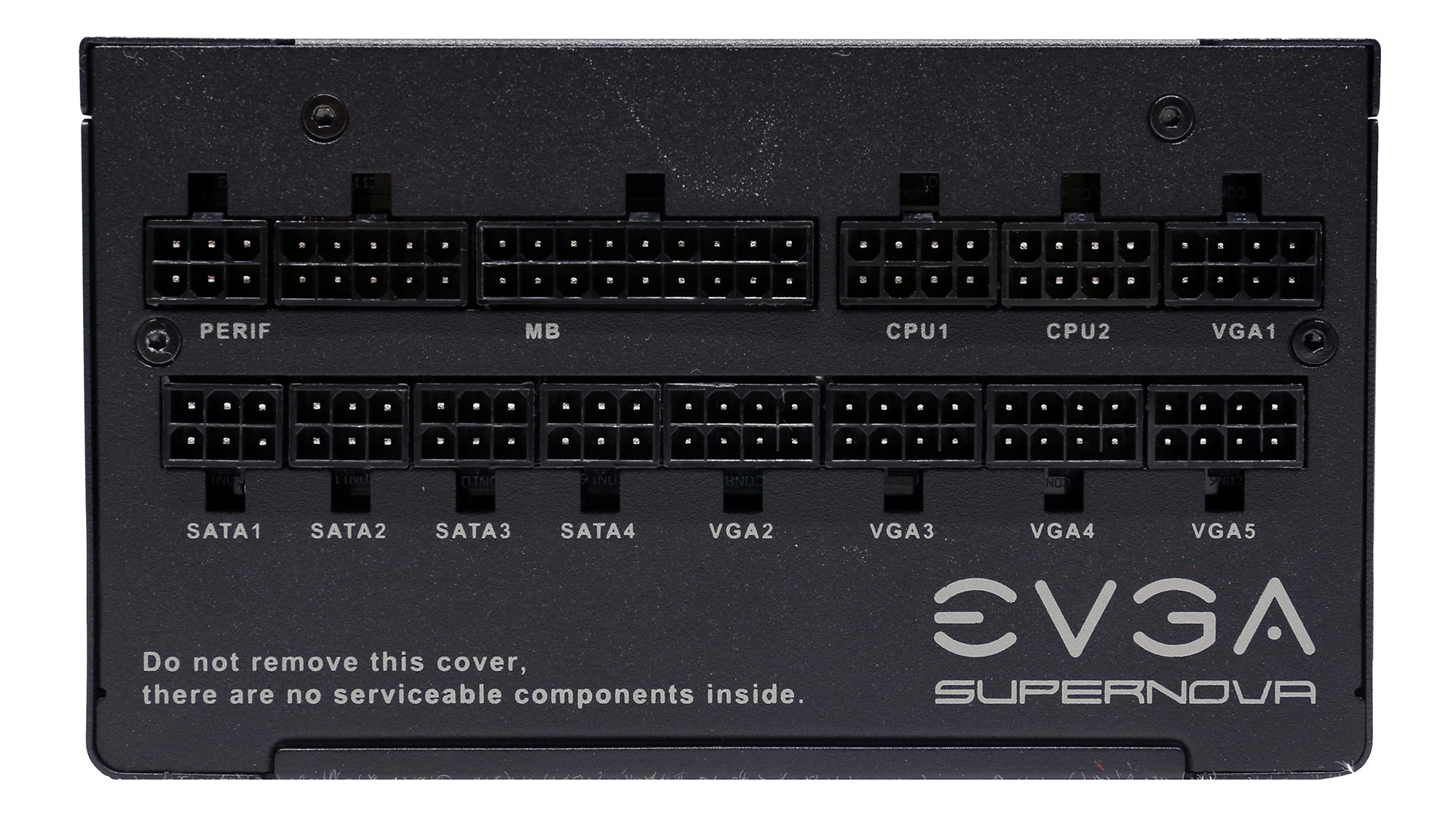
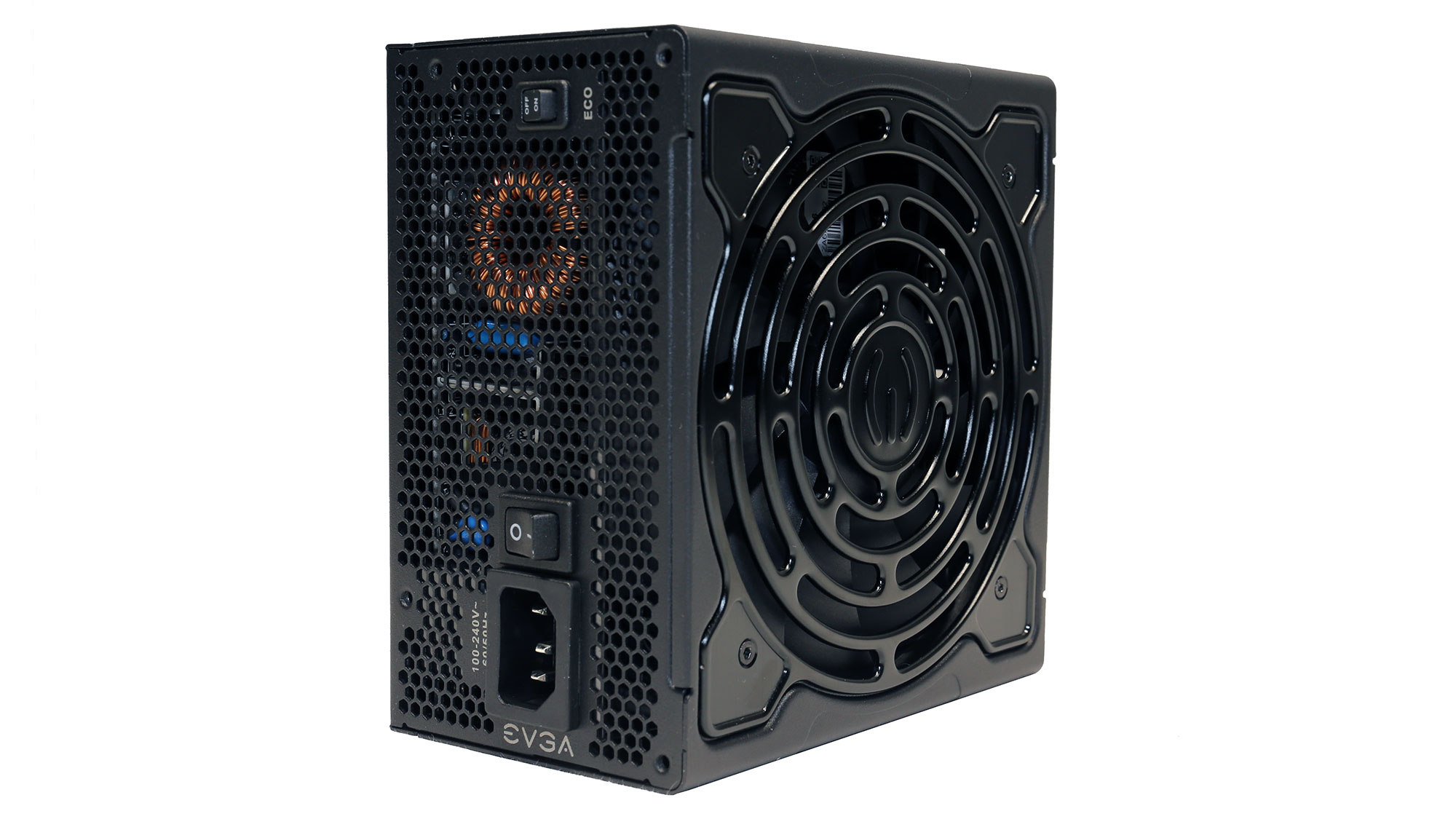
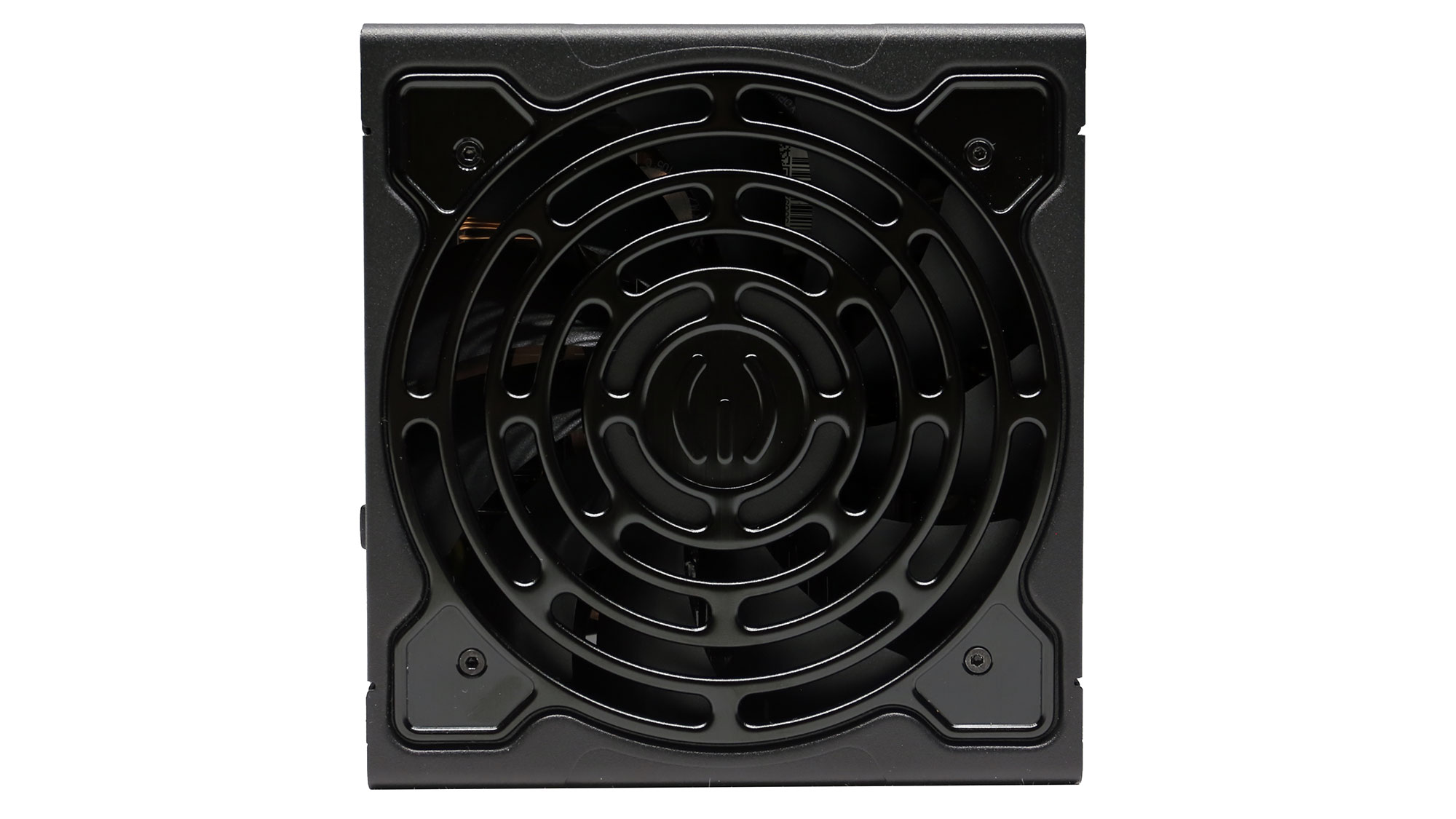
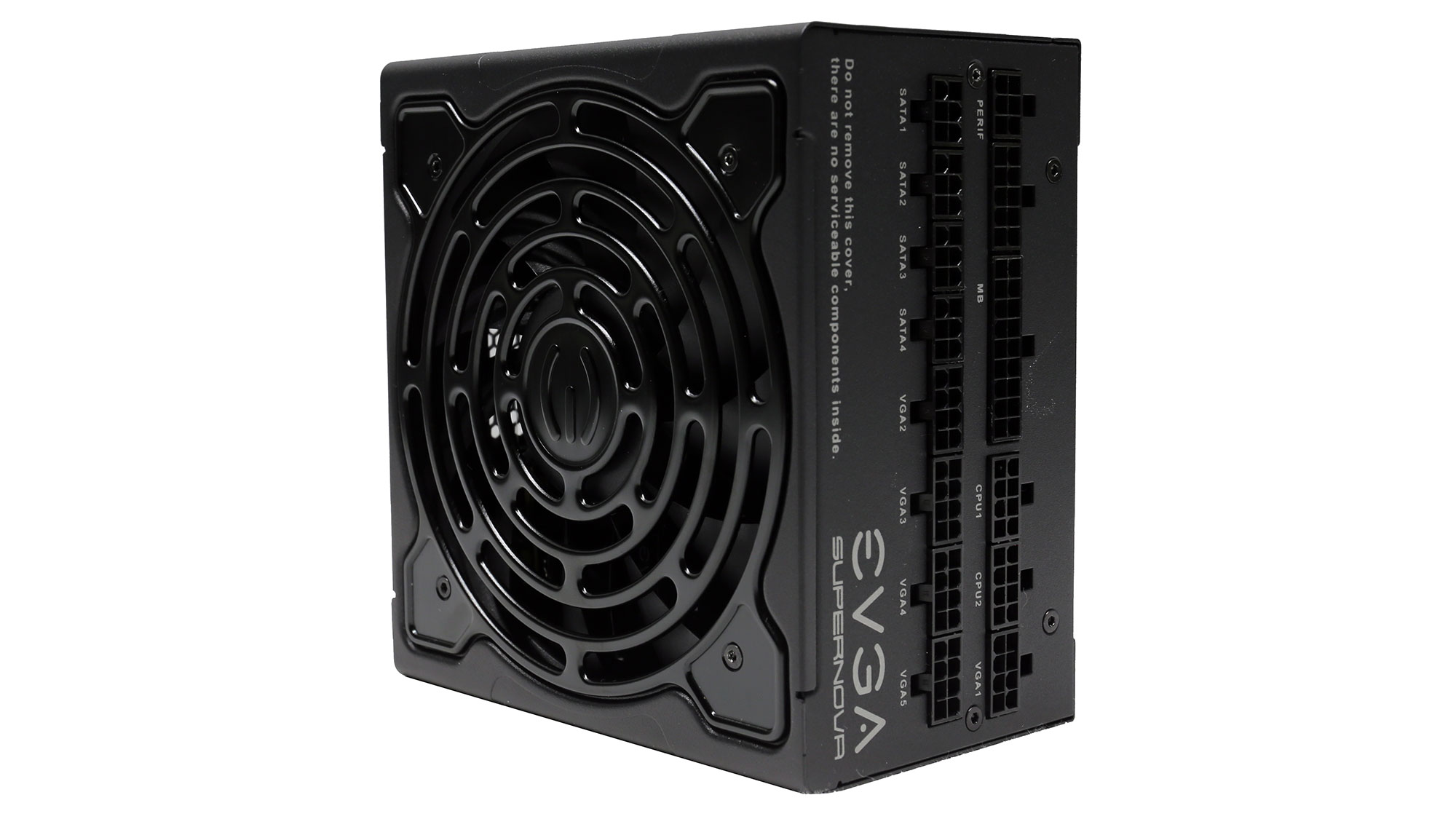
Compared to 1000 G3, the similar capacity G6 model is smaller thanks to its 140mm depth. The 135mm fan barely fits in its chassis. Like we said earlier, EVGA uses an upgraded Seasonic Focus platform for its G6 models, so we expect high performance and increased reliability even with the small size. The PSU features semi-passive operation (ECO mode), which you can deactivate if you want the fan to operate constantly. Lastly, all cables are modular, and the provided warranty is long, at ten years.
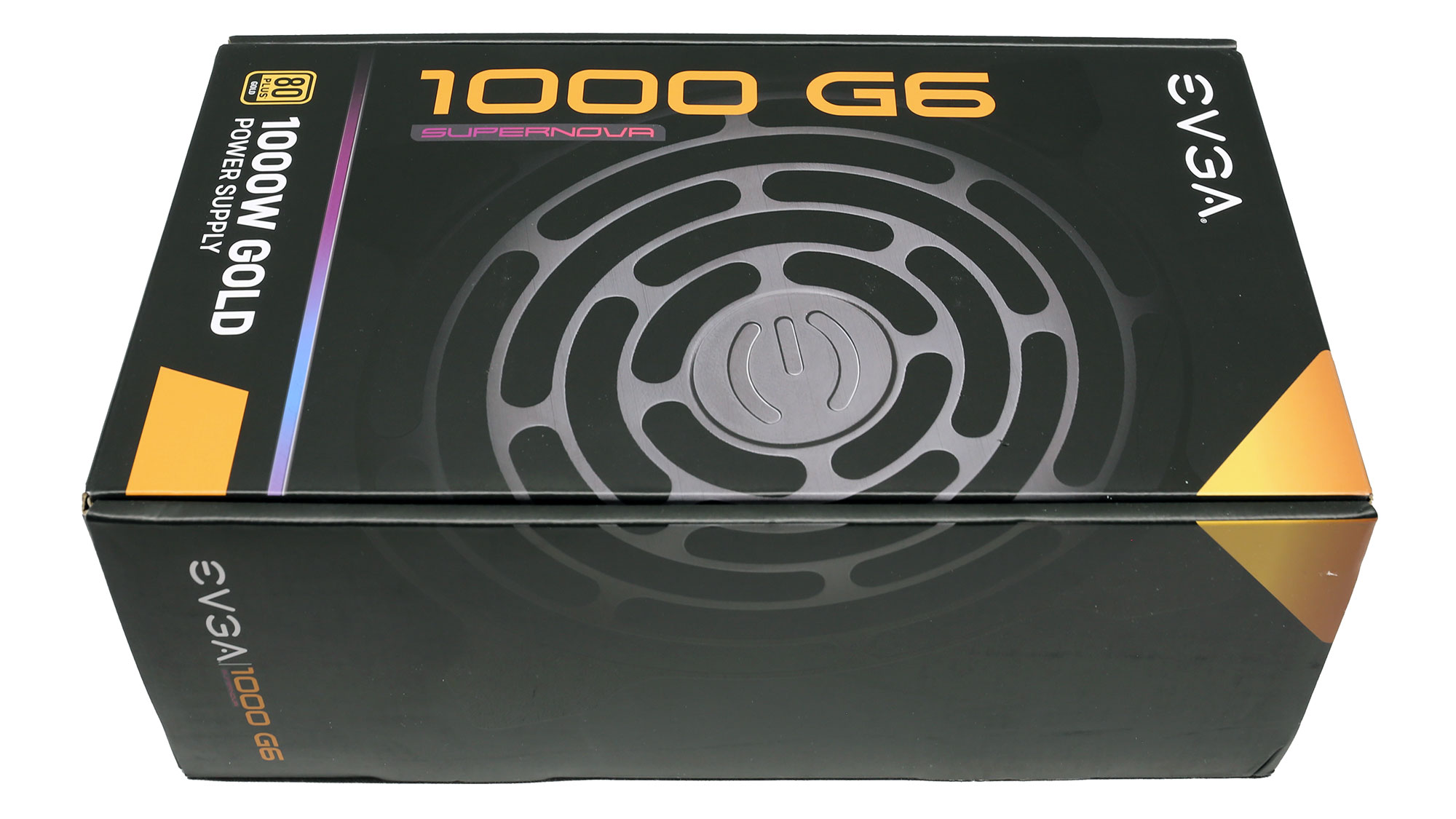
Product Photos
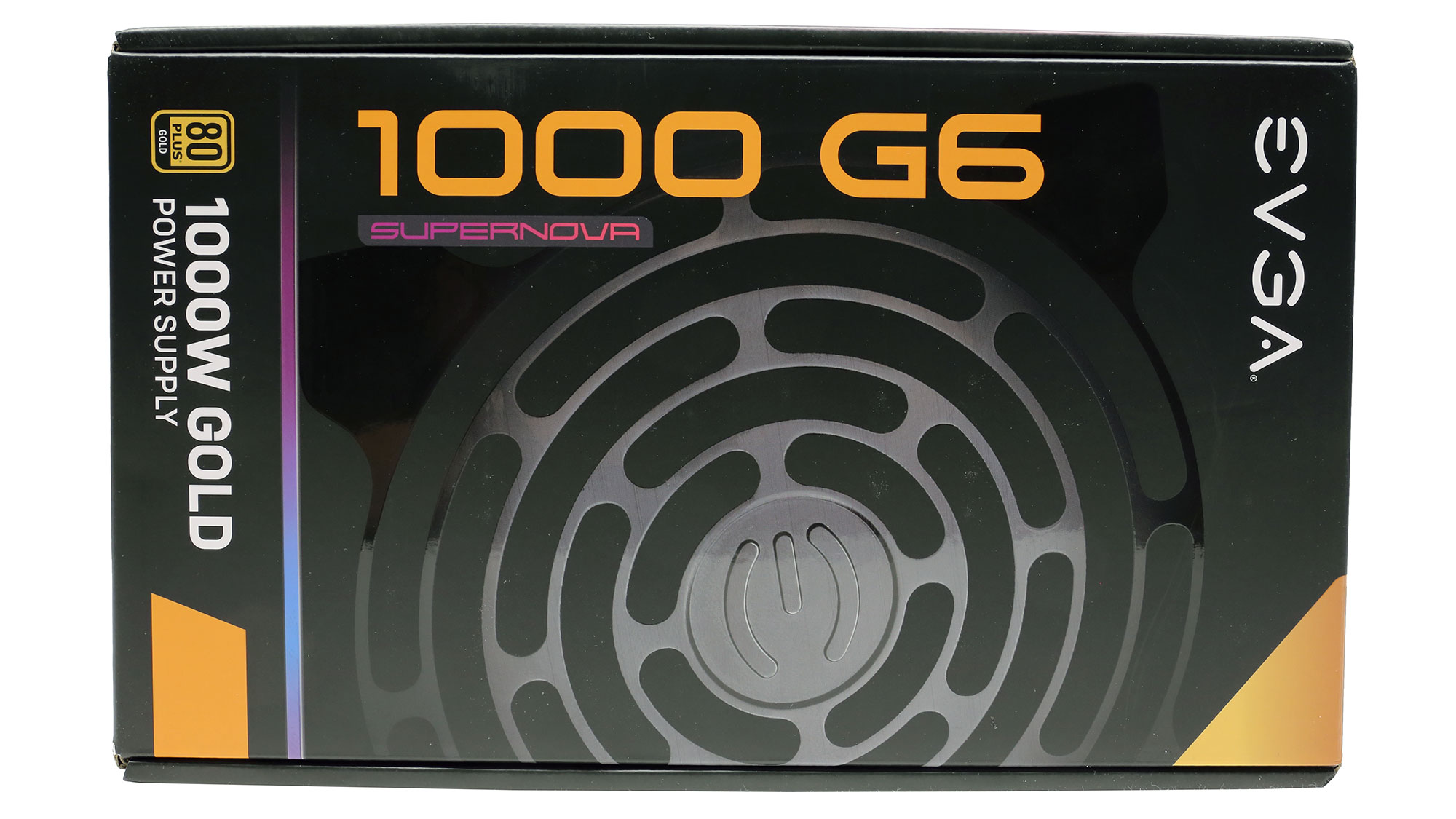
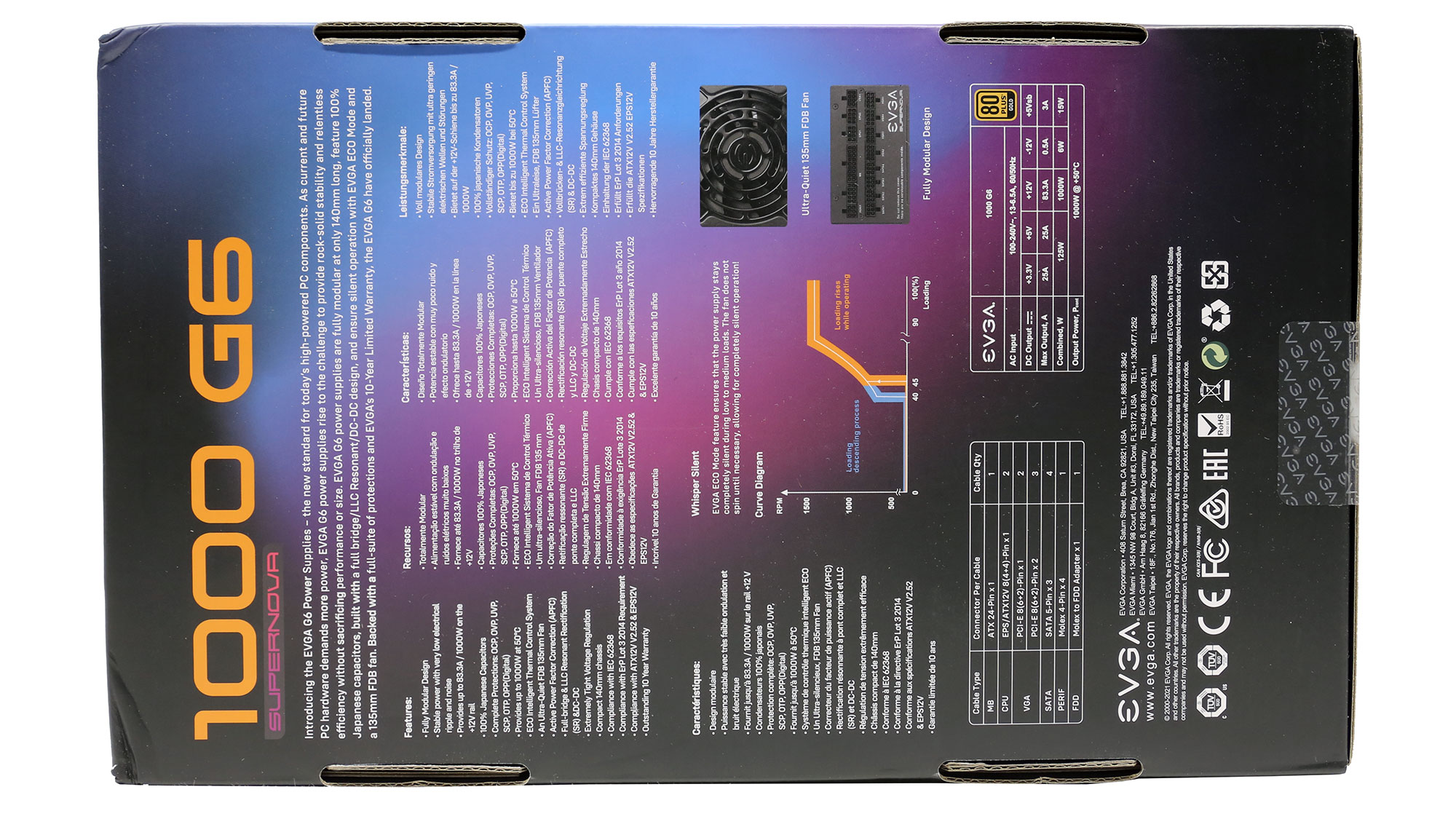
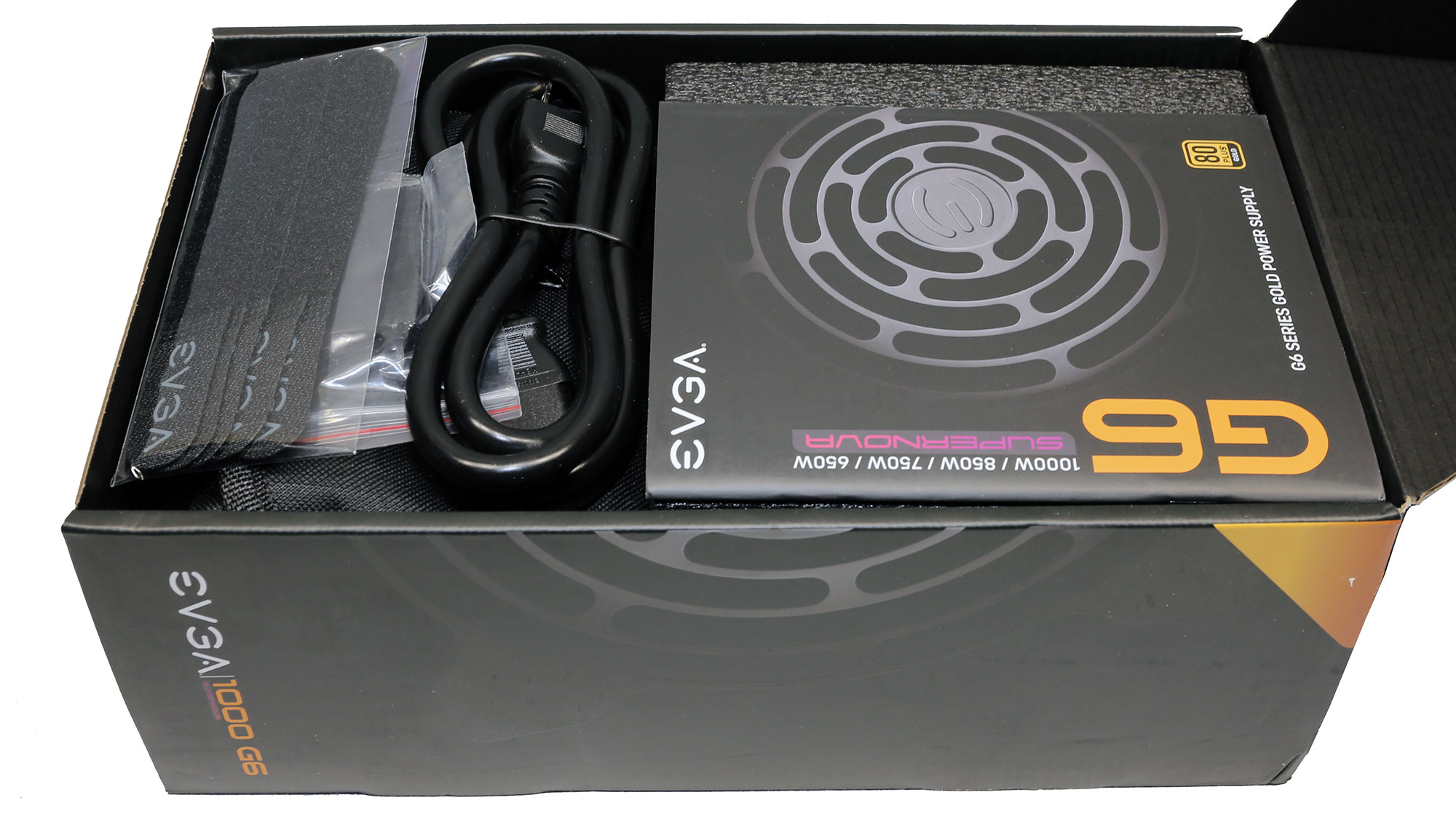
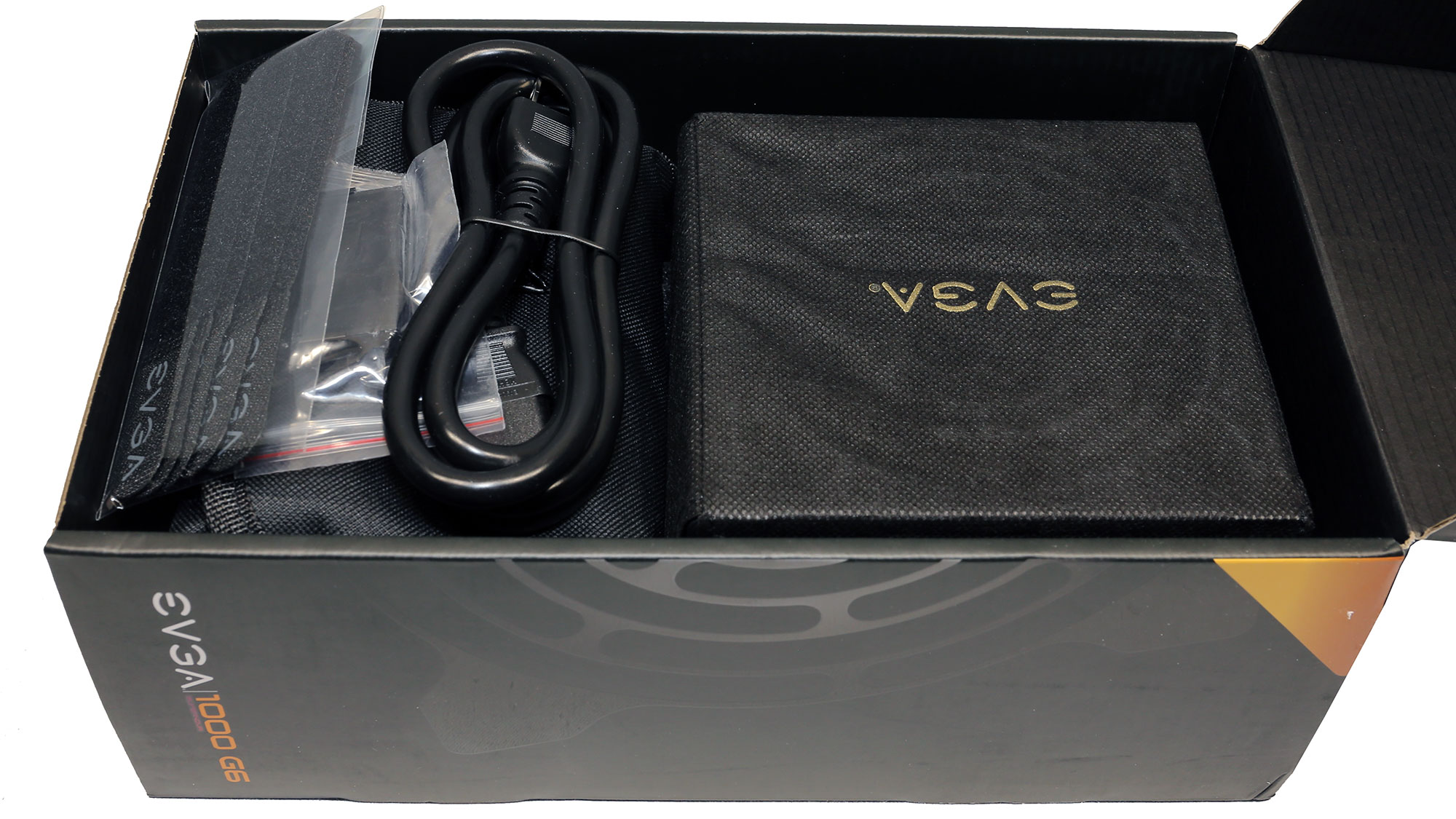
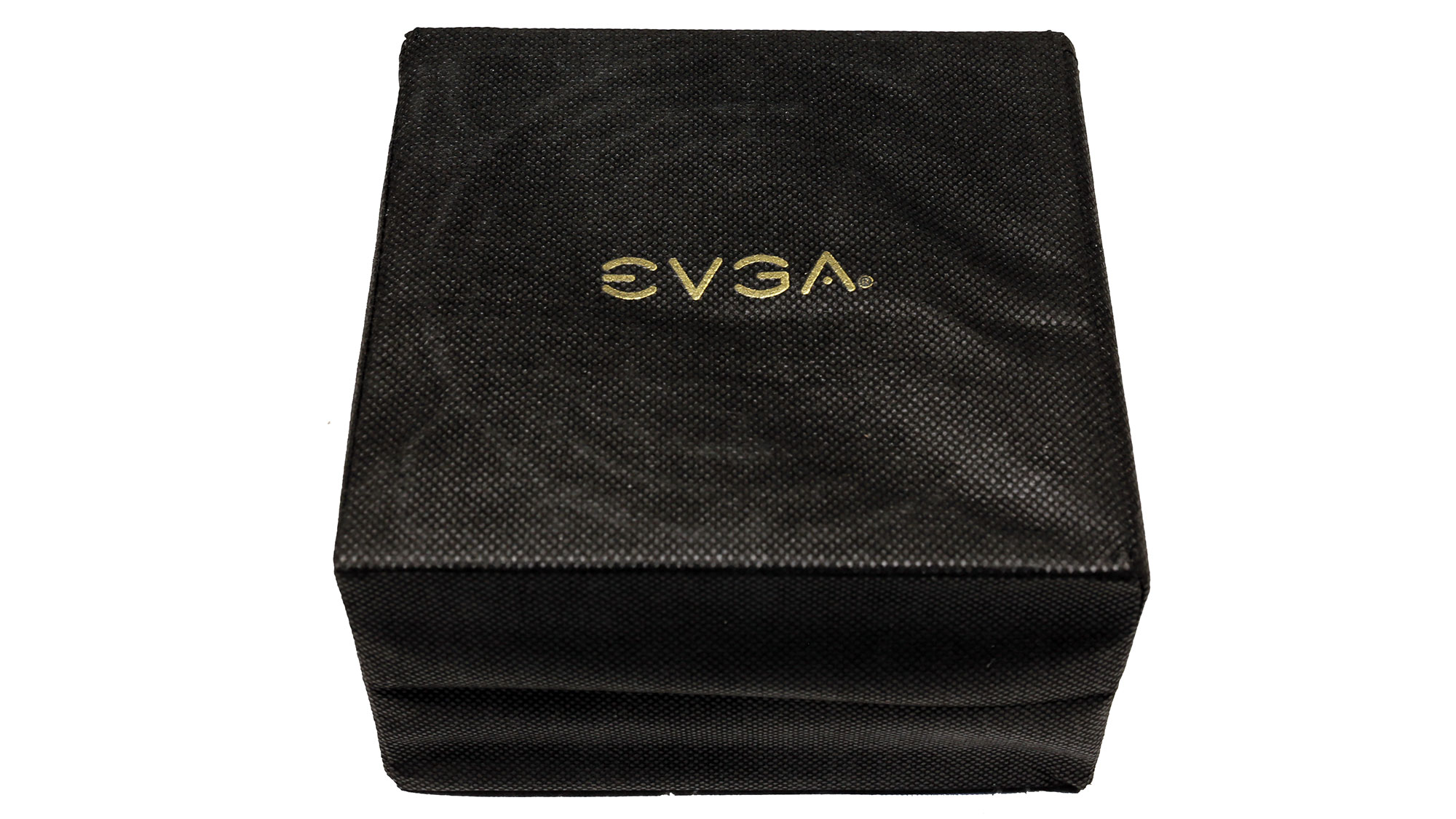
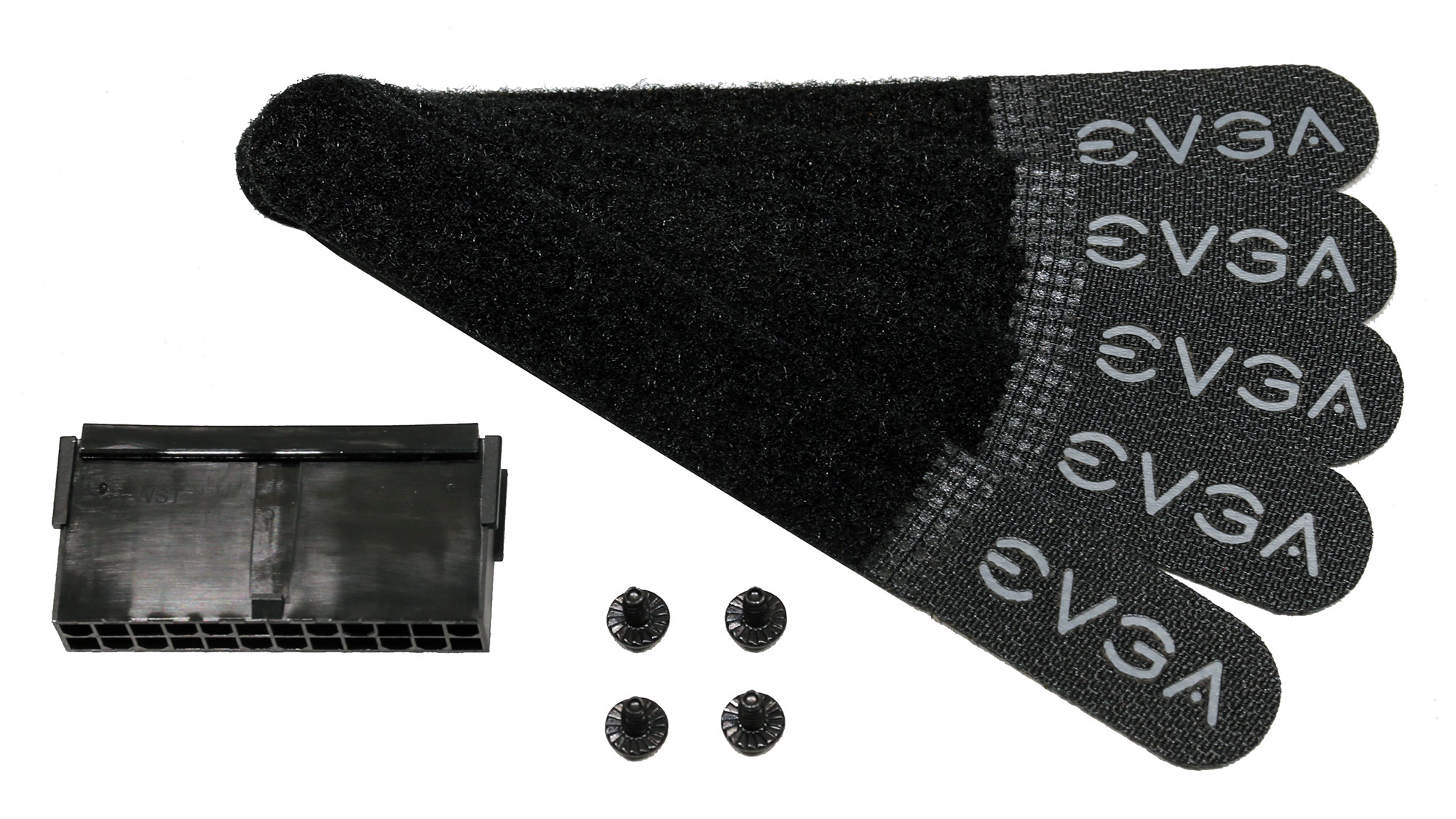
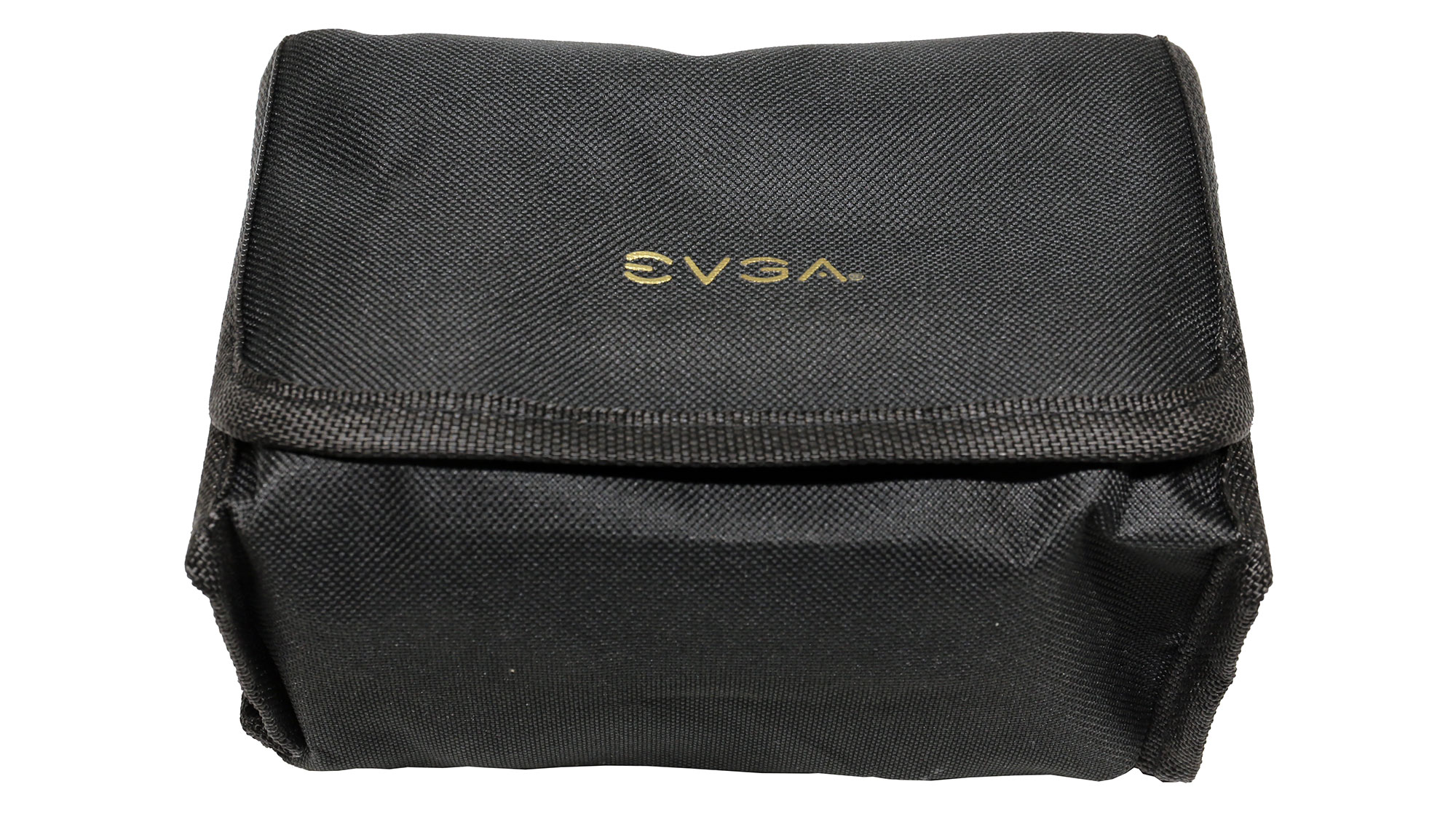
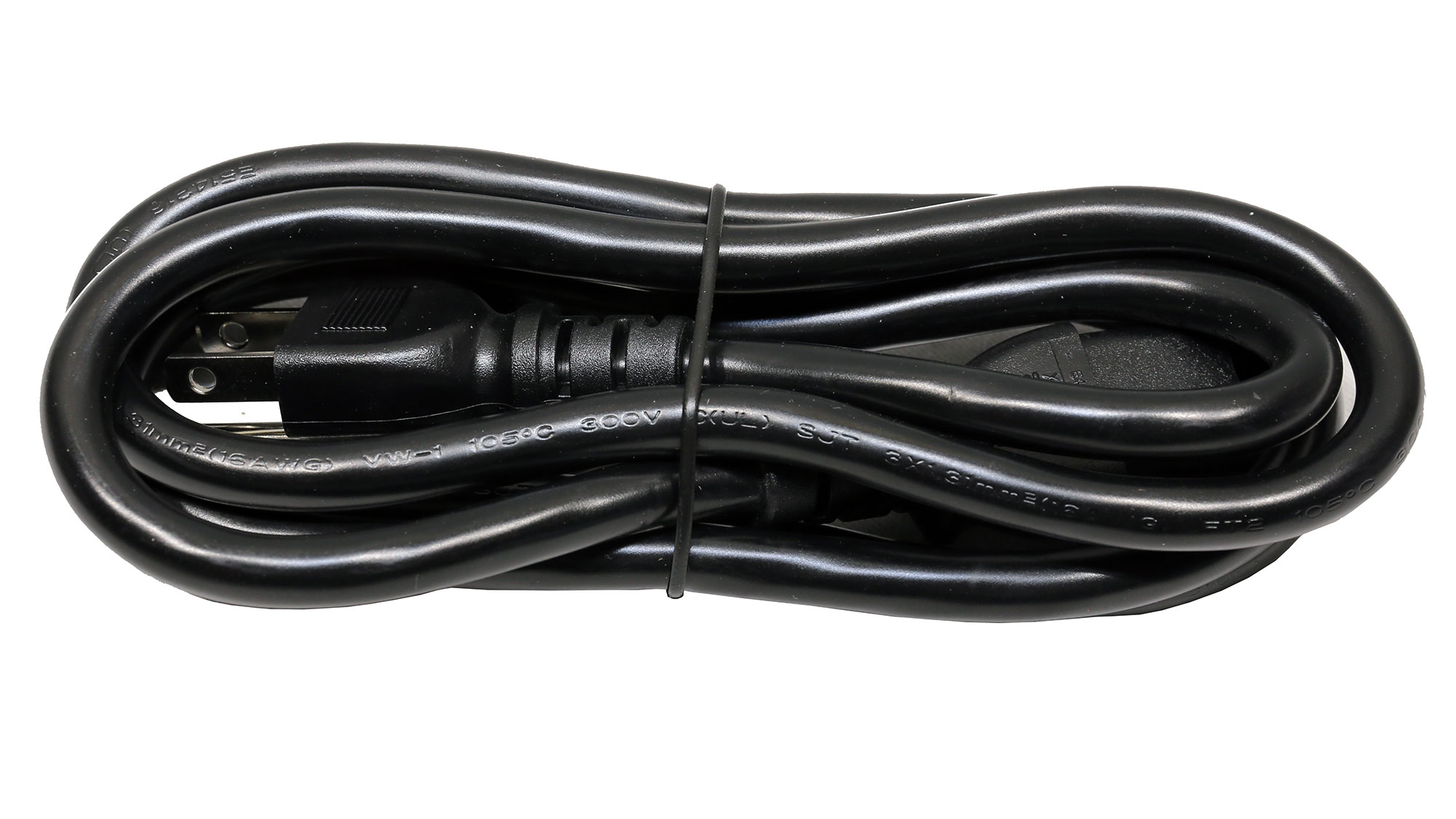
Specifications
|
Manufacturer (OEM) |
Seasonic |
|
Max. DC Output |
1000W |
|
Efficiency |
80 PLUS Gold, Cybenetics Gold (87-89%) |
|
Noise |
Cybenetics A- (25-30 dB[A]) |
|
Modular |
✓ (fully) |
|
Intel C6/C7 Power State Support |
✓ |
|
Operating Temperature (Continuous Full Load) |
0 - 50°C |
|
Over Voltage Protection |
✓ |
|
Under Voltage Protection |
✓ |
|
Over Power Protection |
✓ |
|
Over Current (+12V) Protection |
✓ |
|
Over Temperature Protection |
✓ |
|
Short Circuit Protection |
✓ |
|
Surge Protection |
✓ |
|
Inrush Current Protection |
✓ |
|
Fan Failure Protection |
✗ |
|
No Load Operation |
✓ |
|
Cooling |
135mm Fluid Dynamic Bearing Fan (HA13525H12F-Z) |
|
Semi-Passive Operation |
✓ (selectable) |
|
Dimensions (W x H x D) |
150 x 85 x 140mm |
|
Weight |
1.71 kg (3.77 lb) |
|
Form Factor |
ATX12V v2.53, EPS 2.92 |
|
Warranty |
10 Years |
Power Specifications
| Rail | 3.3V | 5V | 12V | 5VSB | -12V | |
|---|---|---|---|---|---|---|
| Max. Power | Amps | 25 | 25 | 62.5 | 3 | 0.5 |
| Watts | 125 | 1000 | 15 | 6 | ||
| Total Max. Power (W) | 1000 |
Cables & Connectors
| Description | Cable Count | Connector Count (Total) | Gauge | In Cable Capacitors |
|---|---|---|---|---|
| ATX connector 20+4 pin (610mm) | 1 | 1 | 18-22AWG | No |
| 4+4 pin EPS12V (700mm) | 2 | 2 | 16AWG | No |
| 6+2 pin PCIe (700mm+125mm) | 3 | 6 | 16-18AWG | No |
| 6+2 pin PCIe (700mm) | 2 | 2 | 18AWG | No |
| SATA (560mm+110mm+110mm) | 4 | 12 | 18AWG | No |
| 4-pin Molex (560mm+100mm+100mm+100mm) | 1 | 4 | 18AWG | No |
| FDD Adapter (105mm) | 1 | 1 | 22AWG | No |
| AC Power Cord (1400mm) - C13 coupler | 1 | 1 | 16AWG | - |
This PSU comes with plenty of cables and connectors, including two EPS, eight PCIe, which are overkill even for a 1000W PSU, 12 SATA, and four 4-pin Molex. There is even a floppy adapter for those of you who still need a berg connector.
All cables are long, and there are no in-cable caps. Finally, all the cables are flat except for the 24-pin ATX cable, which is fully sleeved.
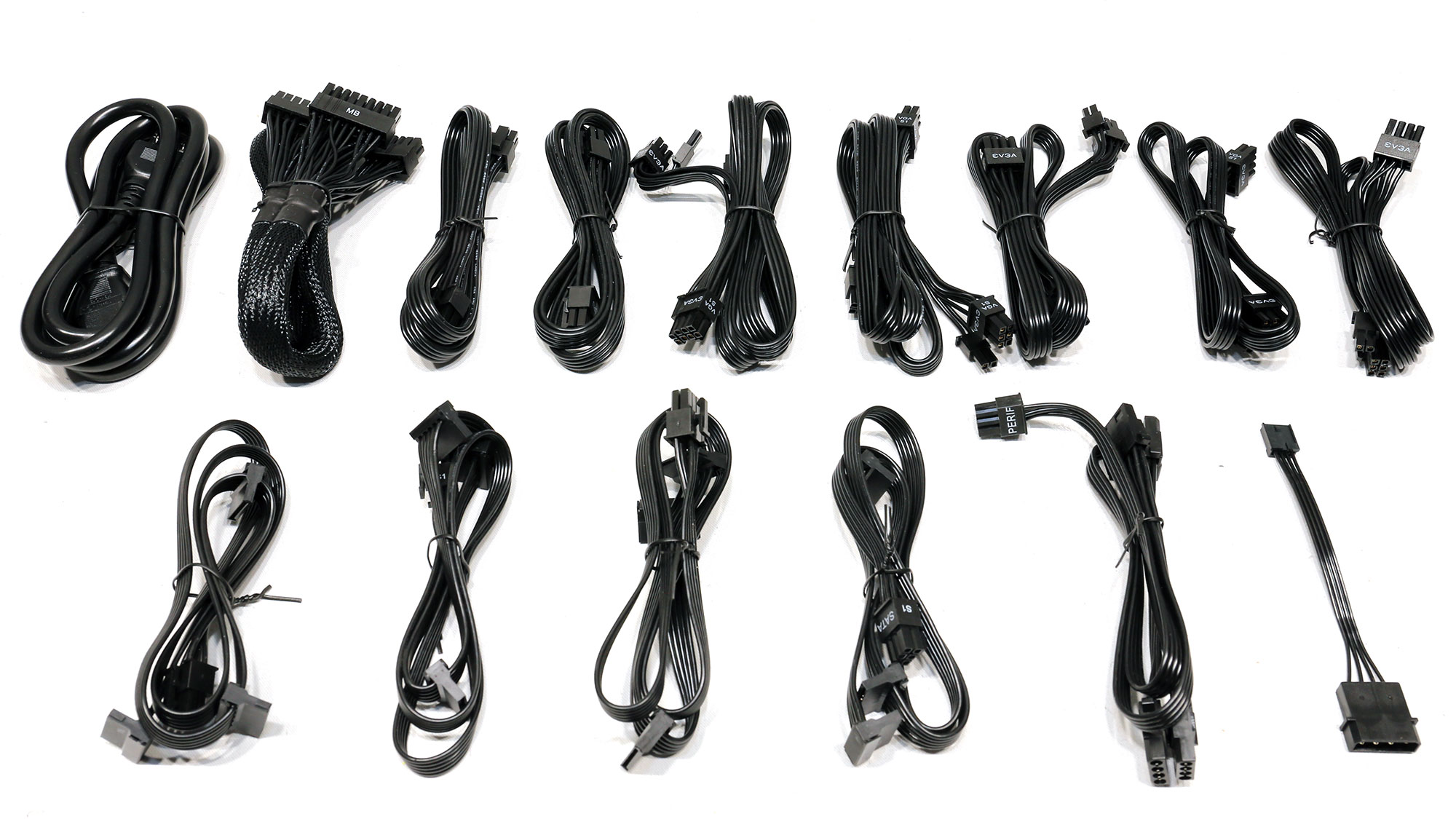
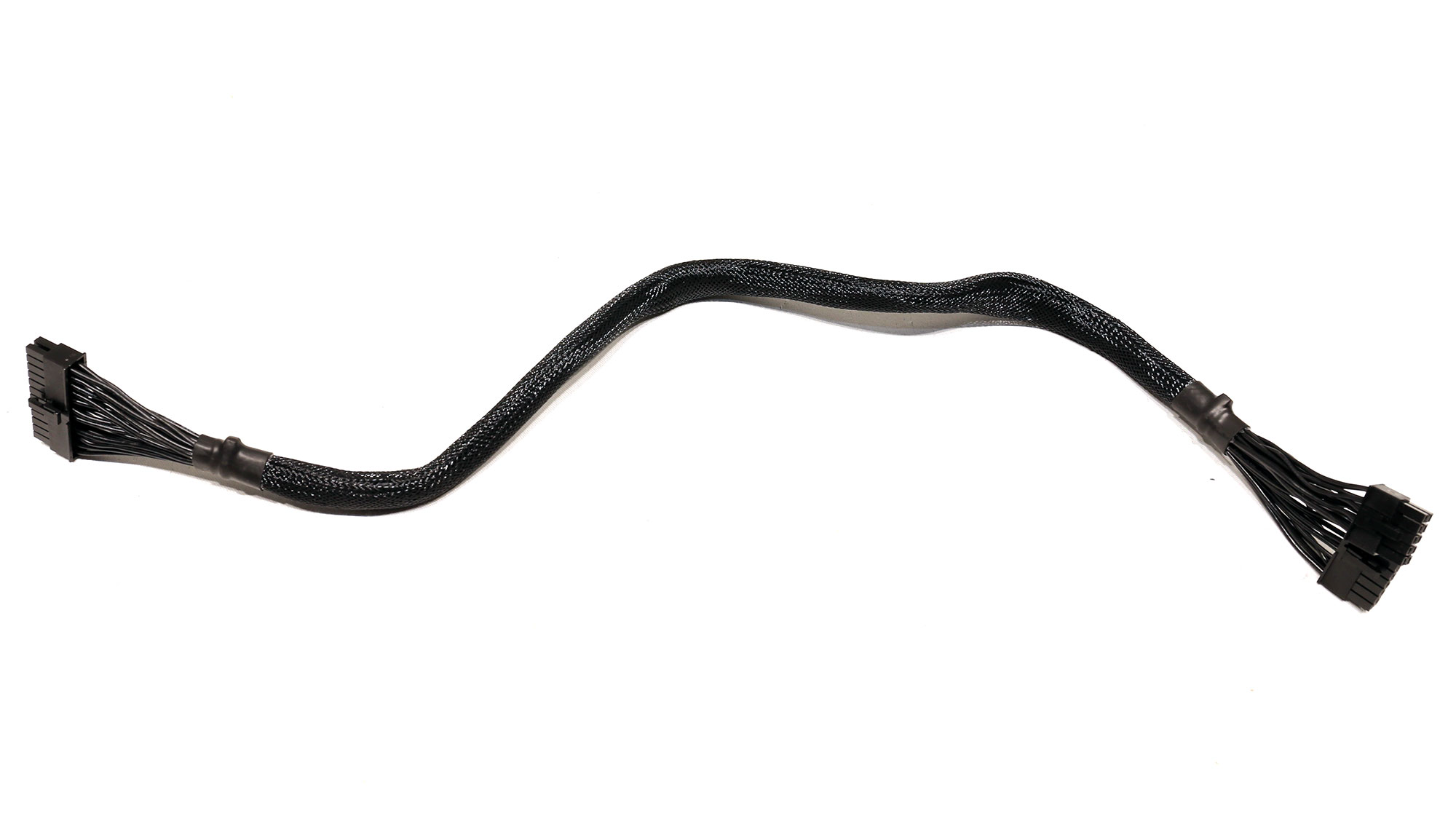
Cable Photos
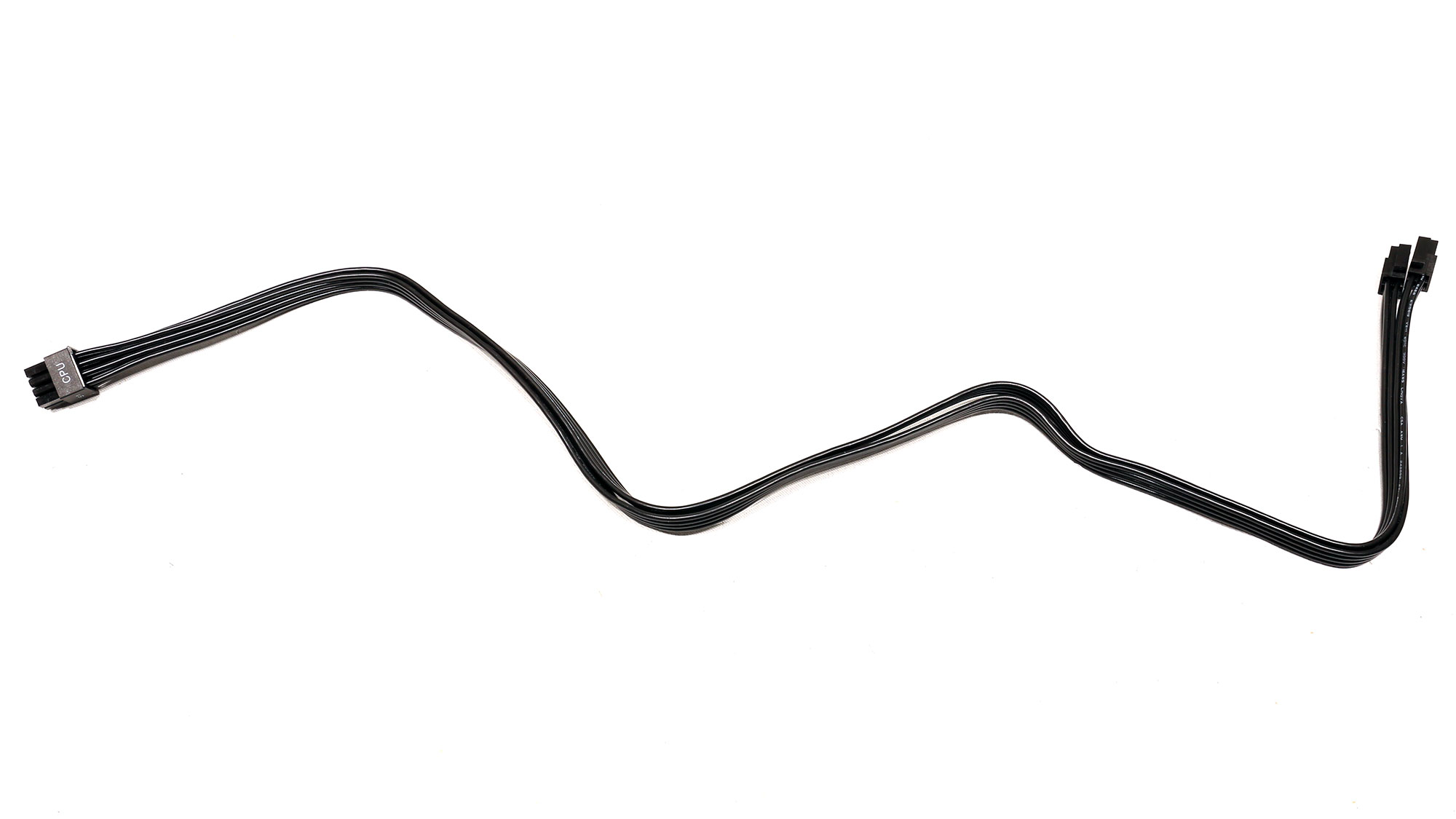
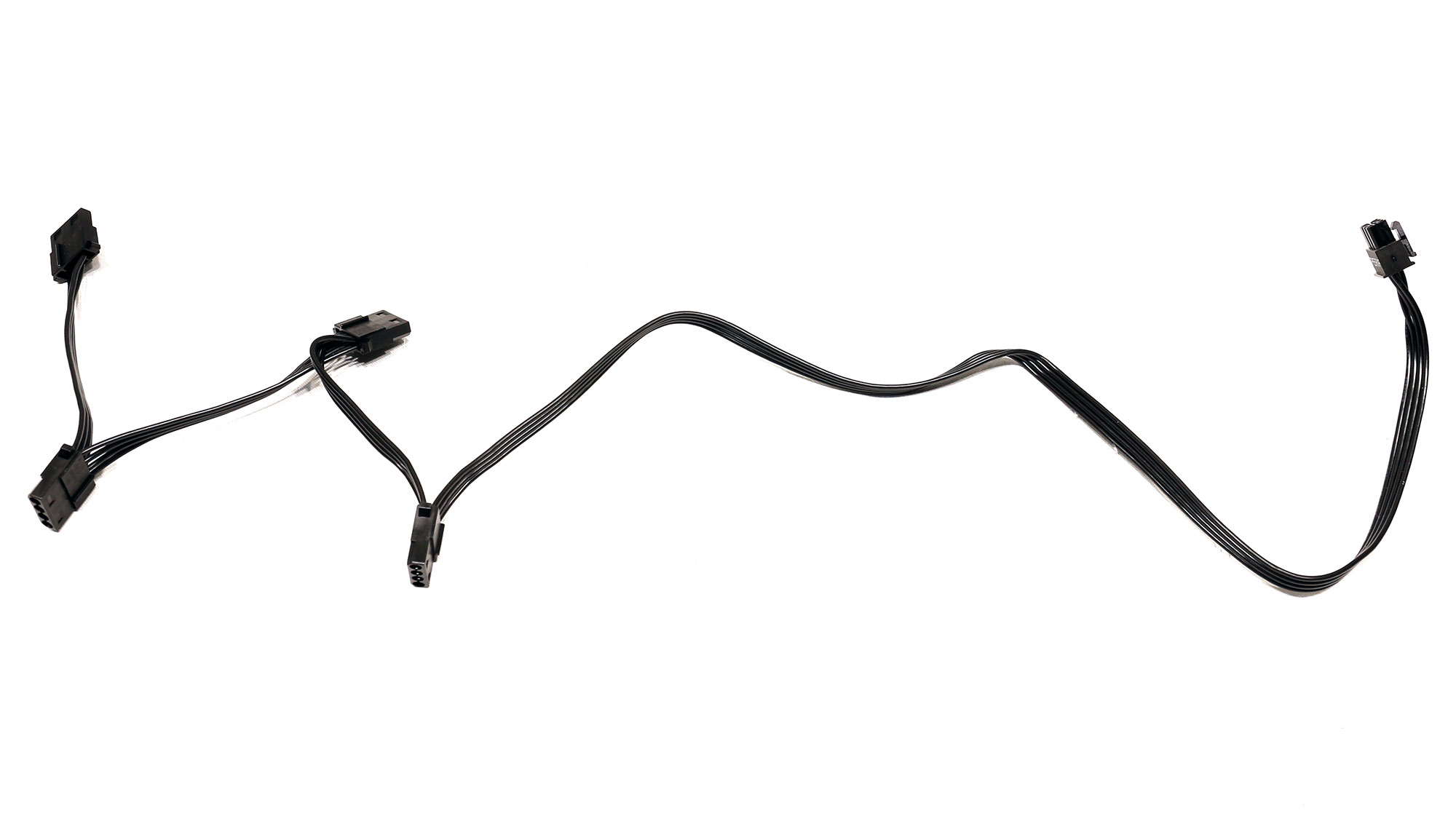
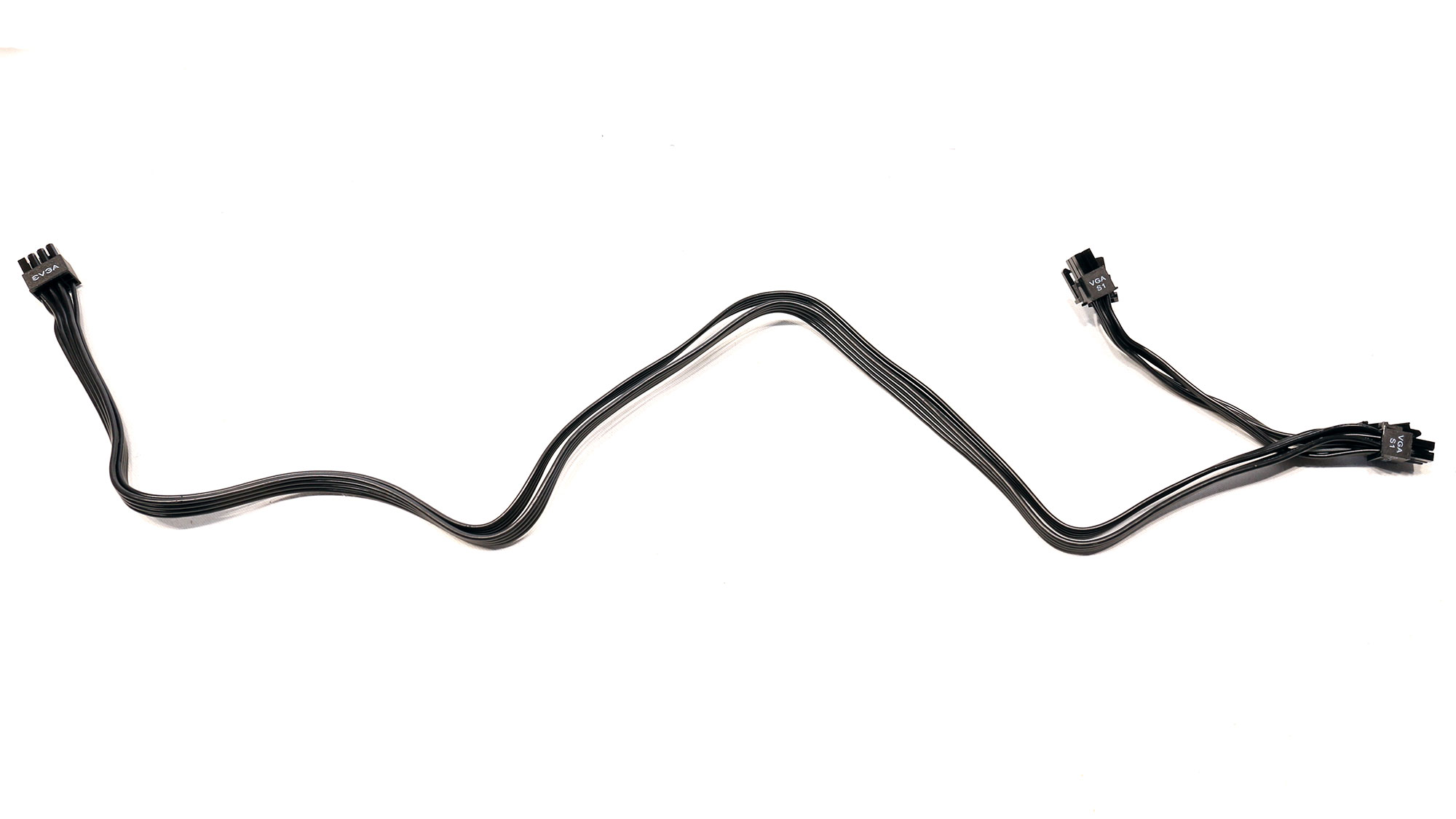
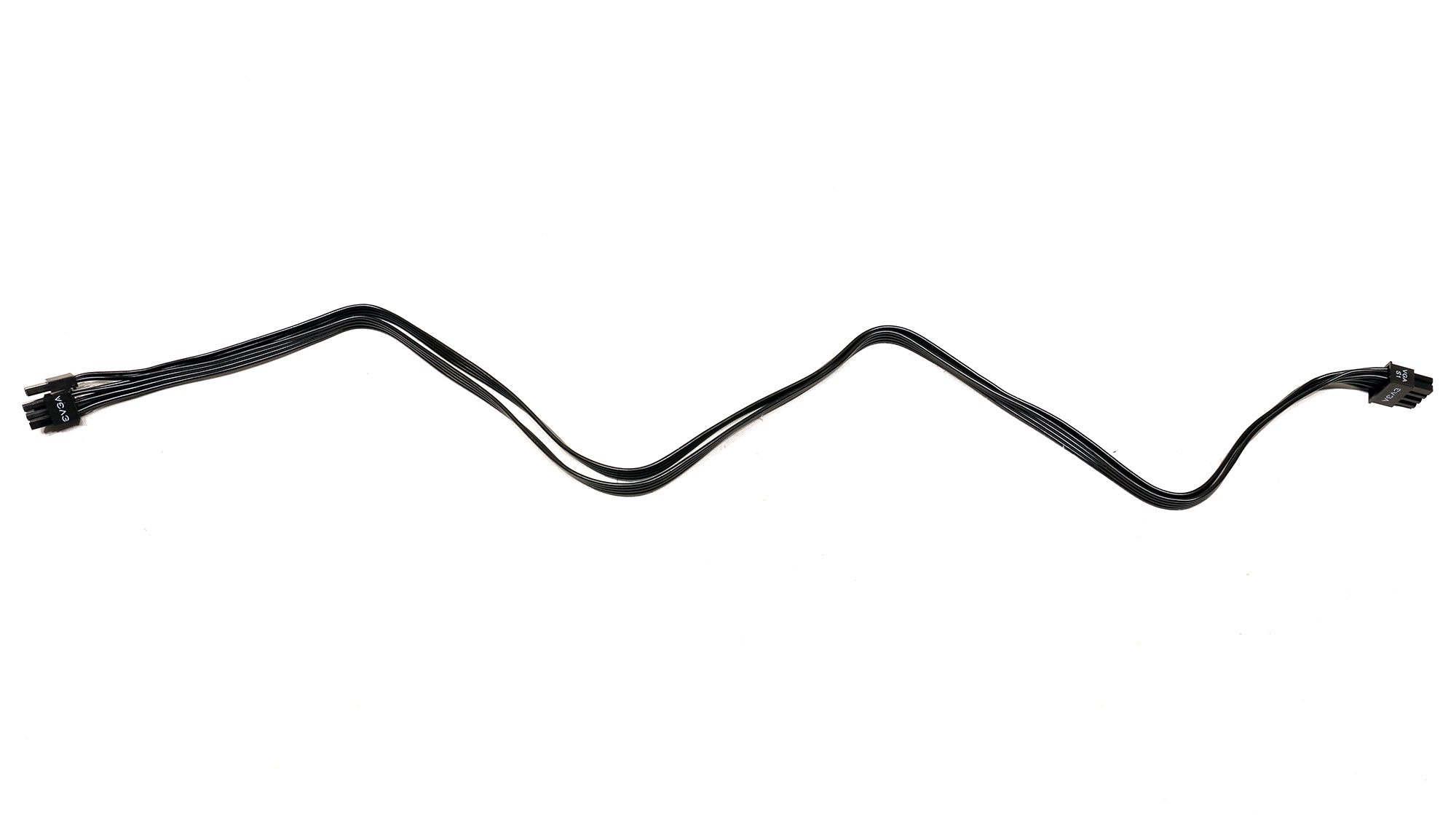
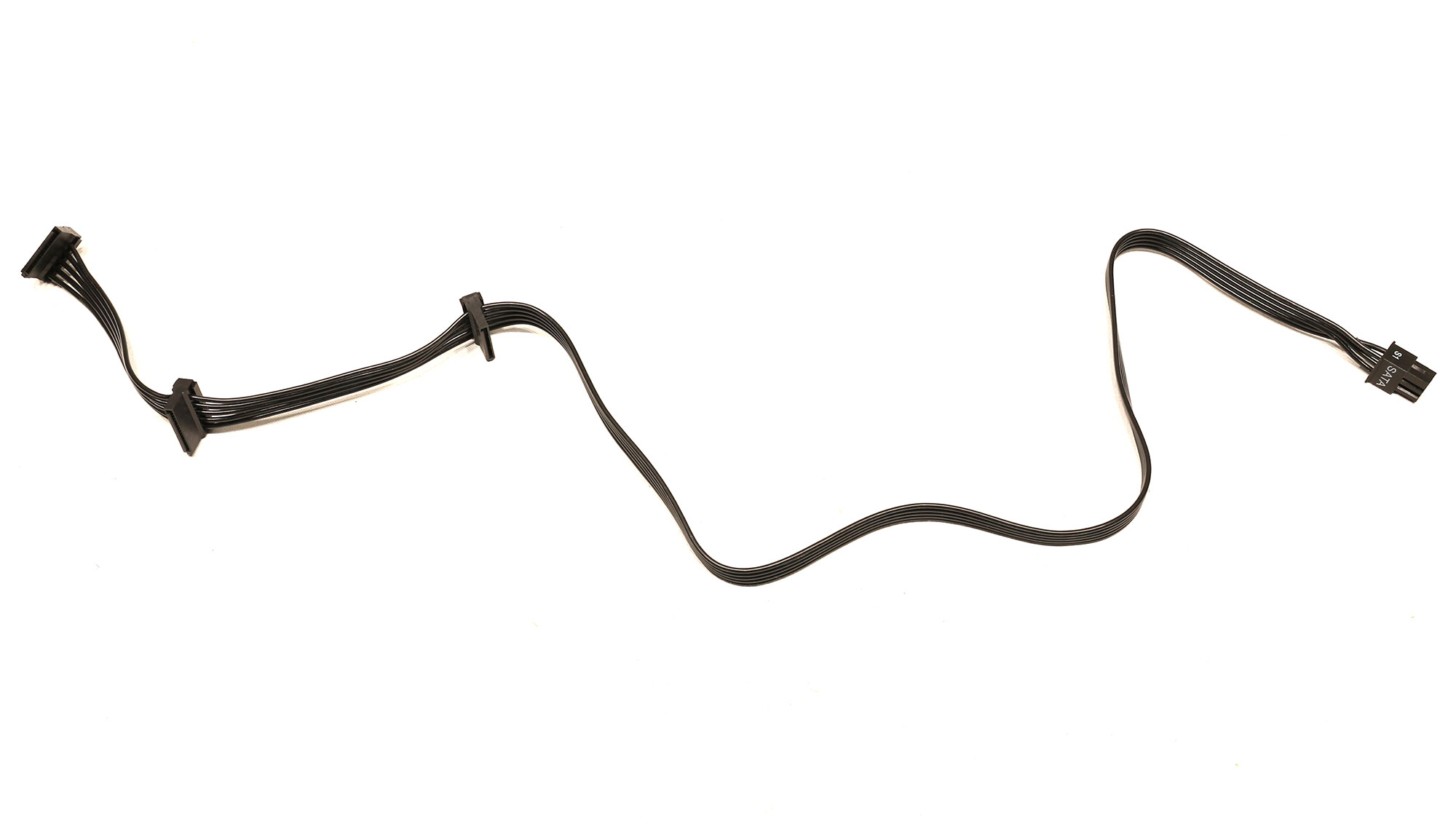
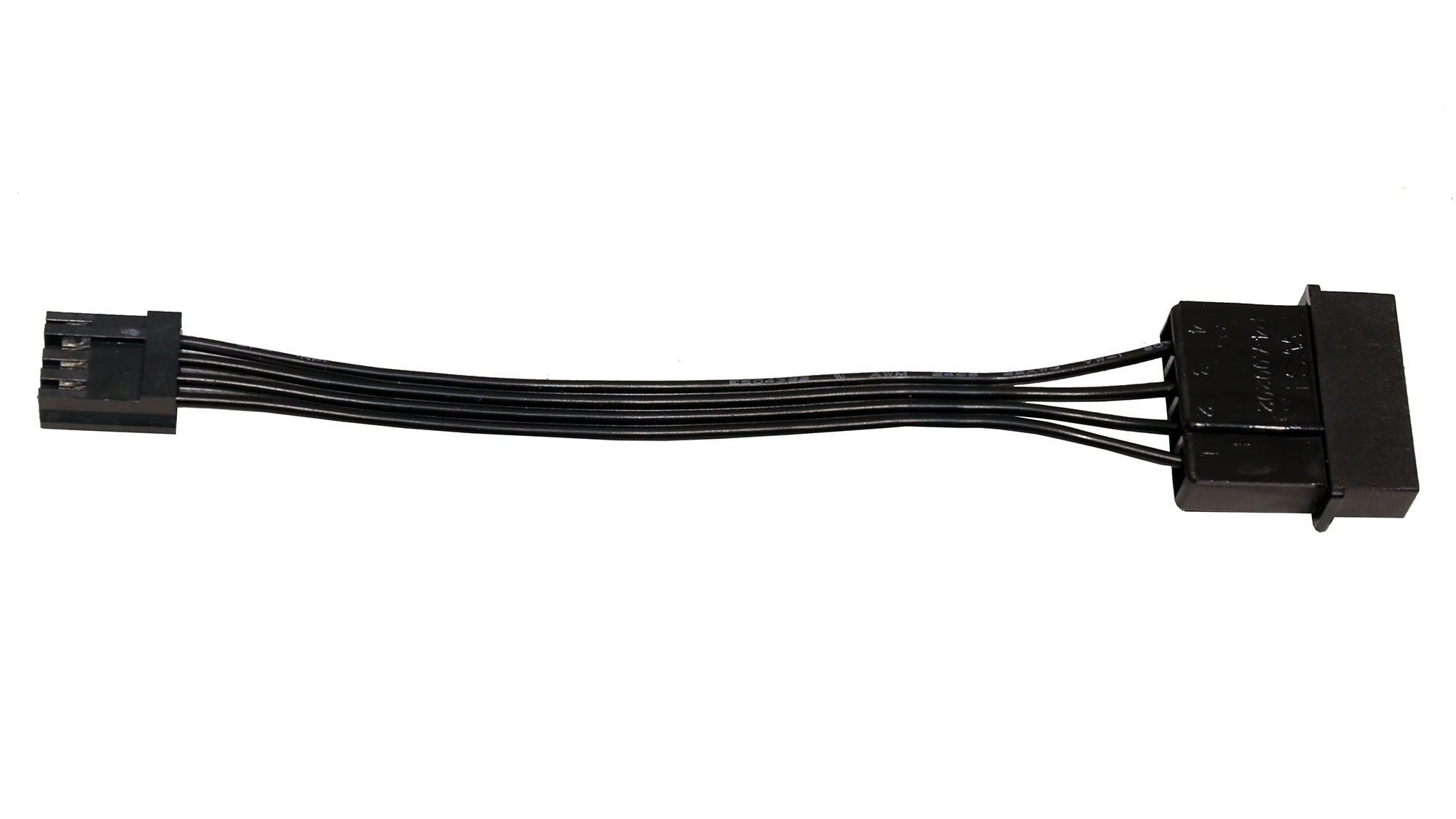
Component Analysis
Is this your first time buying a power supply? Before reading on, we strongly encourage you to look through our PSUs 101 article, which provides valuable information about PSUs and their operation, allowing you to better understand the components we're about to discuss.
| General Data | - |
| Manufacturer (OEM) | Seasonic |
| PCB Type | Double Sided |
| Primary Side | - |
| Transient Filter | 4x Y caps, 2x X caps, 2x CM chokes, 1x MOV, 1x Discharge IC |
| Inrush Protection | NTC Thermistor MF72-5D20L (5 Ohm) & Relay |
| Bridge Rectifier(s) | 2x GBUE2560 (600V, 25A @ 140°C) |
| APFC MOSFETs | 2x Infineon IPA60R099P6 (600V, 24A @ 100°C, Rds(on): 0.099Ohm) |
| APFC Boost Diode | 1x STMicroelectronics STPSC10H065 (650V, 10A @ 135°C) |
| Bulk Cap(s) | 2x Nippon Chemi-Con (420V, 470uF each or 940uF combined, 2,000h @ 105°C, KMZ) |
| Main Switchers | 4x Infineon IPA60R190P6 (600V, 12.7A @ 100°C, Rds(on): 0.19Ohm) |
| APFC Controller | Champion CM6500UN |
| Resonant Controller | Champion CU6901V |
| Topology | Primary side: APFC, Full-Bridge & LLC converter Secondary side: Synchronous Rectification & DC-DC converters |
| Secondary Side | - |
| +12V MOSFETs | 6x Nexperia PSMN1R4-40YLD (40V, 220A @ 100°C, Rds(on): 1.4mOhm) |
| 5V & 3.3V | DC-DC Converters: 6x 40030L PWM Controller(s): ANPEC APW7159C |
| Filtering Capacitors |
Electrolytic: 6x Nippon Chemi-Con (2-5,000h @ 105°C, KZE), 2x Nippon Chemi-Con (4-10,000h @ 105°C, KY), 1x Nippon Chemi-Con (2,000h @ 105°C, KZH), 3x Rubycon (3-6,000h @ 105°C, YXG) Polymer: 21x Nippon Chemi-Con, 13x FPCAP |
| Supervisor IC | Weltrend WT7527RA (OCP, OVP, UVP, SCP, PG) & Weltrend WT51F104 (Firmware OPP) |
| Fan Controller | Weltrend WT51F104 |
| Fan Model | Hong Hua HA13525H12F-Z (135mm, 12V, 0.50A, Fuid DynamicBearing Fan) |
| 5VSB Circuit | - |
| Rectifier | 1x M.C.C. MBR1045ULPS SBR (45V, 10A) |
| Standby PWM Controller | Excelliance MOS EM8569C |
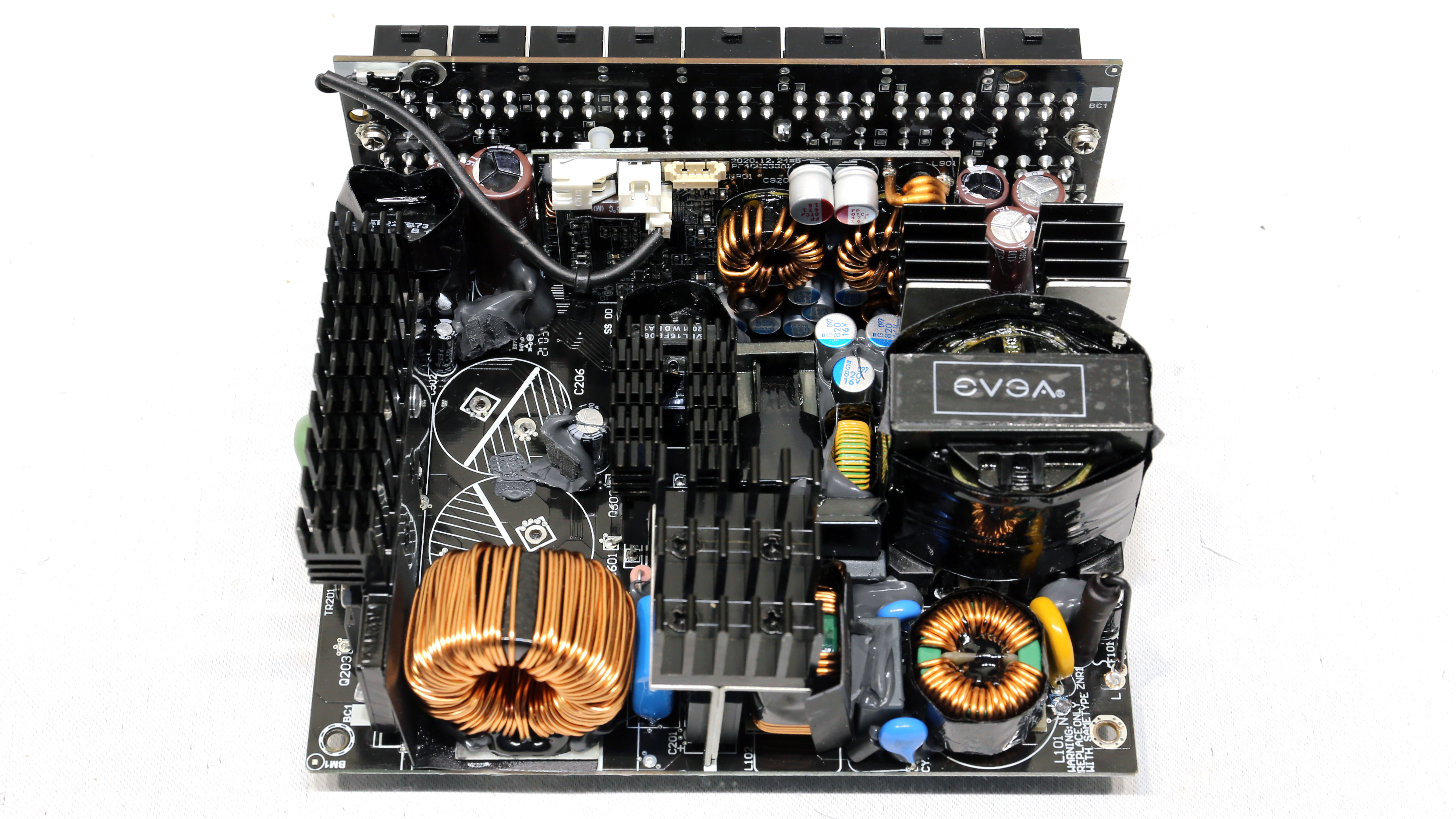
Overall Photos
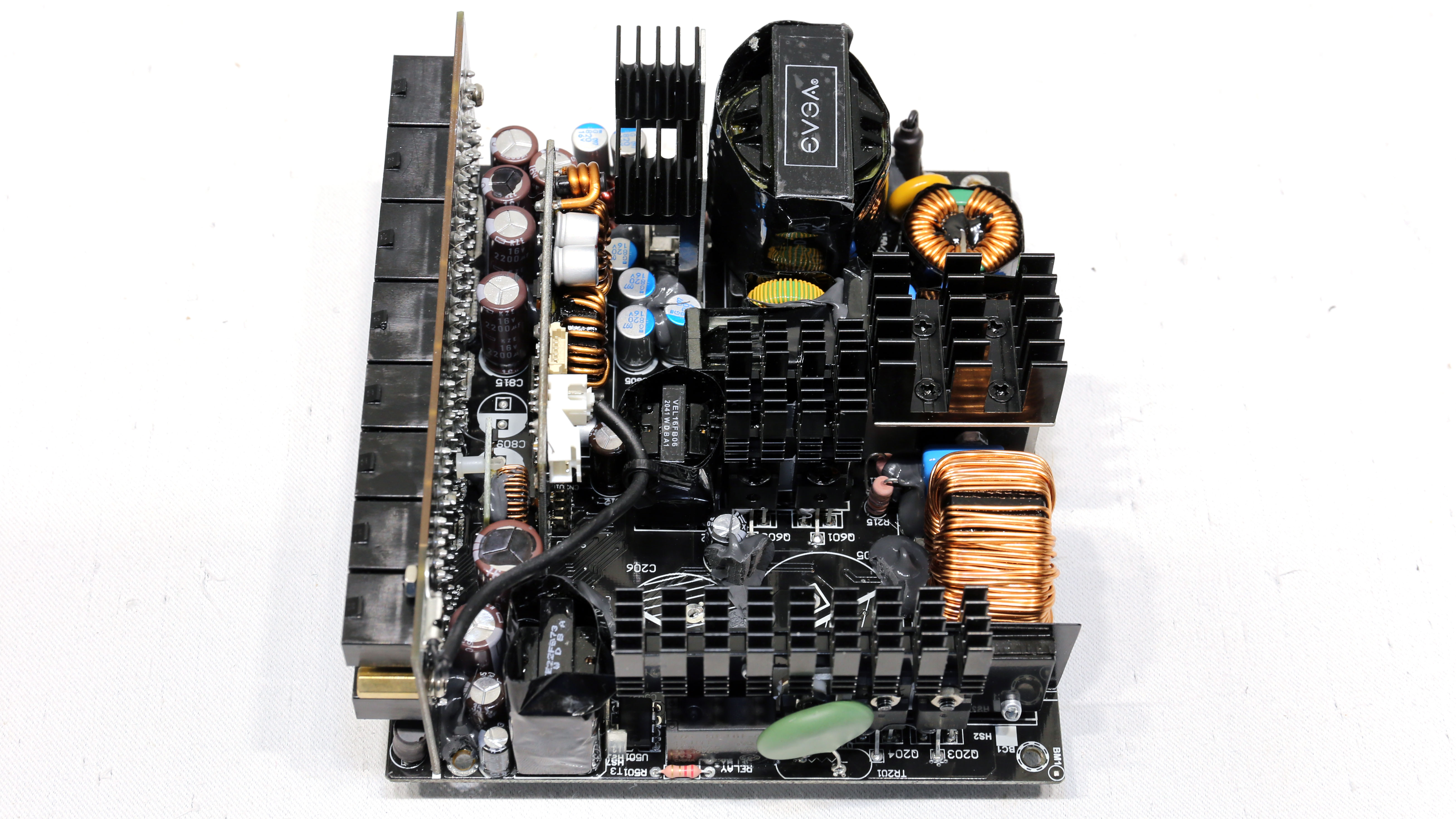
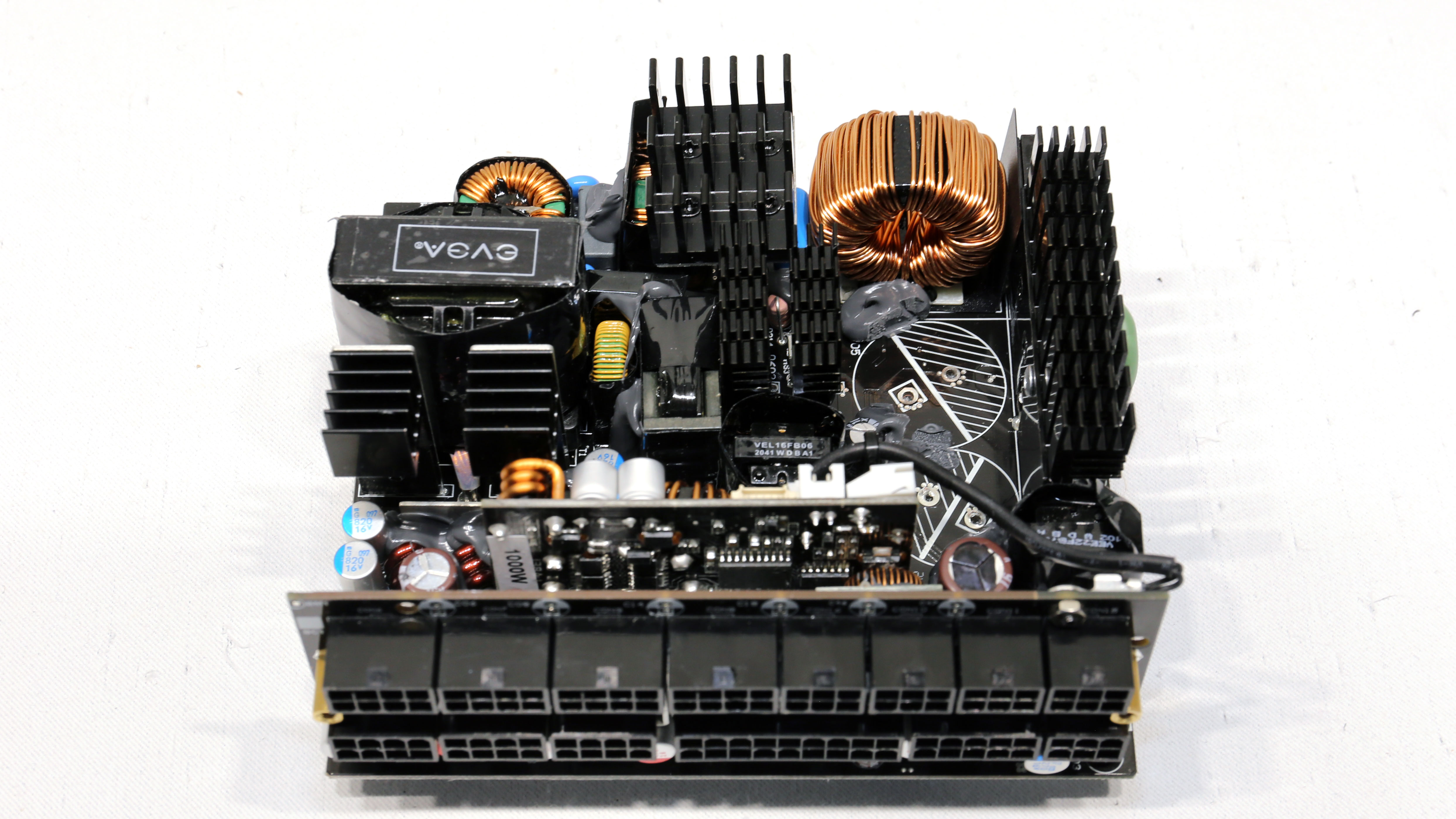
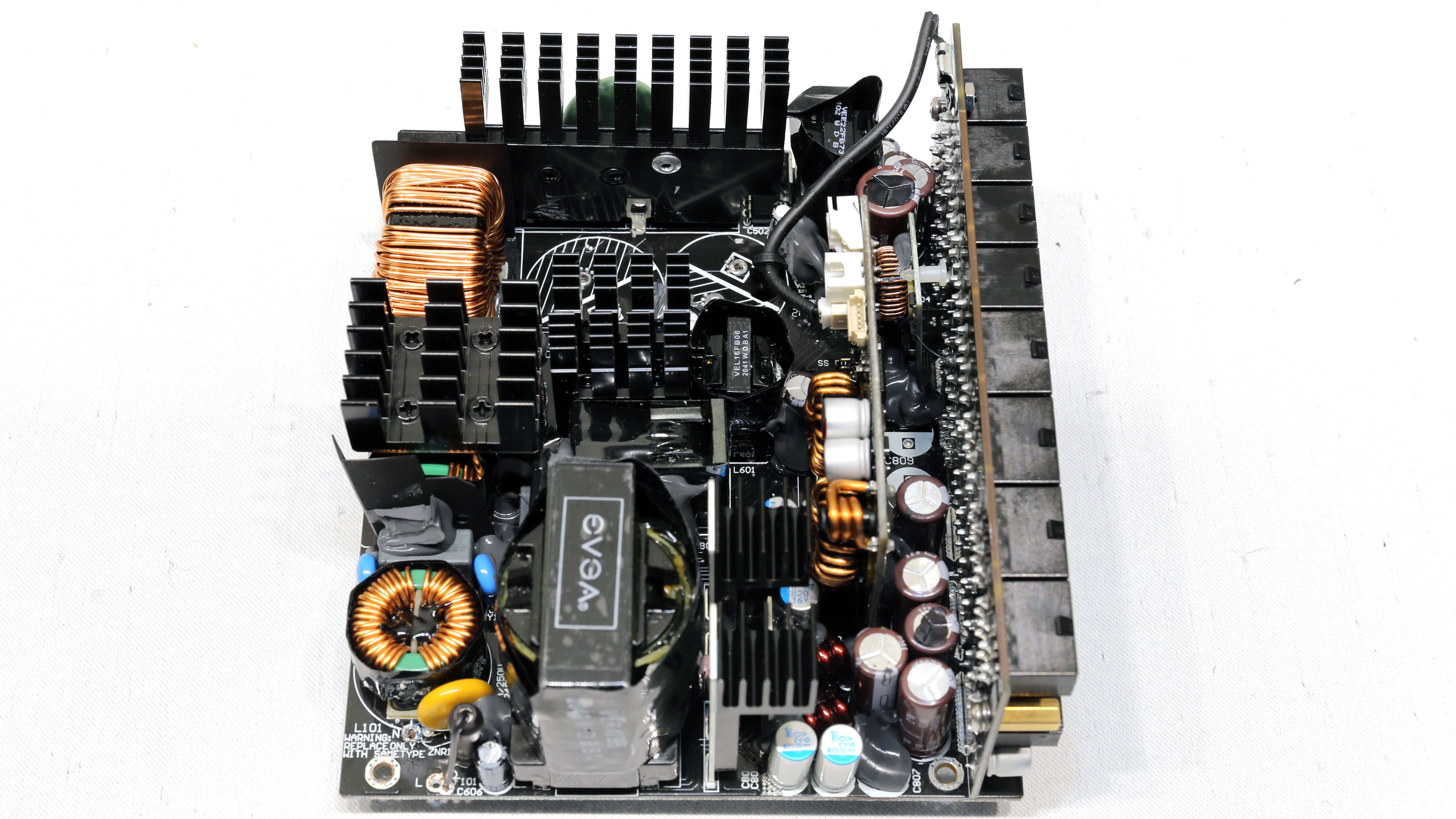
The G6 line uses an updated Seasonic Focus platform featuring an MCU which, besides the firmware OPP, as EVGA calls it, also handles over-temperature protection and controls the fan's speed. We noticed a single wire used for an NTC thermistor which provides information on the MCU hosted on the same daughter-board with the DC-DC converters. Ideally, this connection should be made through another, less visible way, but this would require a major platform re-design which costs money (and time).
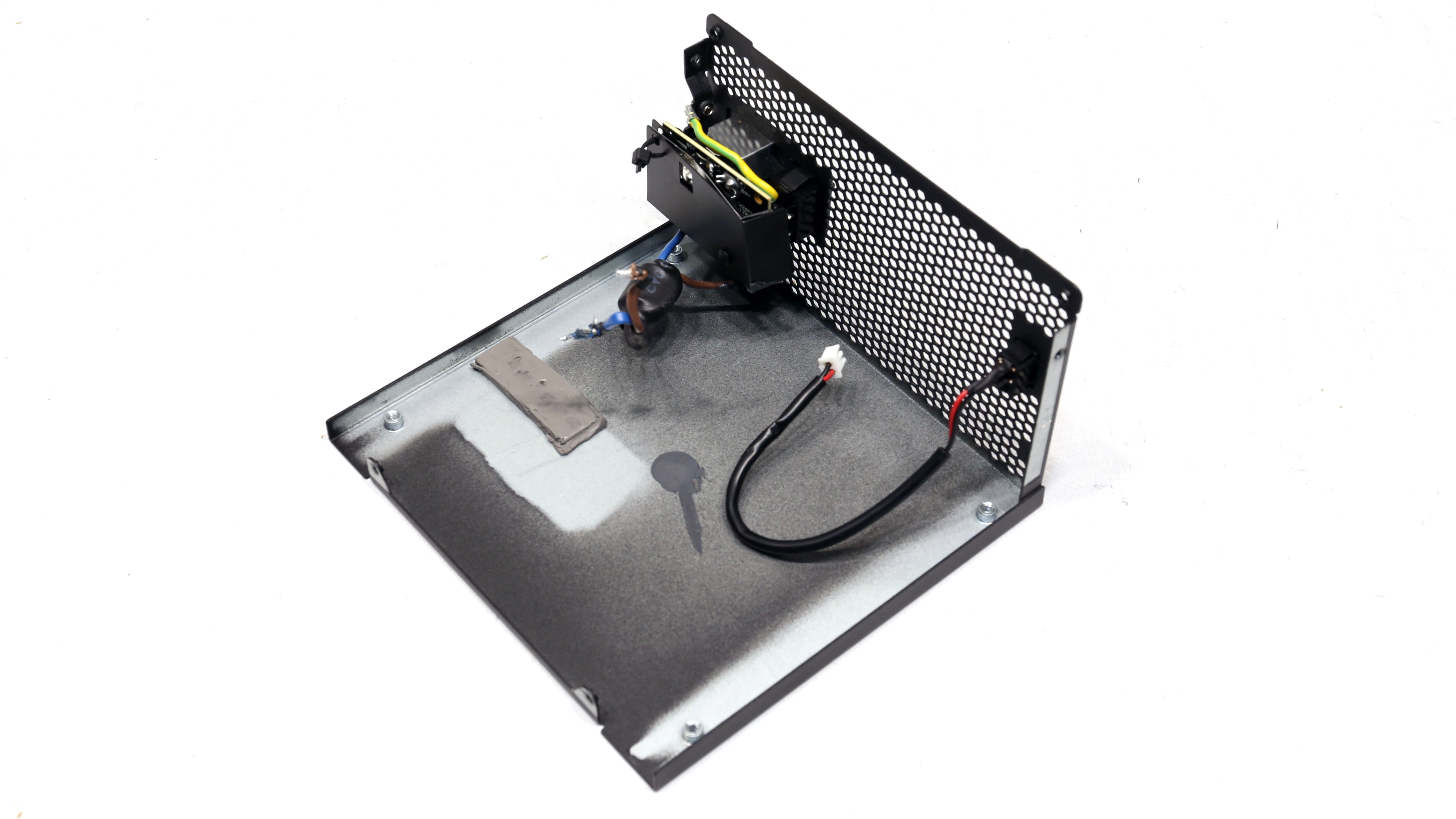
Transient filter
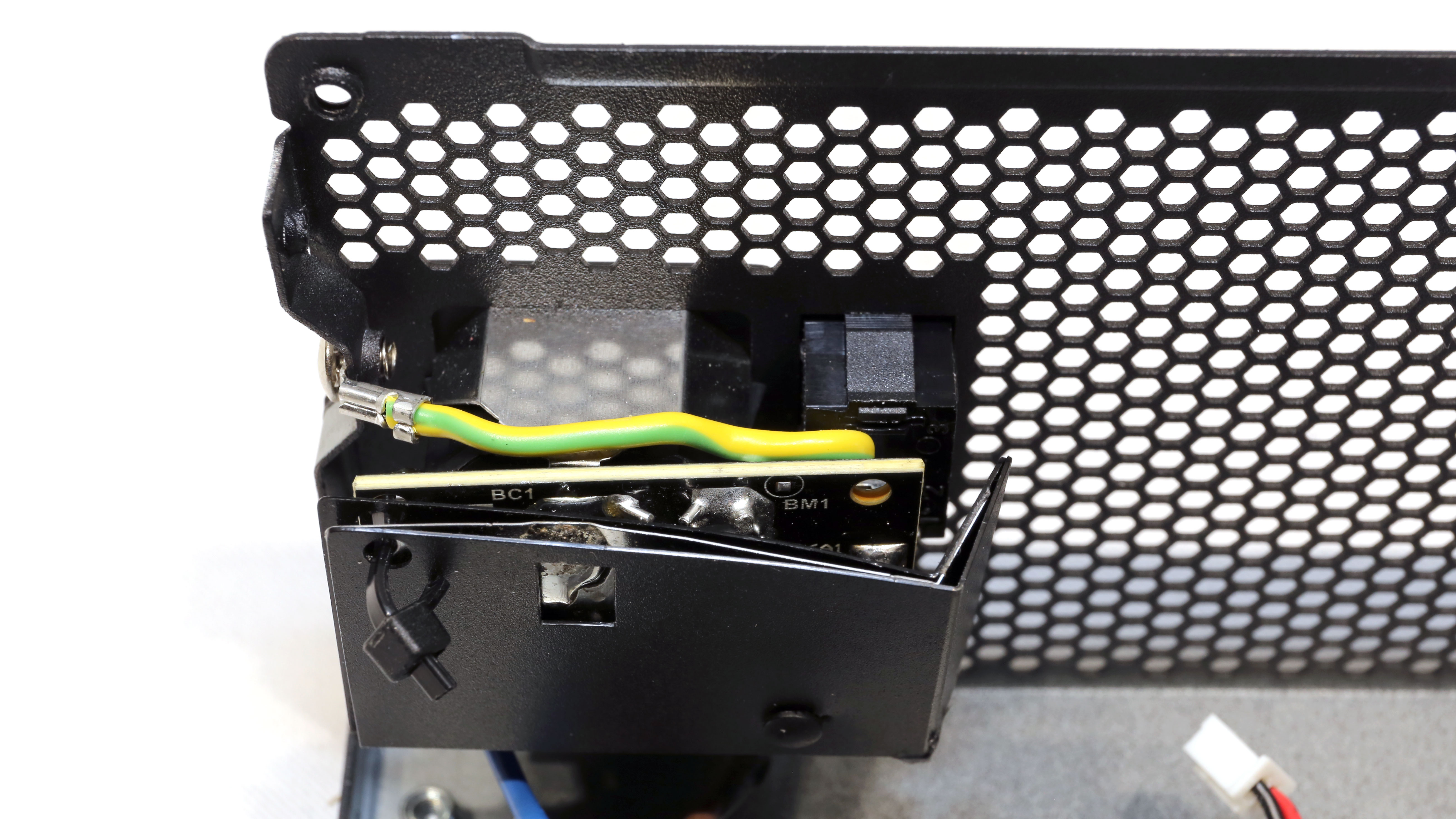
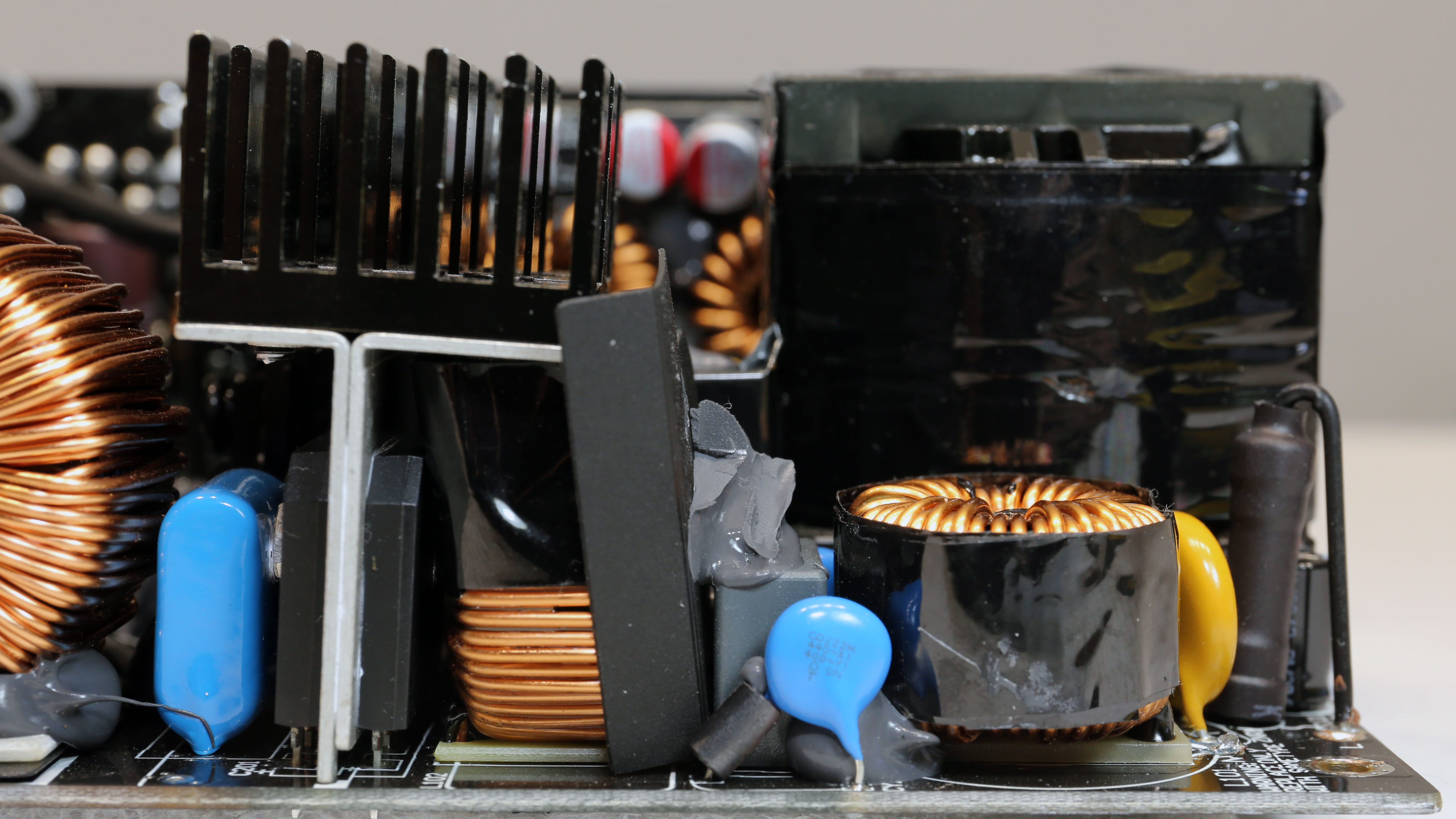
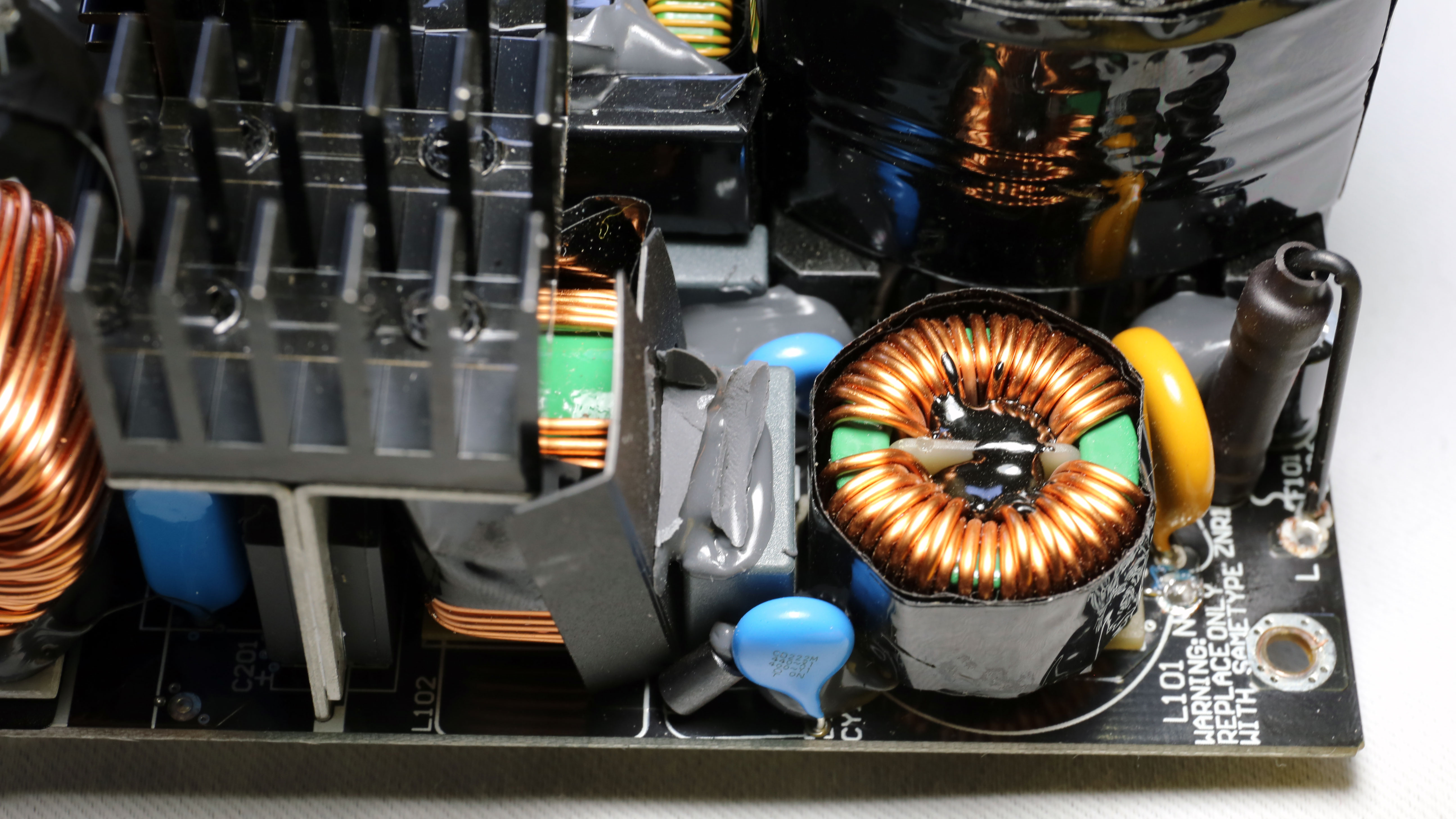
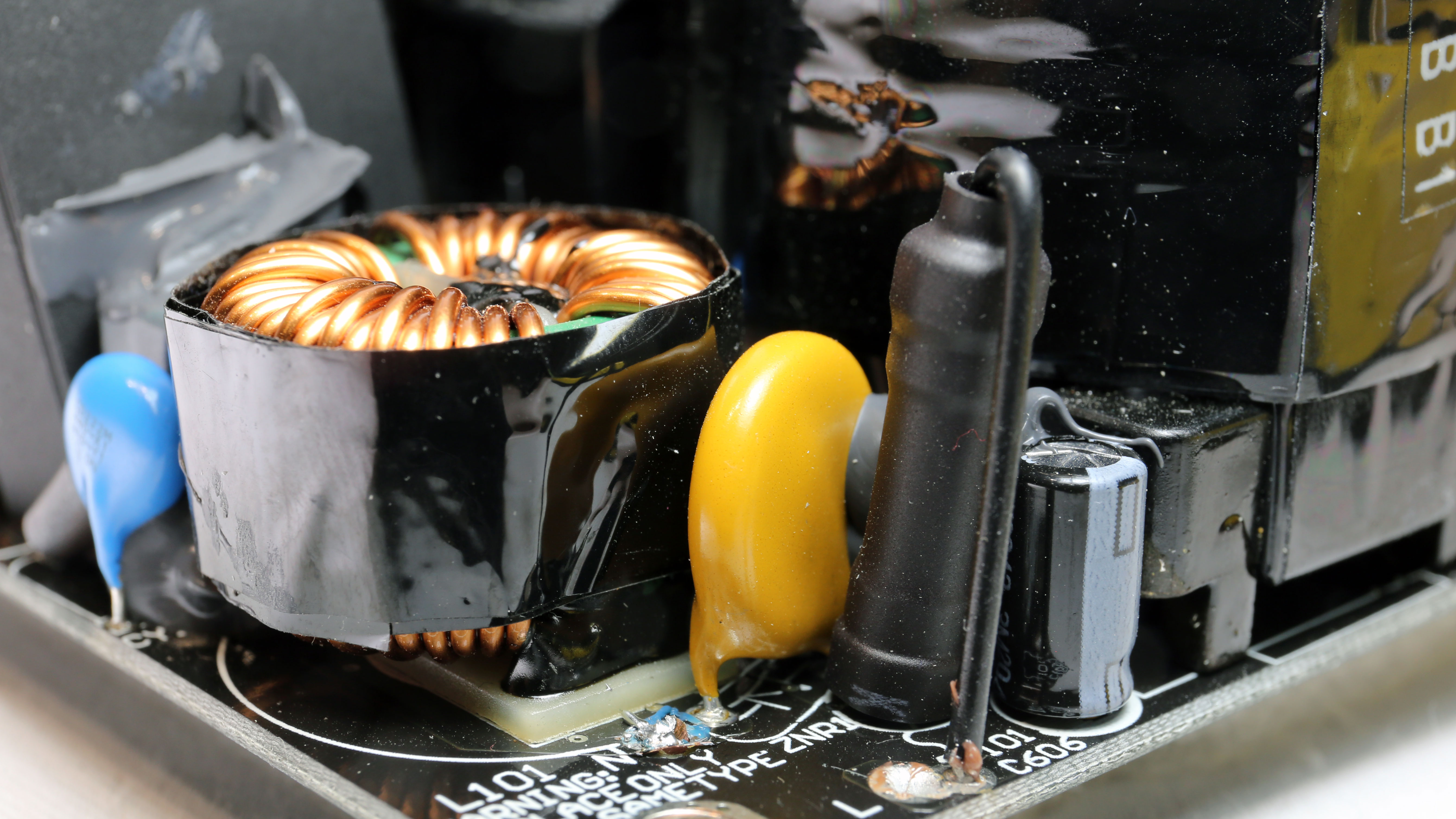
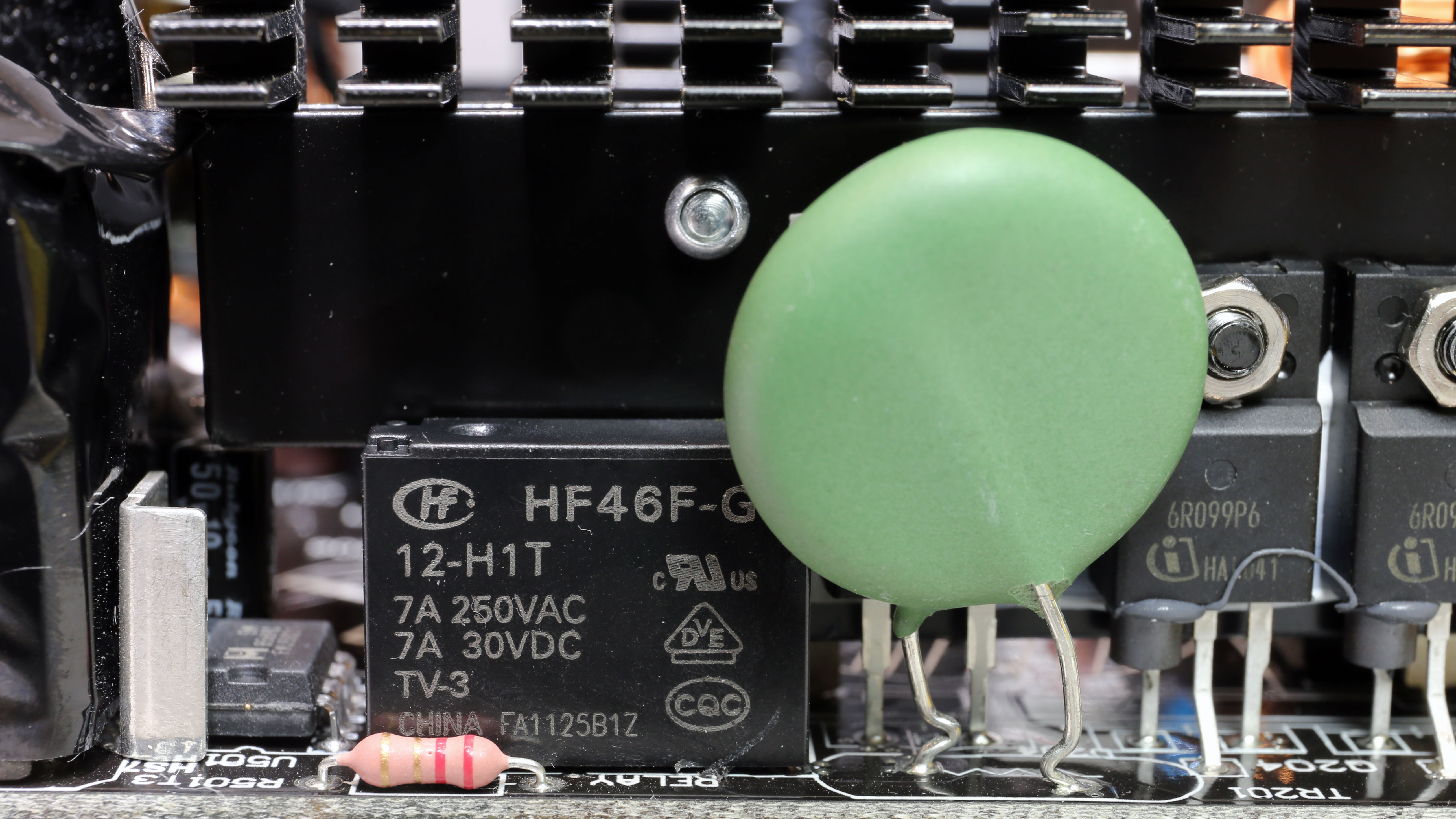
The transient filter is complete and does a good job. Moreover, an MOV provides protection against voltage surges, and the large inrush currents are suppressed by an NTC thermistor, with a bypass relay supporting it.
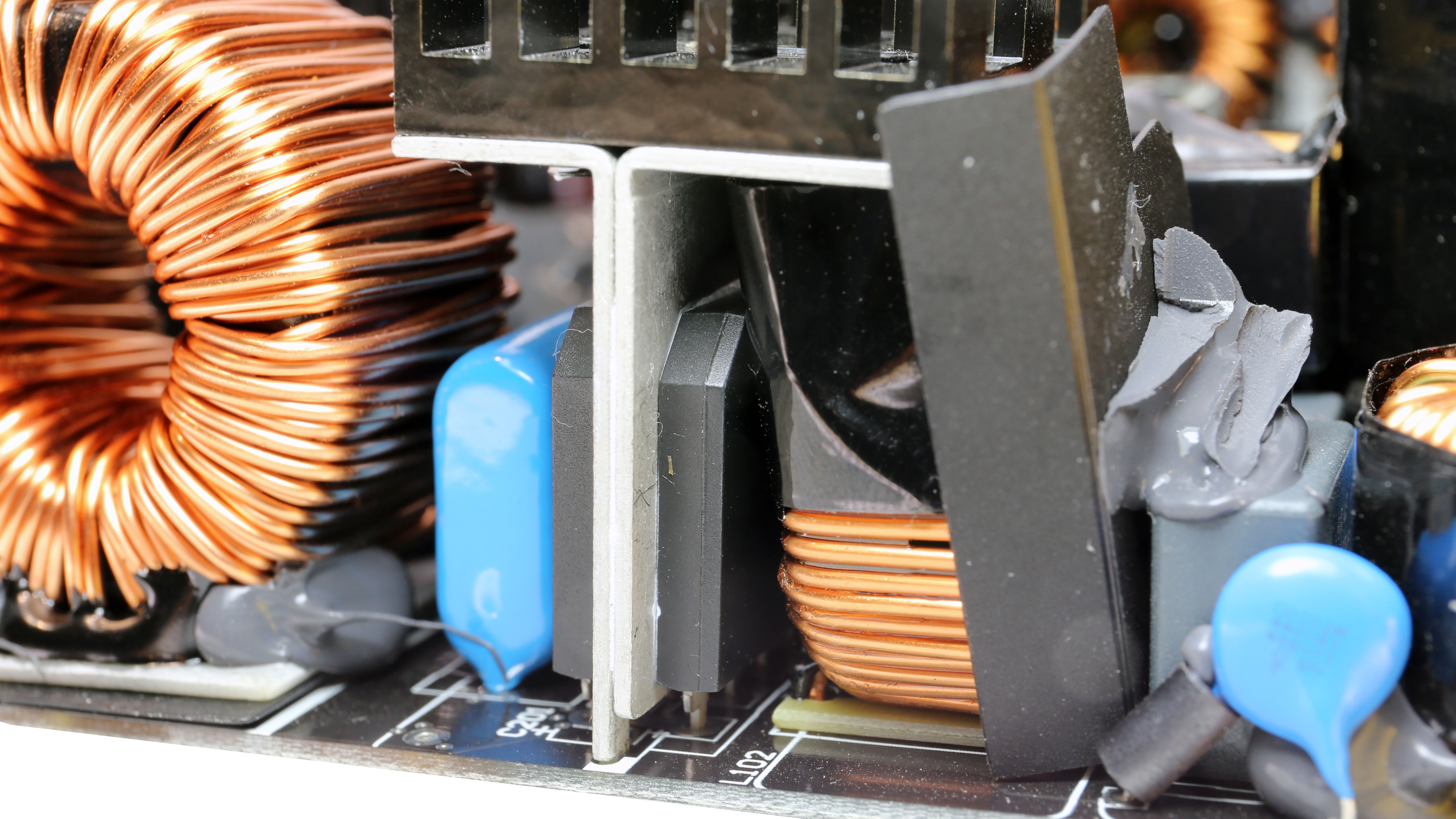
Bridge rectifiers
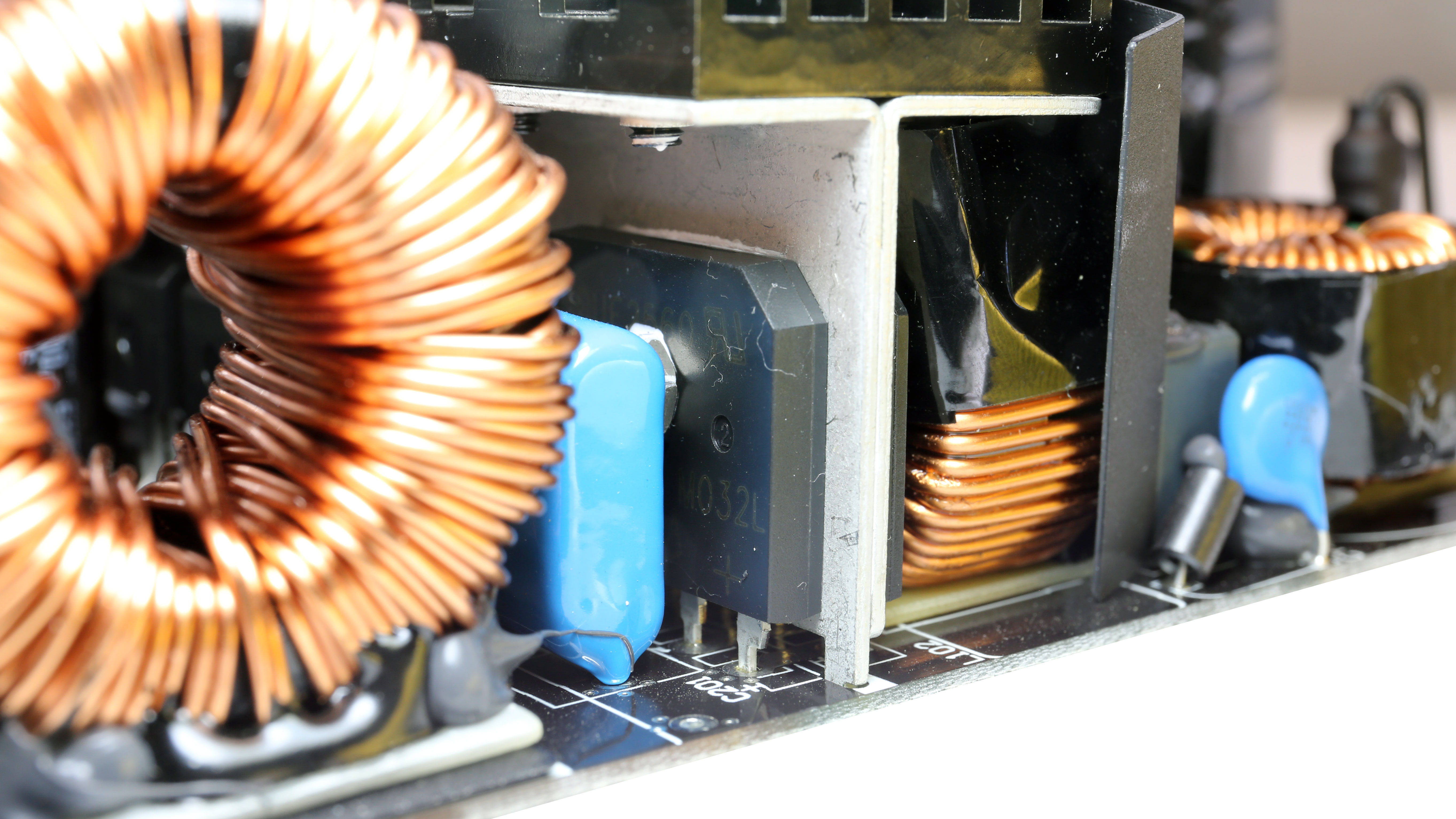
The bridge rectifiers are powerful; combined, they can handle up to 50A of current.
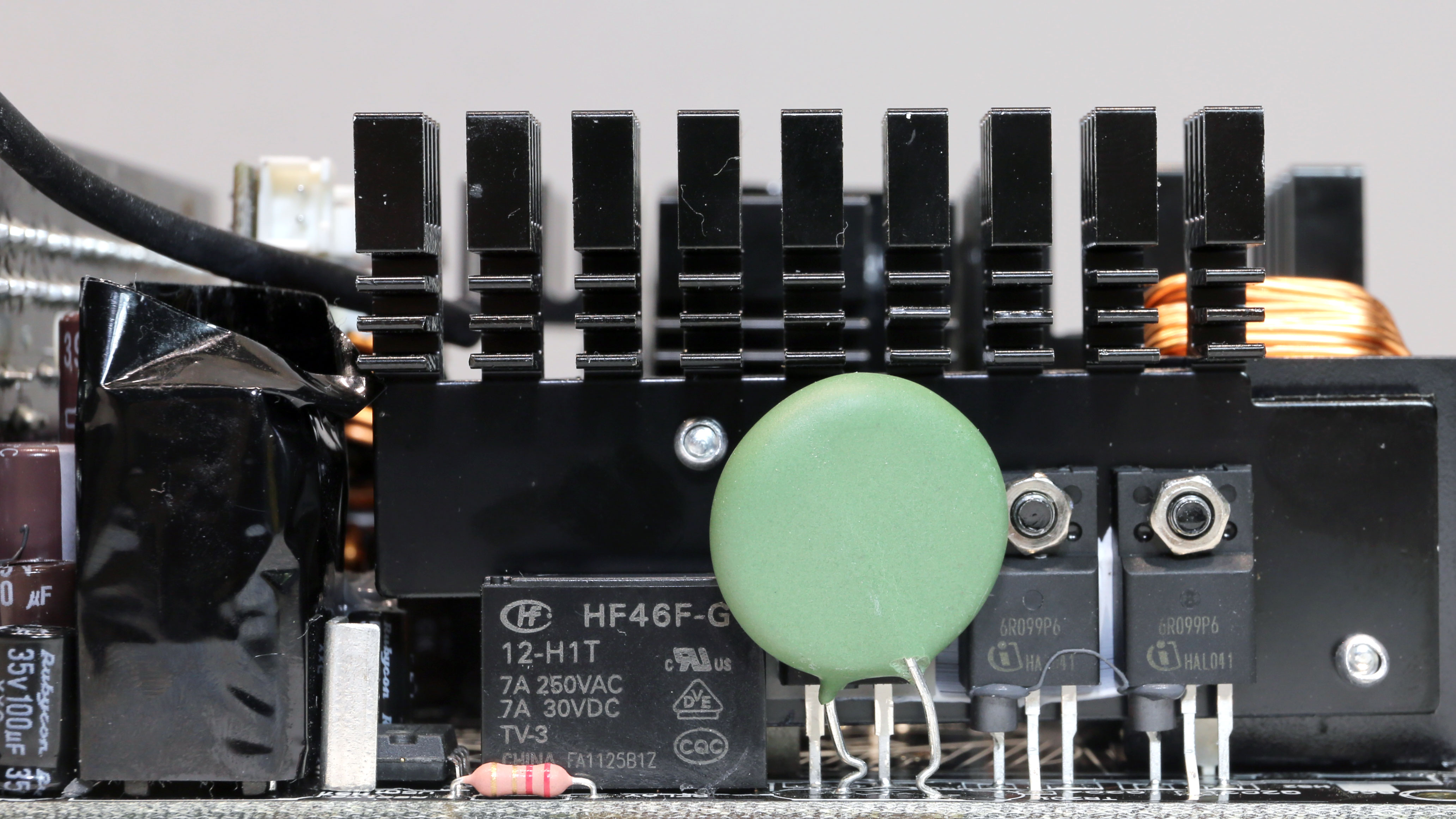
APFC converter
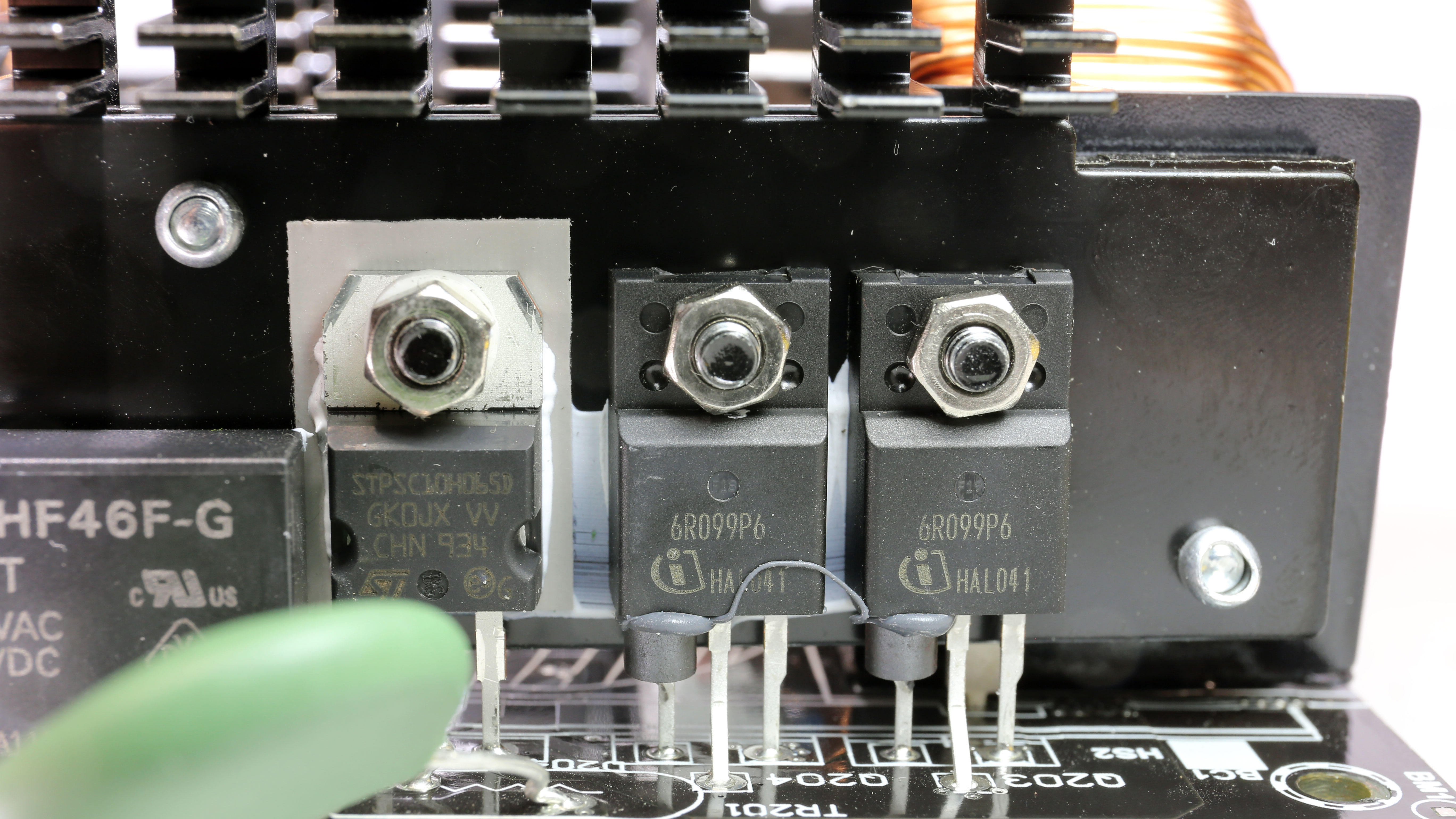
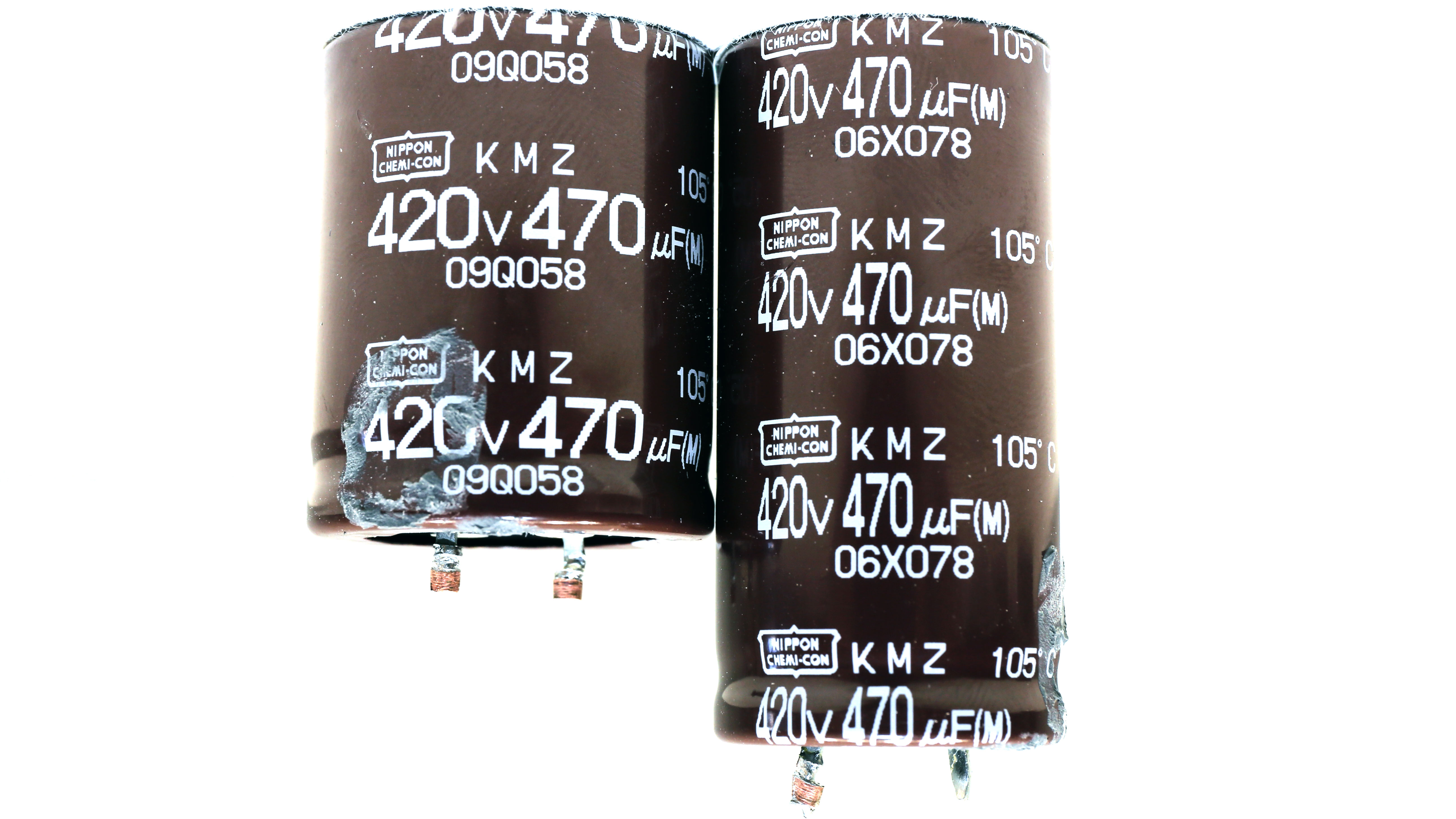
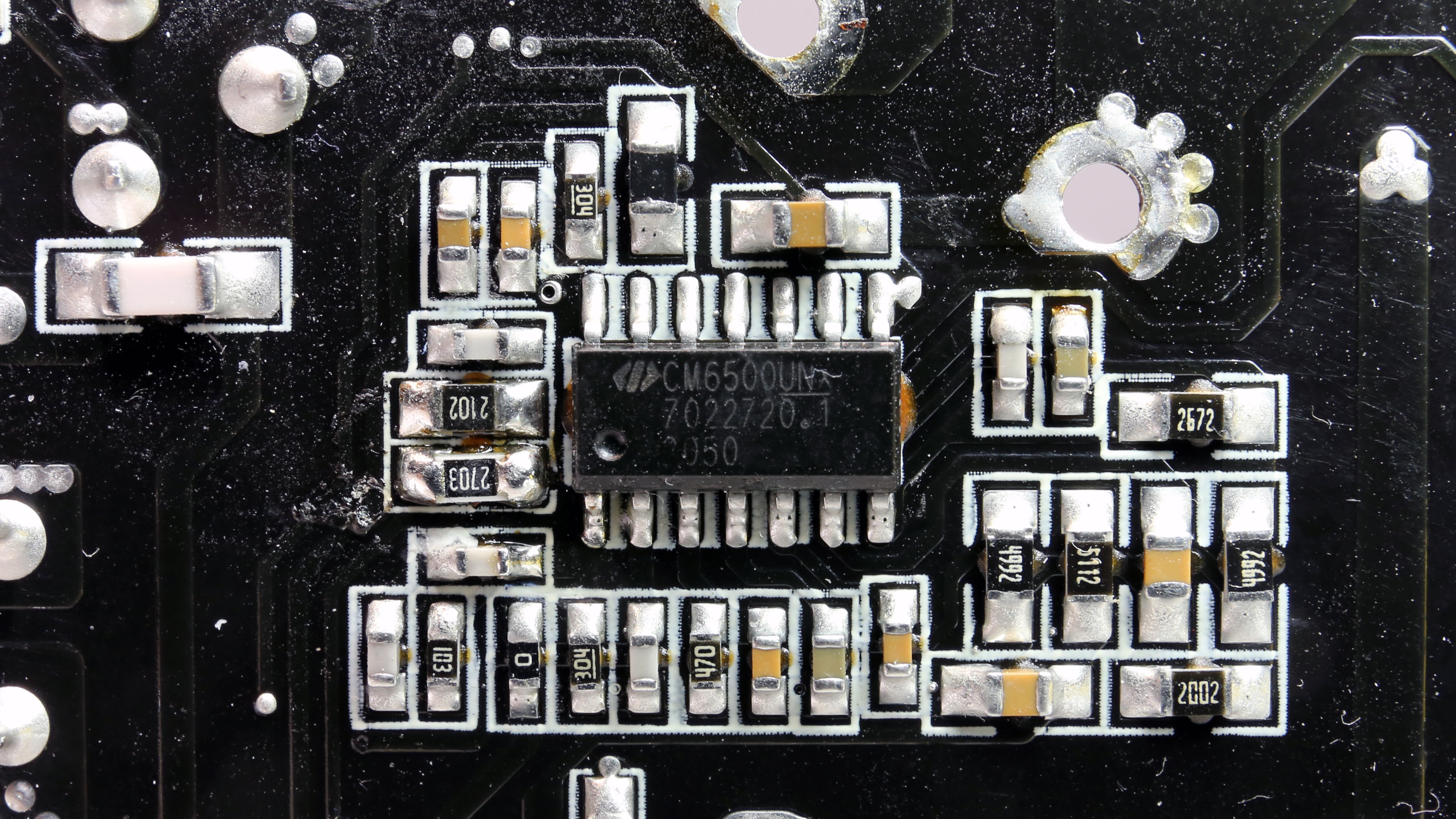
The APFC converter uses two Infineon FETs and a single boost diode. The bulk caps are by Chemi-Con, and their combined capacity reaches 940uF. Finally, the APFC controller is the Champion CM6500UN, which offers higher performance (higher PF readings at light and moderate loads) than the CM6502, and it is pin to pin compatible with the latter.
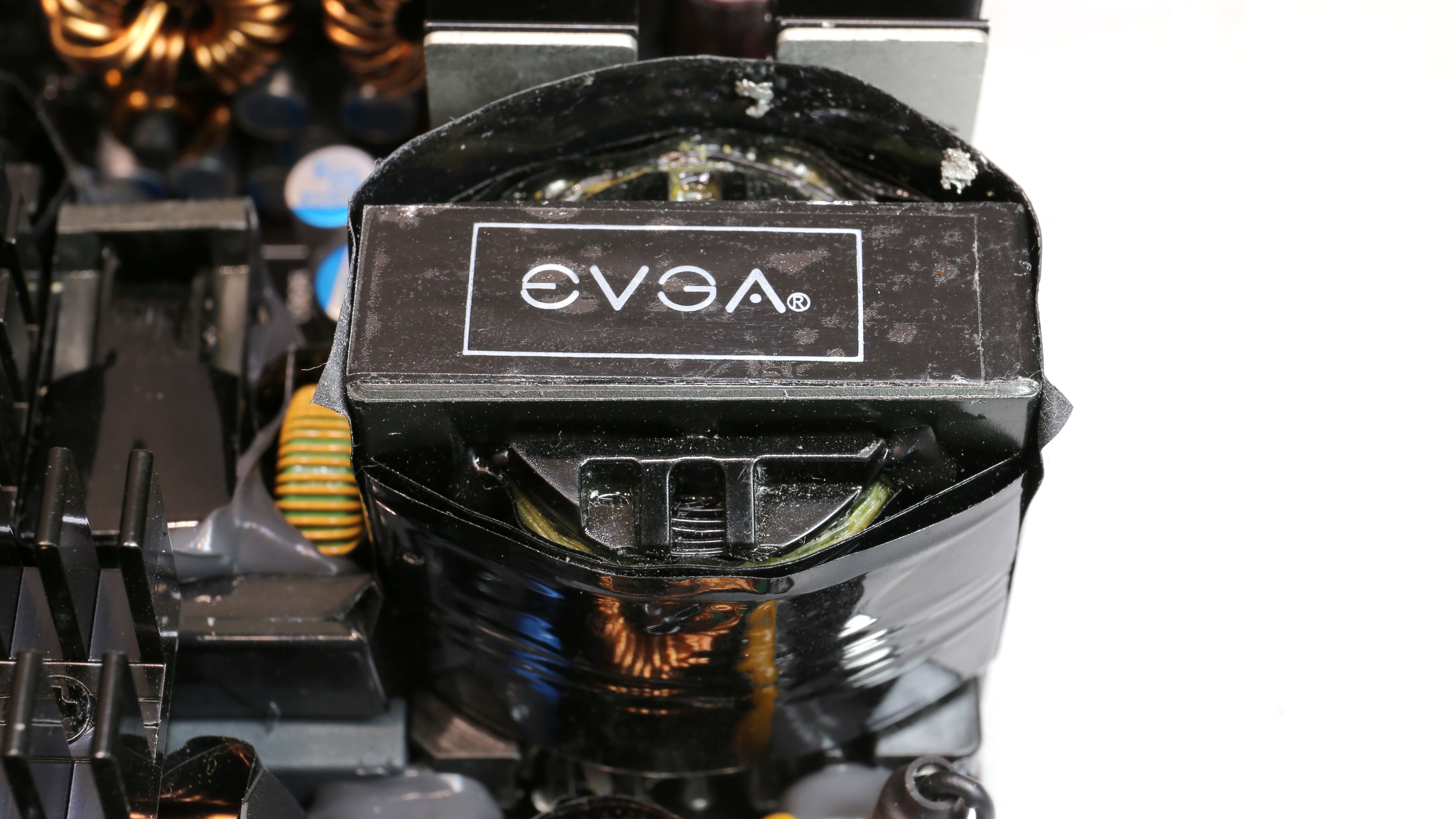
Main FETs and primary transformer
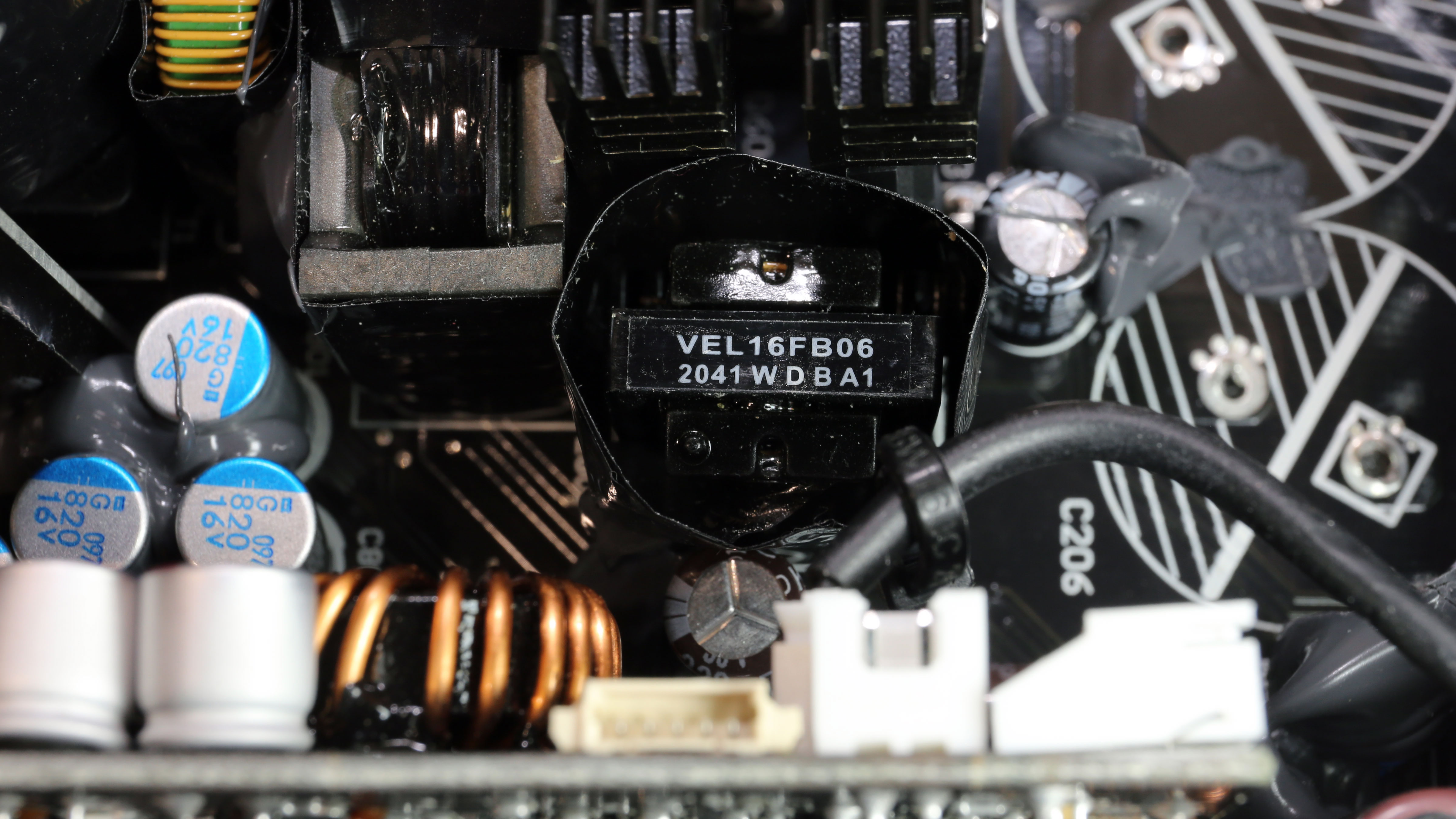
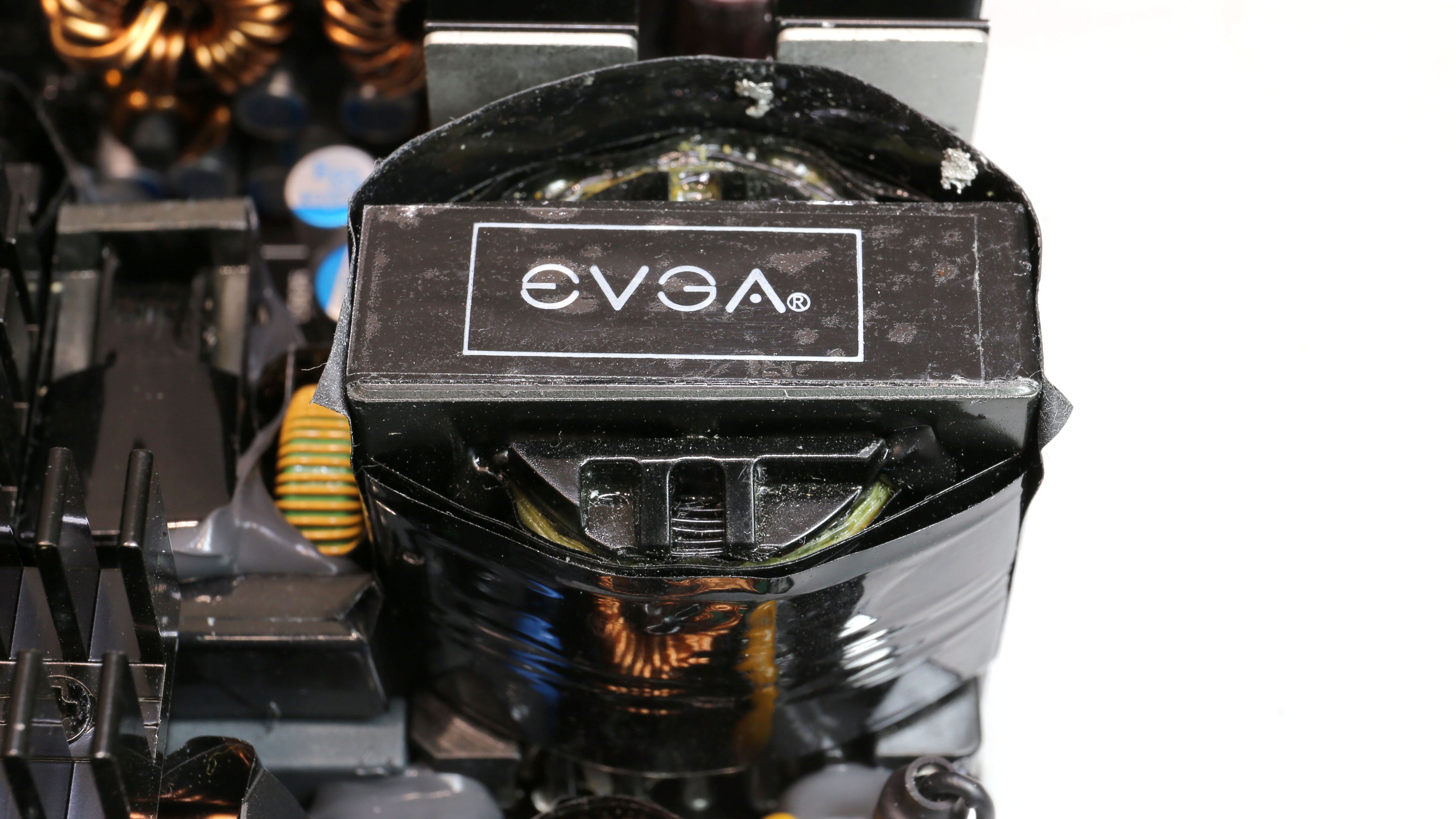
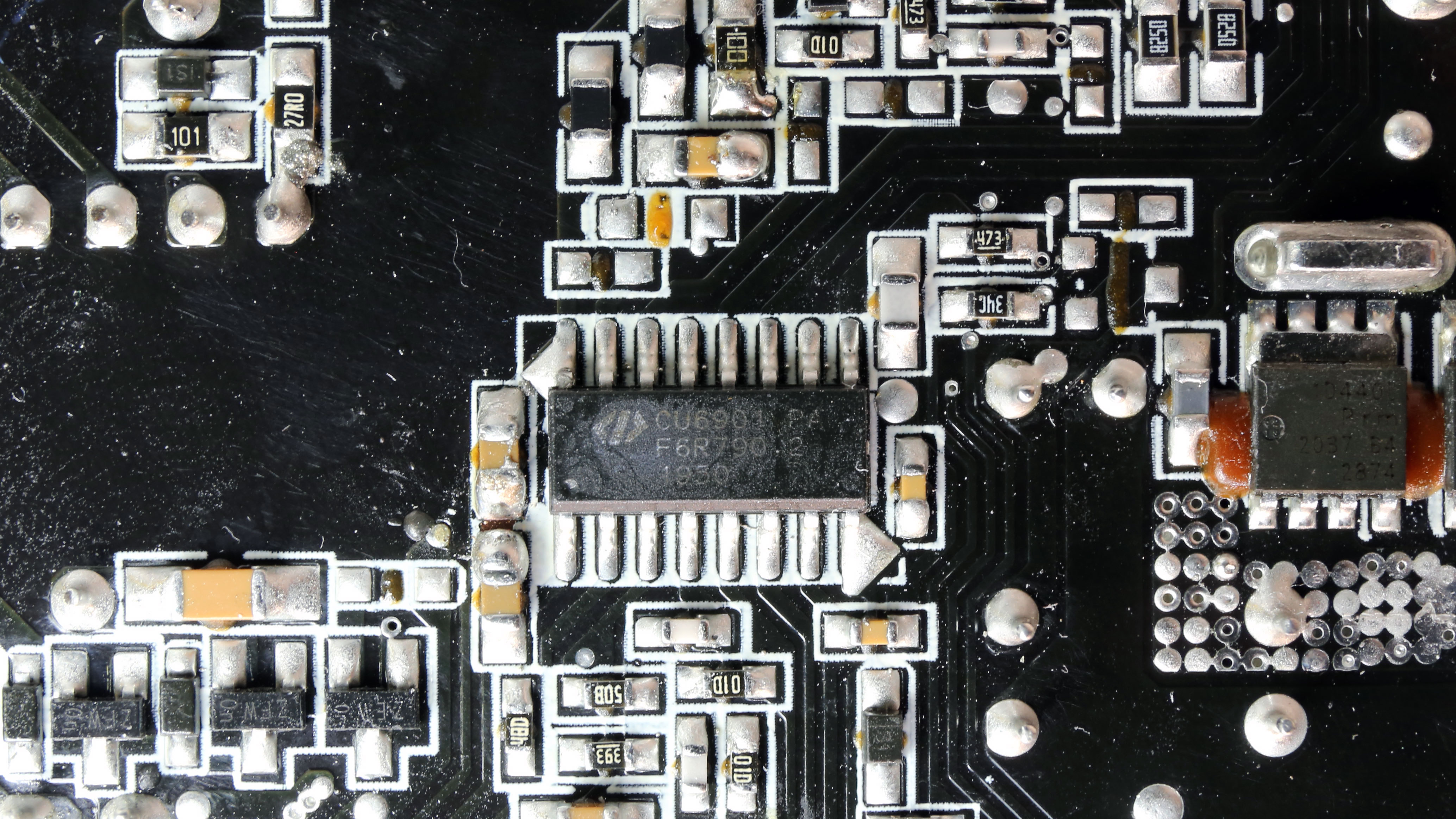
The main FETs are arranged into a full-bridge topology, and an LLC resonant converter is also used to boost efficiency. The resonant controller is the Champion CU6901V, which supports burst operation for higher efficiency at light loads.
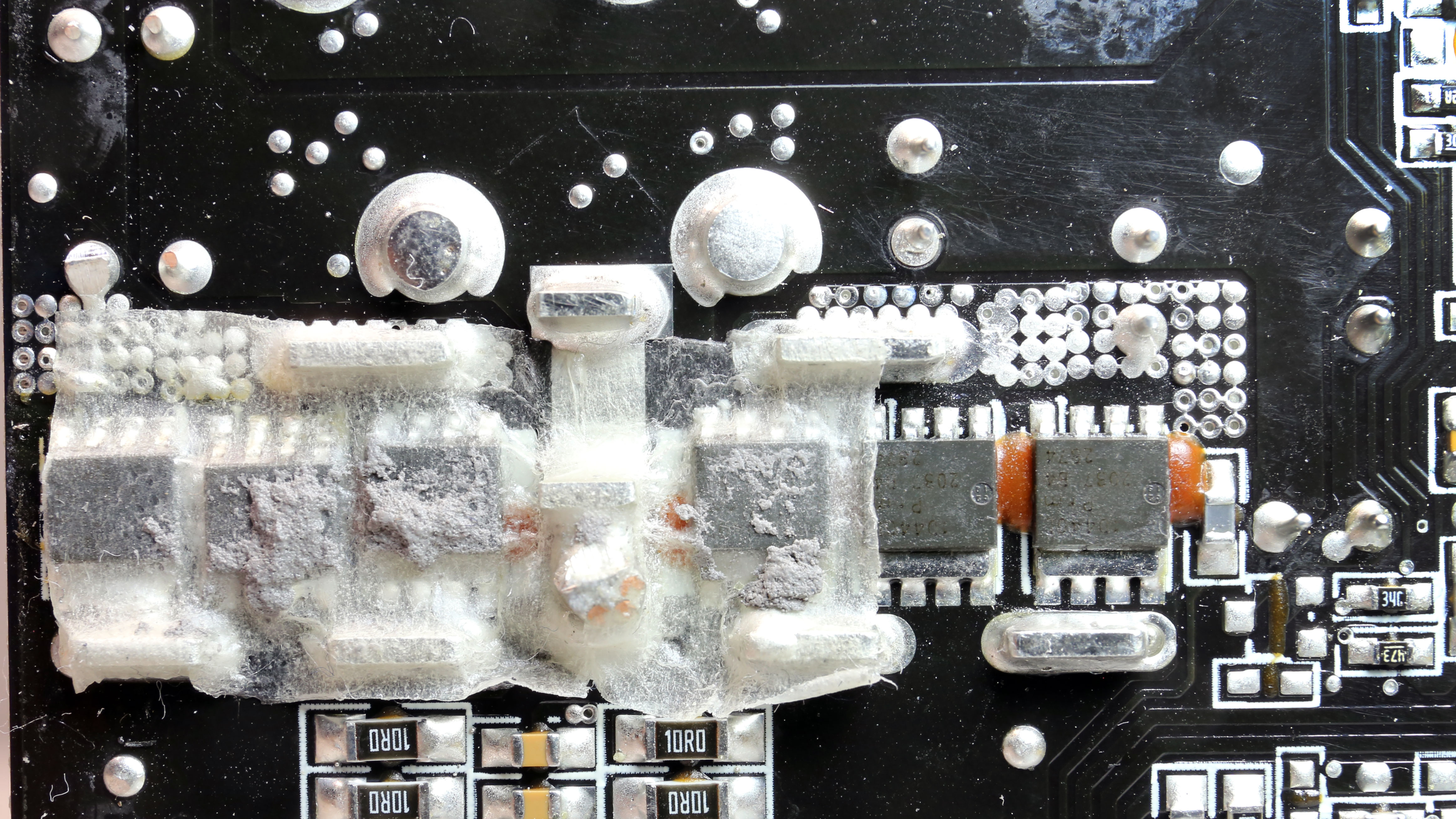
12V FETs and VRMs
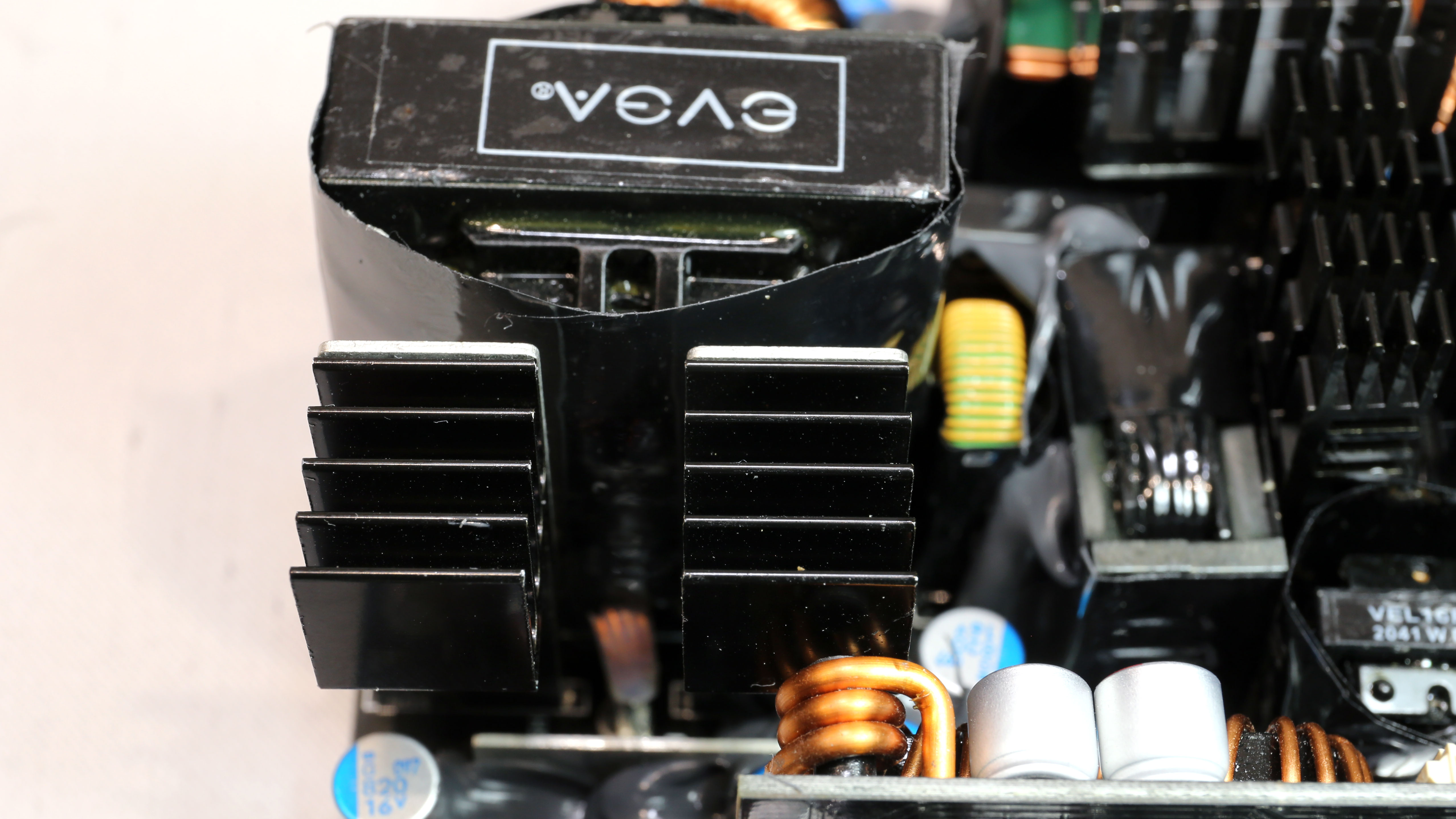
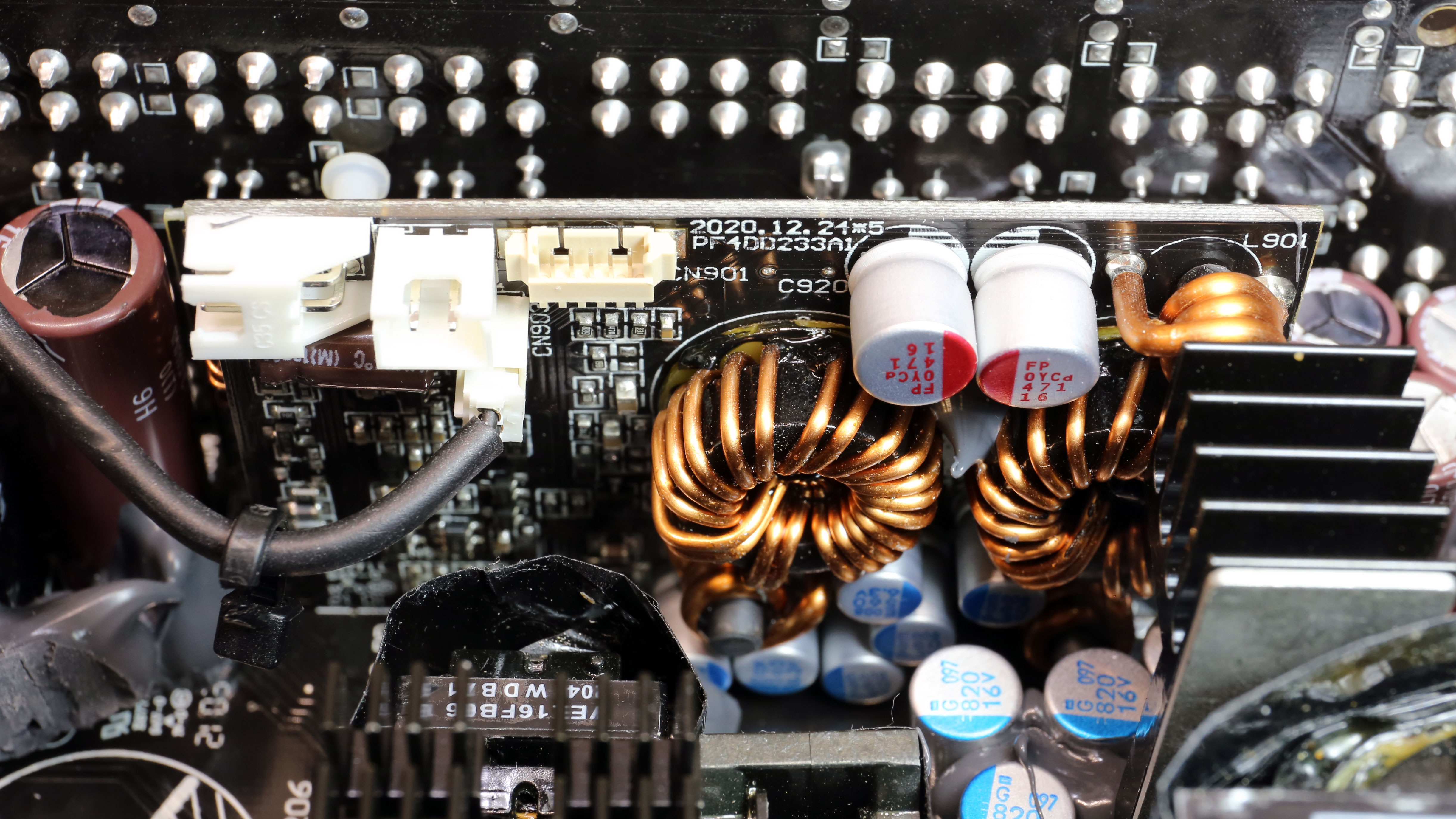
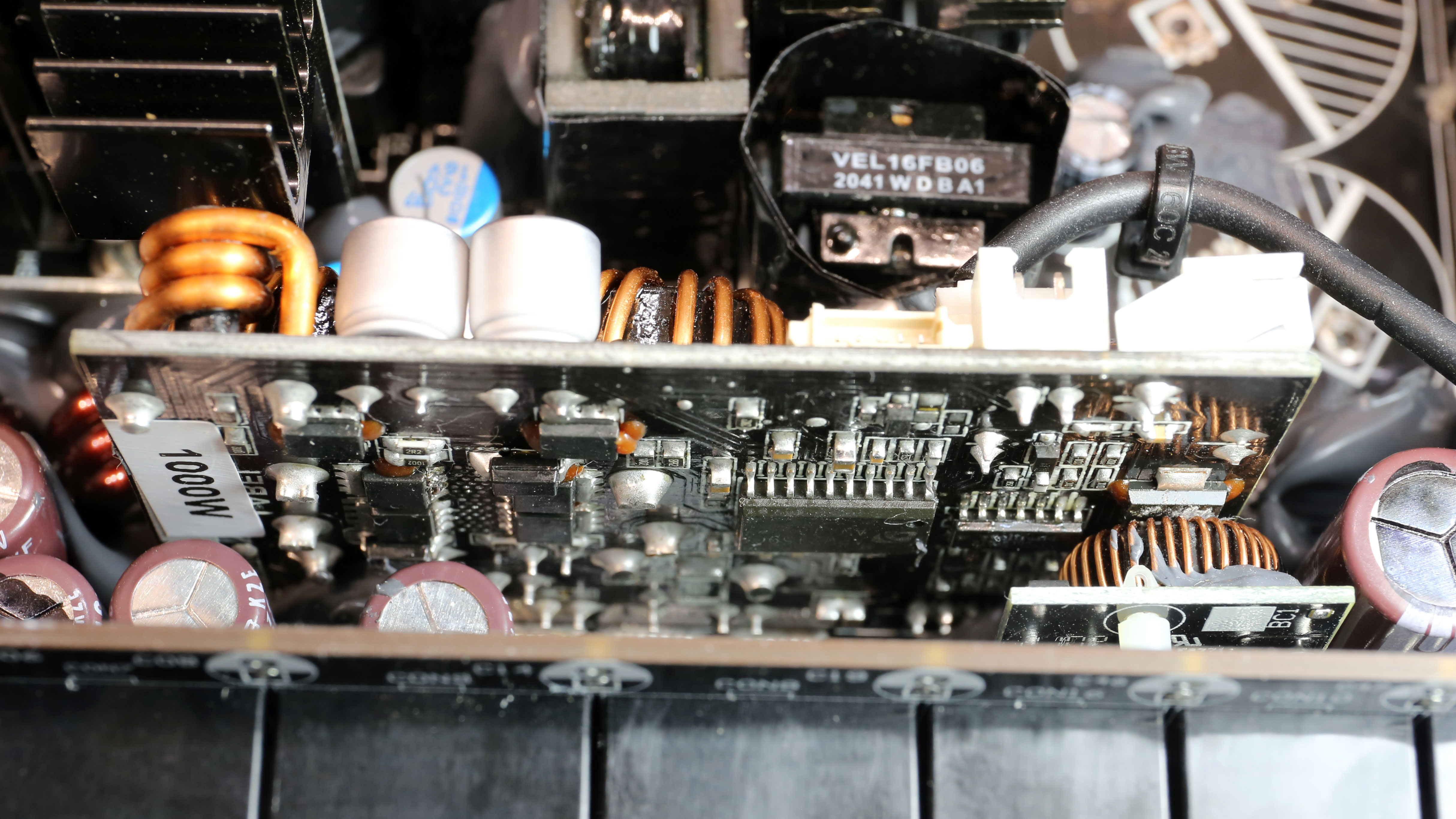
The 12V FETs contact the PSU's chassis through the thermal paste and white material that looks like paper (but it isn't). We removed a piece of it to have a clean look at two of the FETs.
The VRMs handling the minor rails use six FETs, and the common PWM controller is by ANPEC.
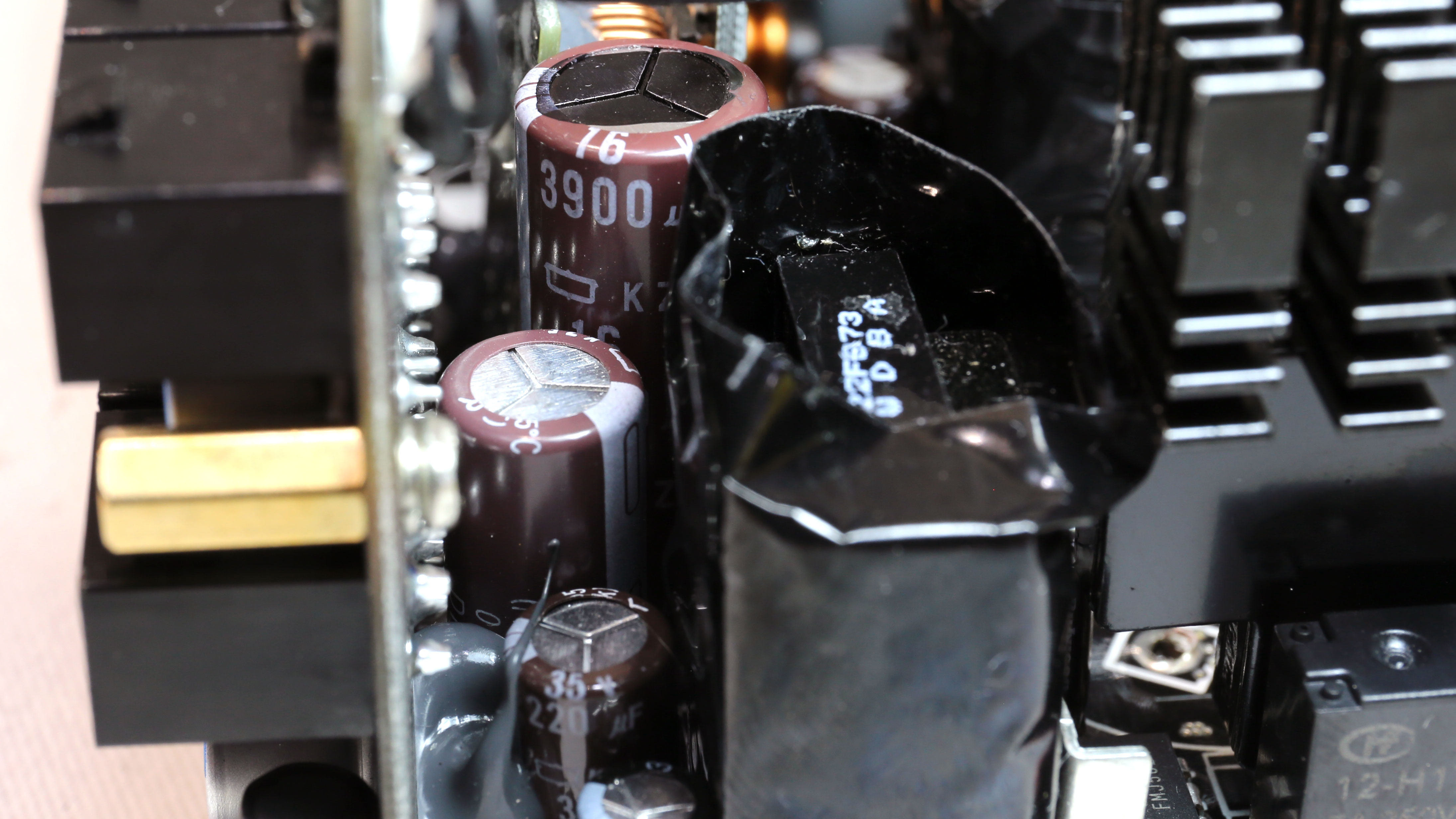
Filtering caps
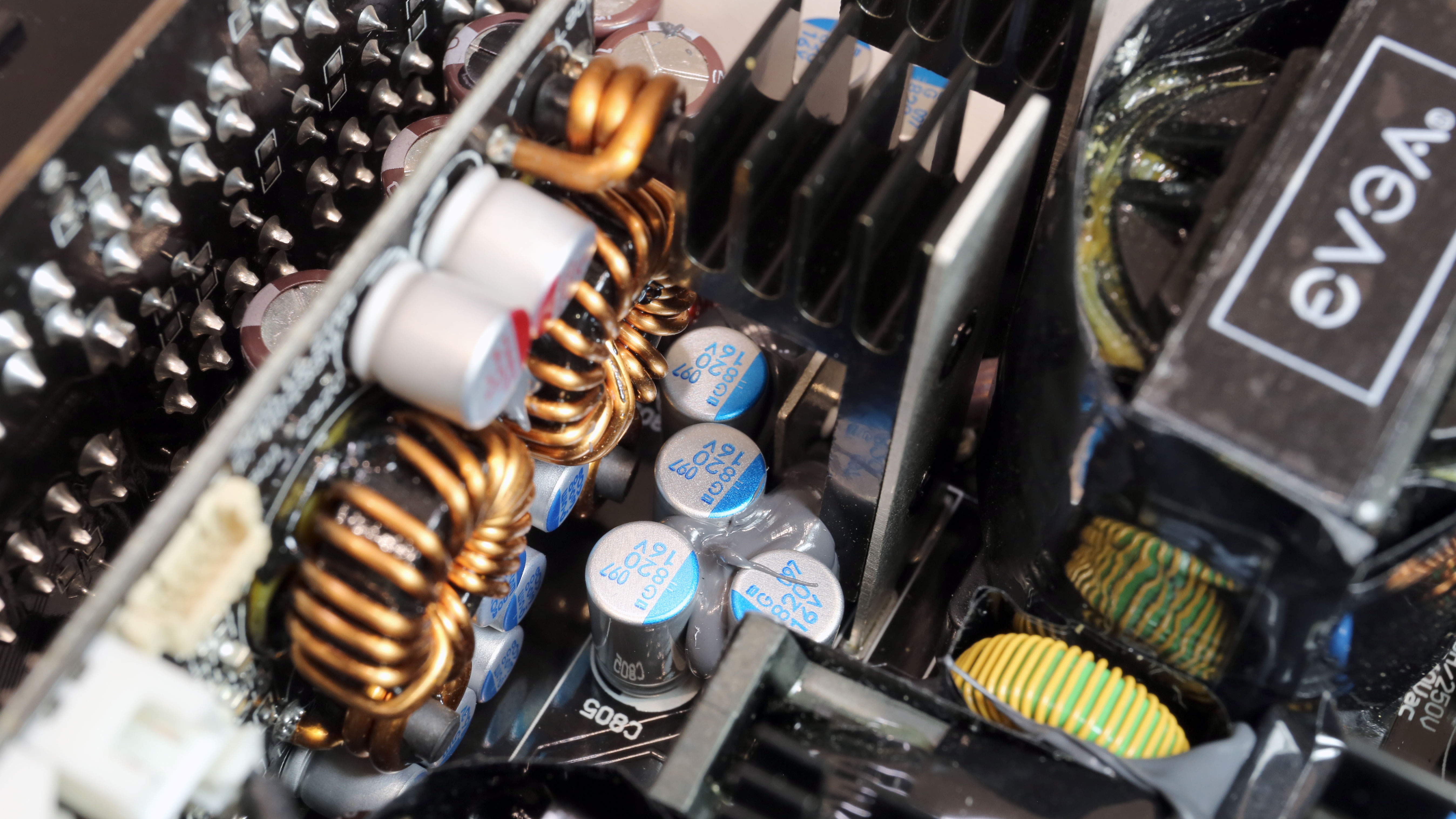
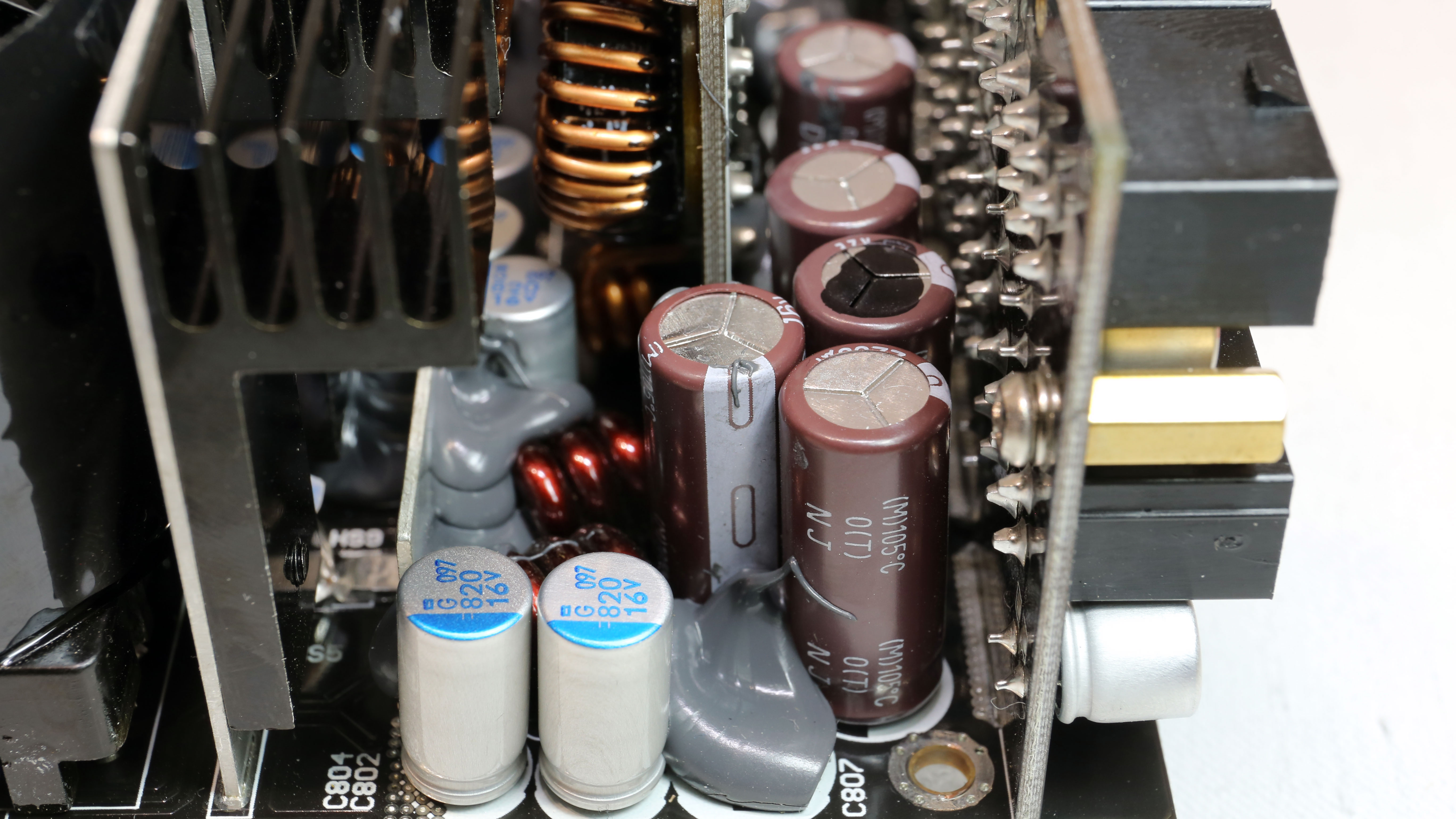
All filtering caps are provided by Japanese manufacturers and are of good quality to outlast the long warranty. Besides electrolytic caps, many polymer caps are also used.
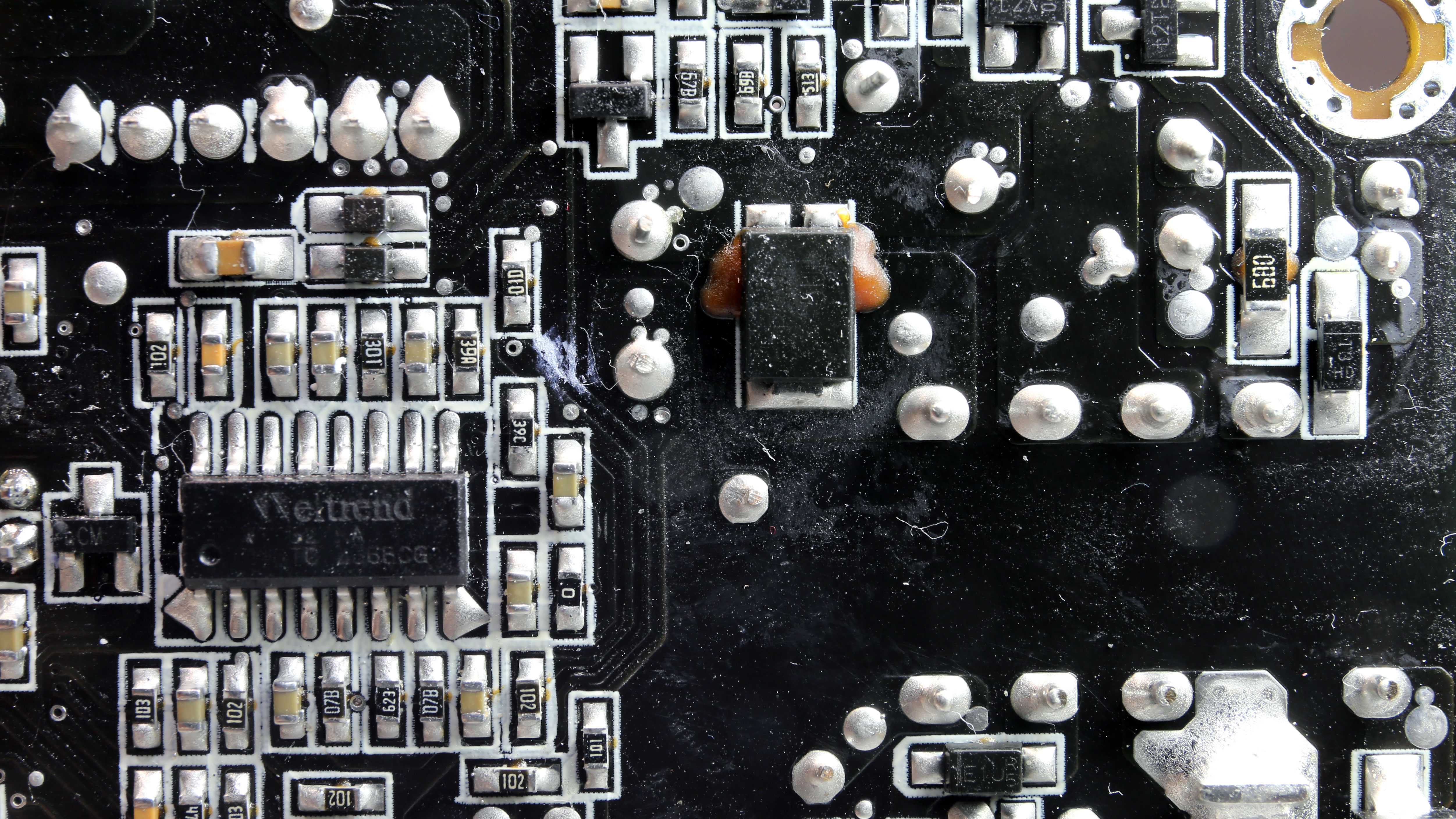
5VSB Circuit
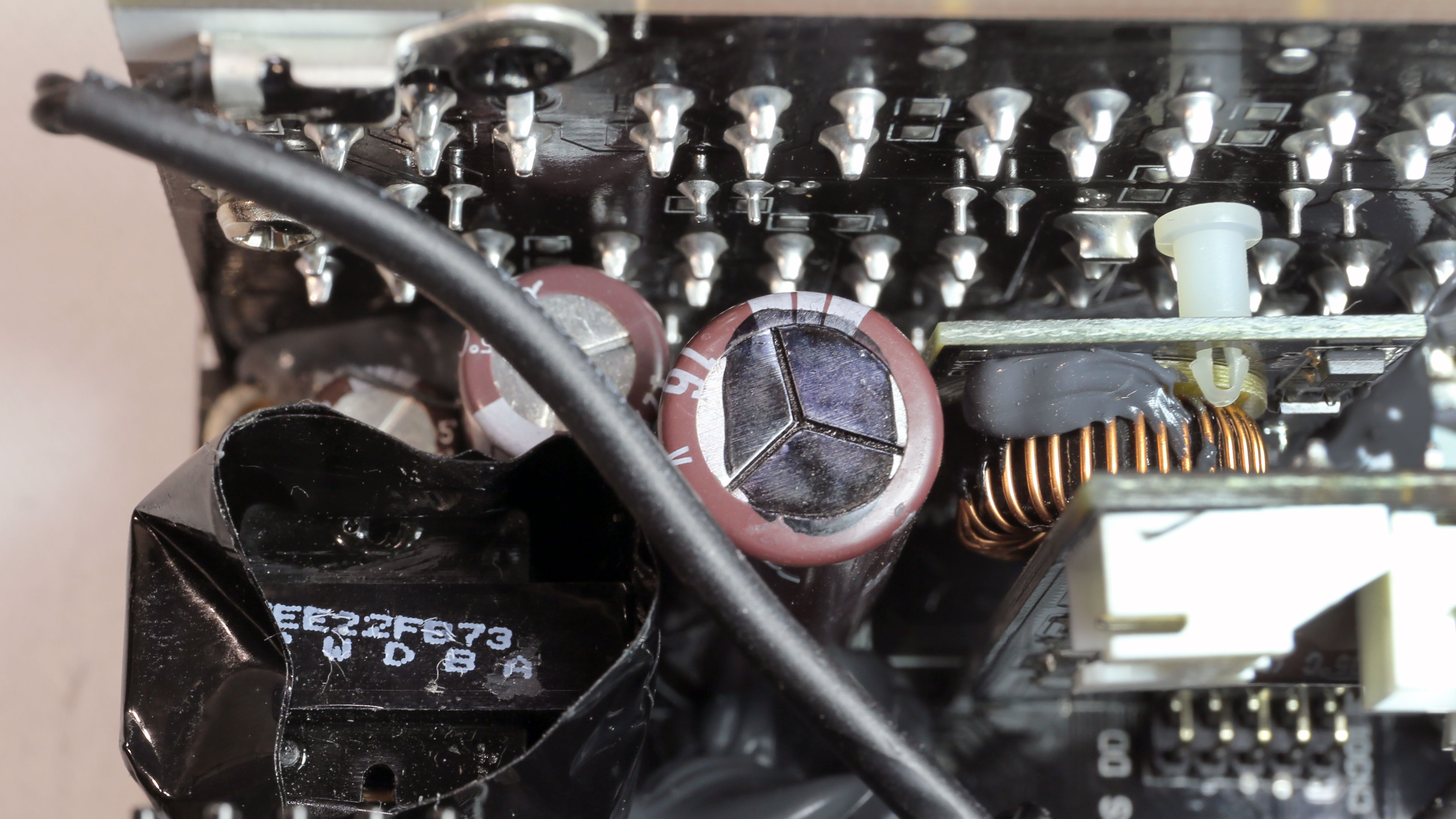
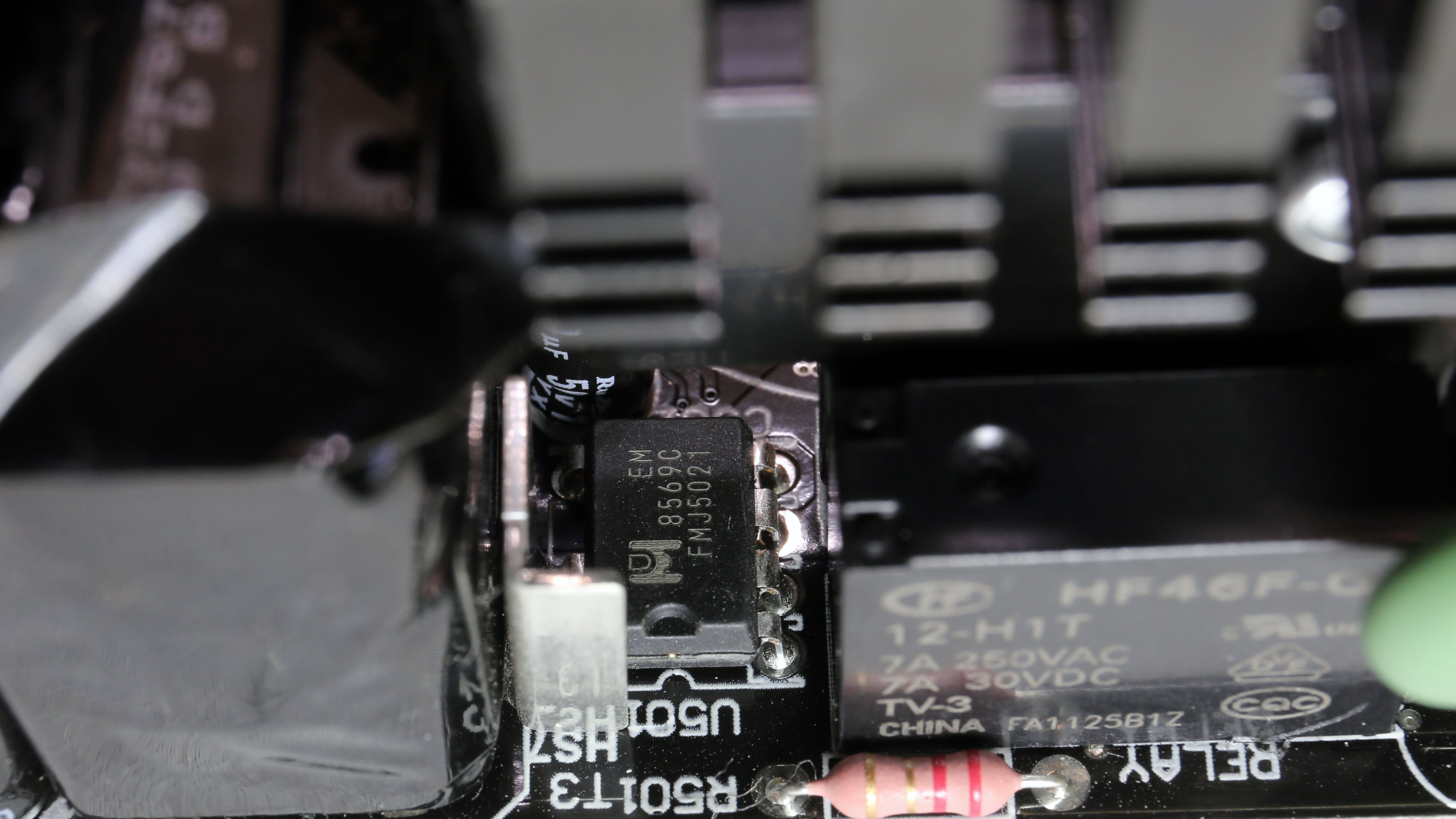
The 5VSB rail uses an SBR on its secondary side, so we don't expect high-efficiency levels.
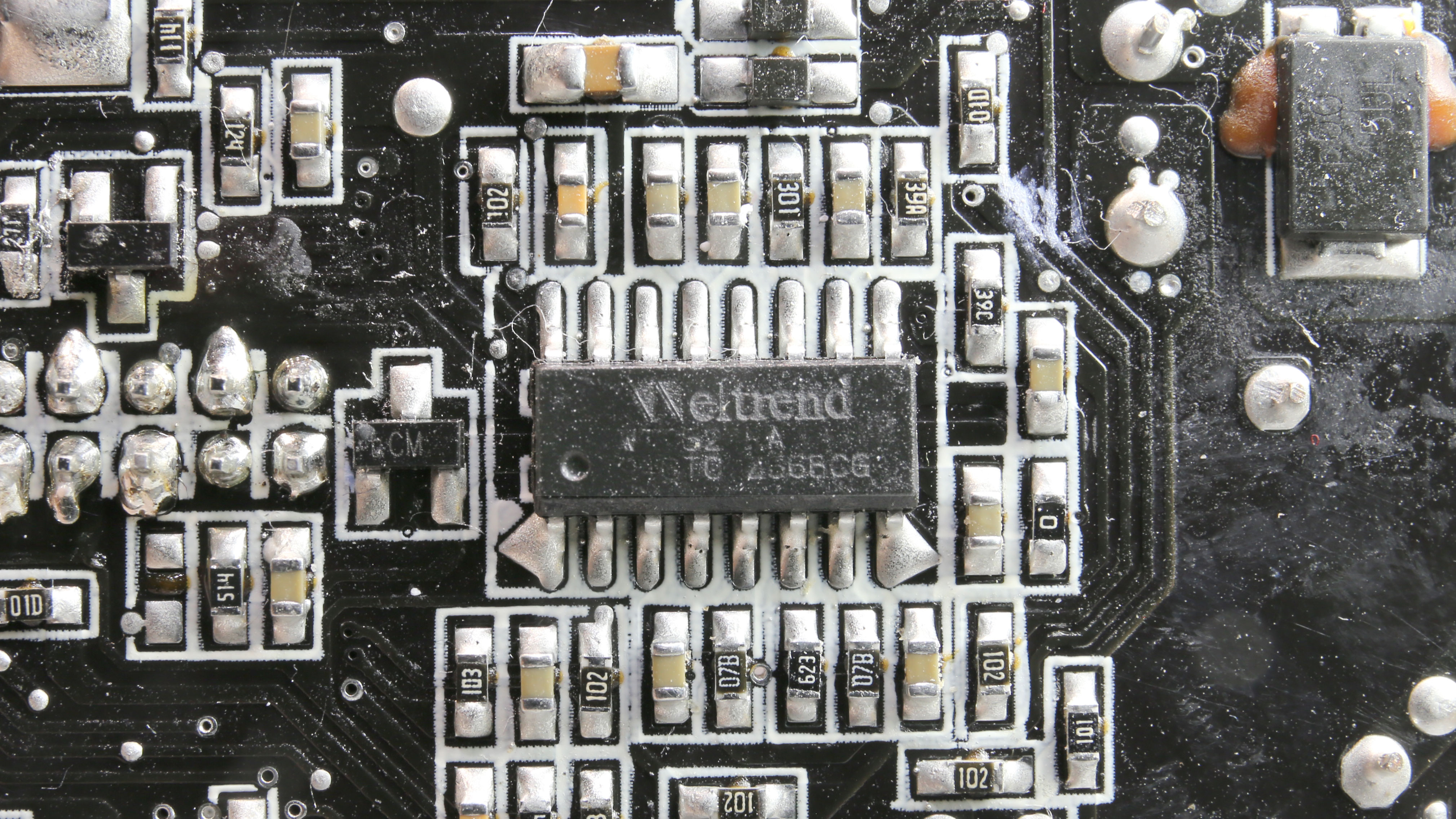
Supervisor ICs
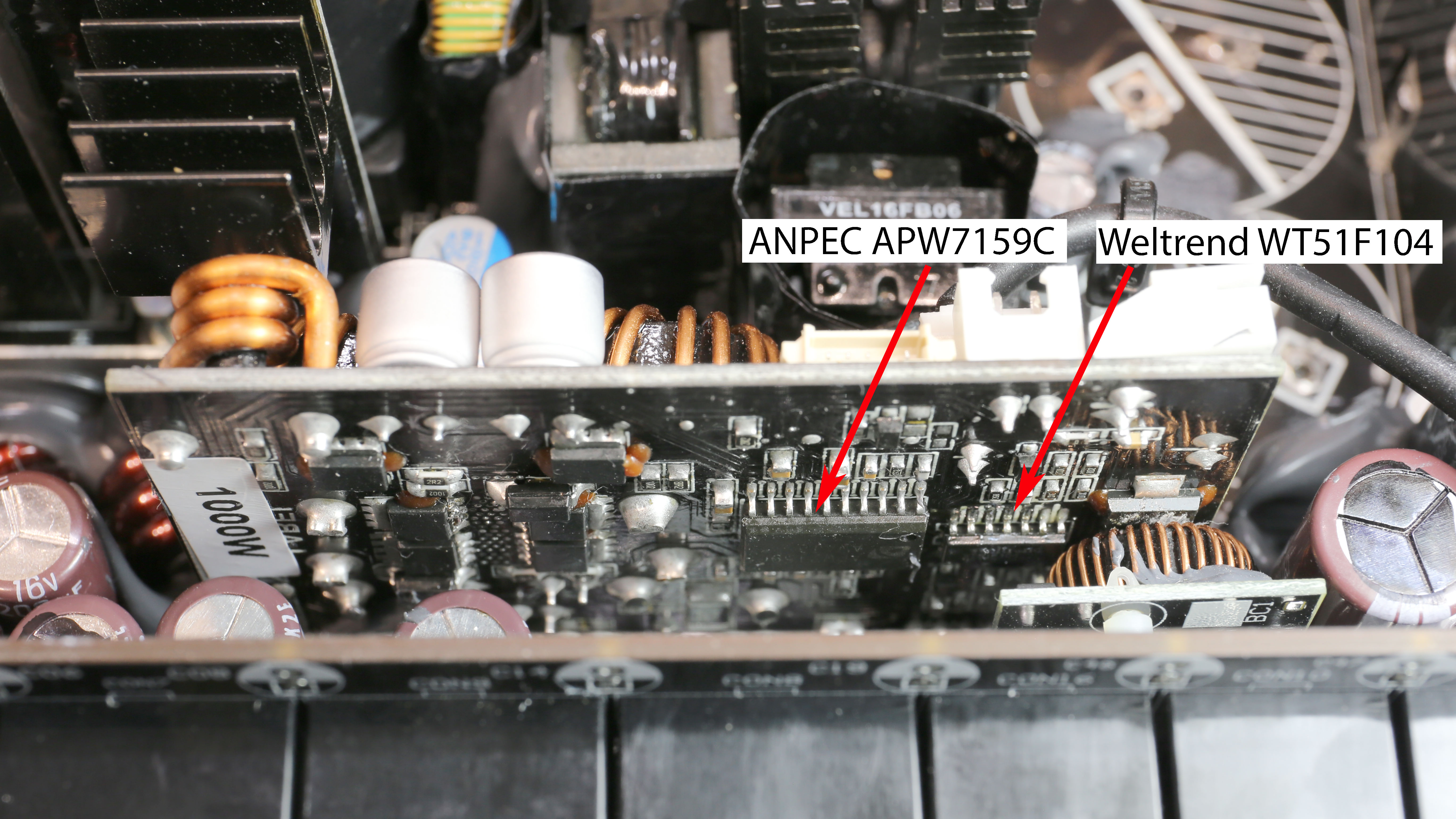
The main supervisor IC is a Weltrend WT7527RA, supported by a WT51F104 micro-controller.
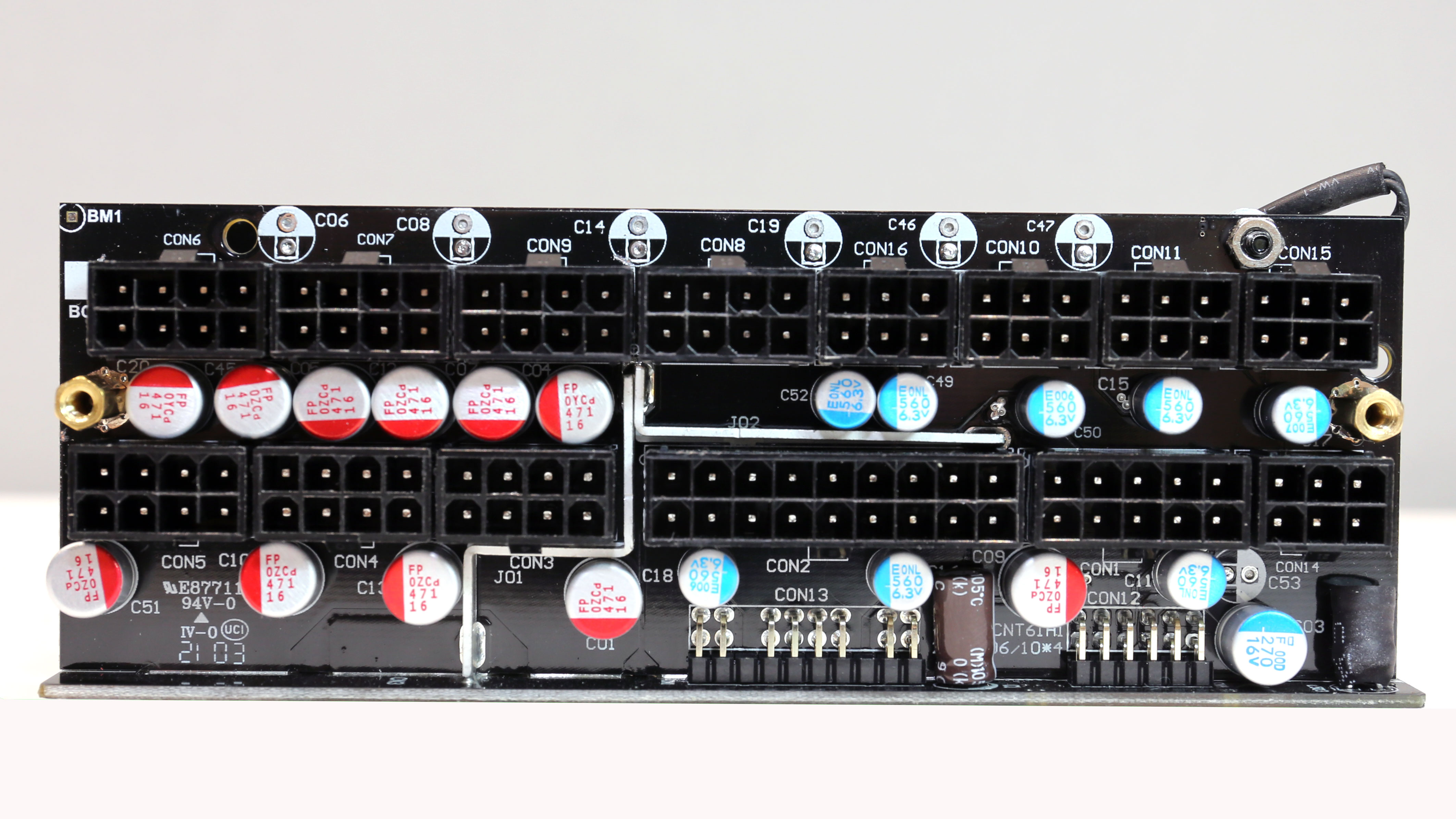
Modular board front
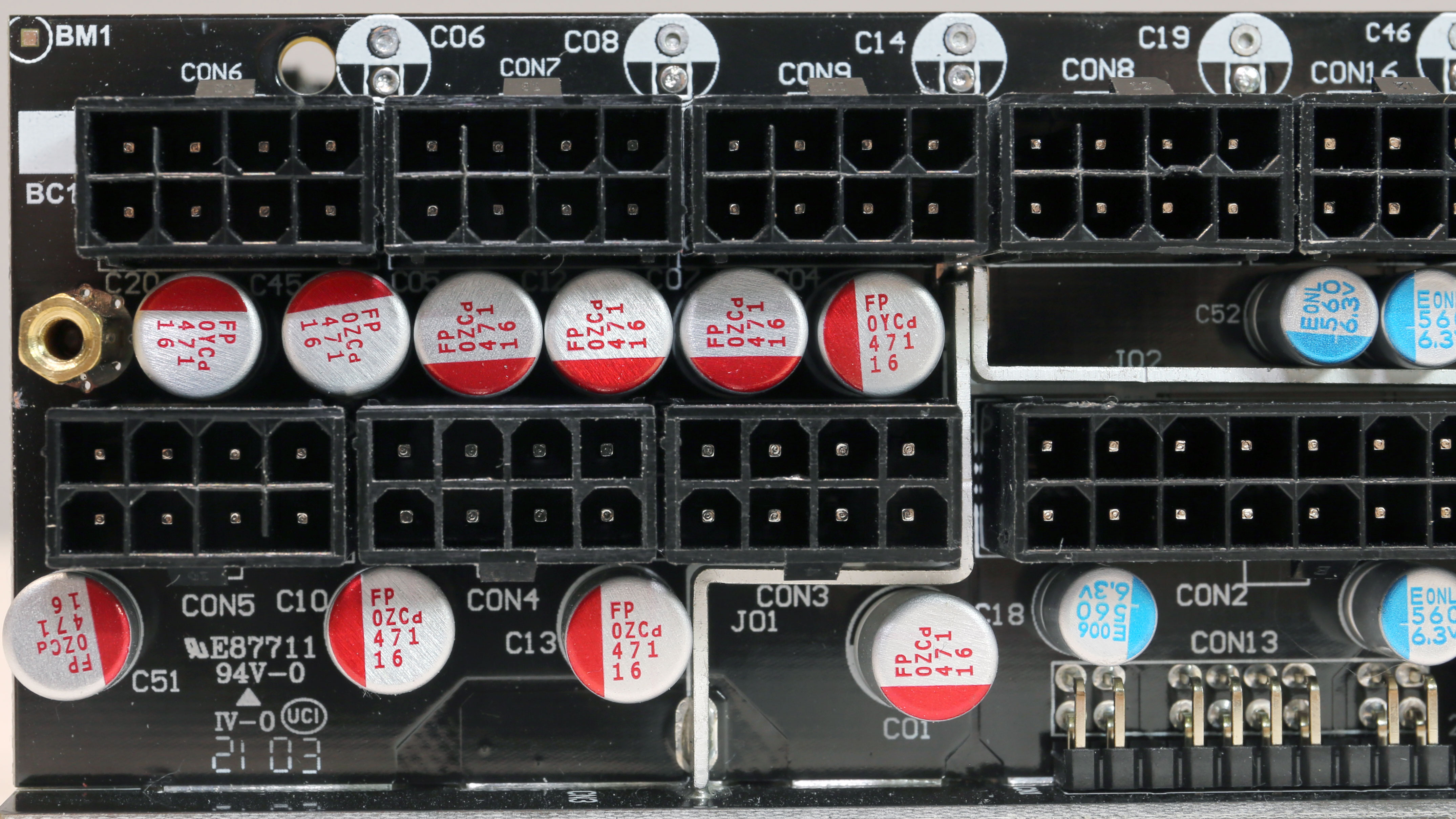
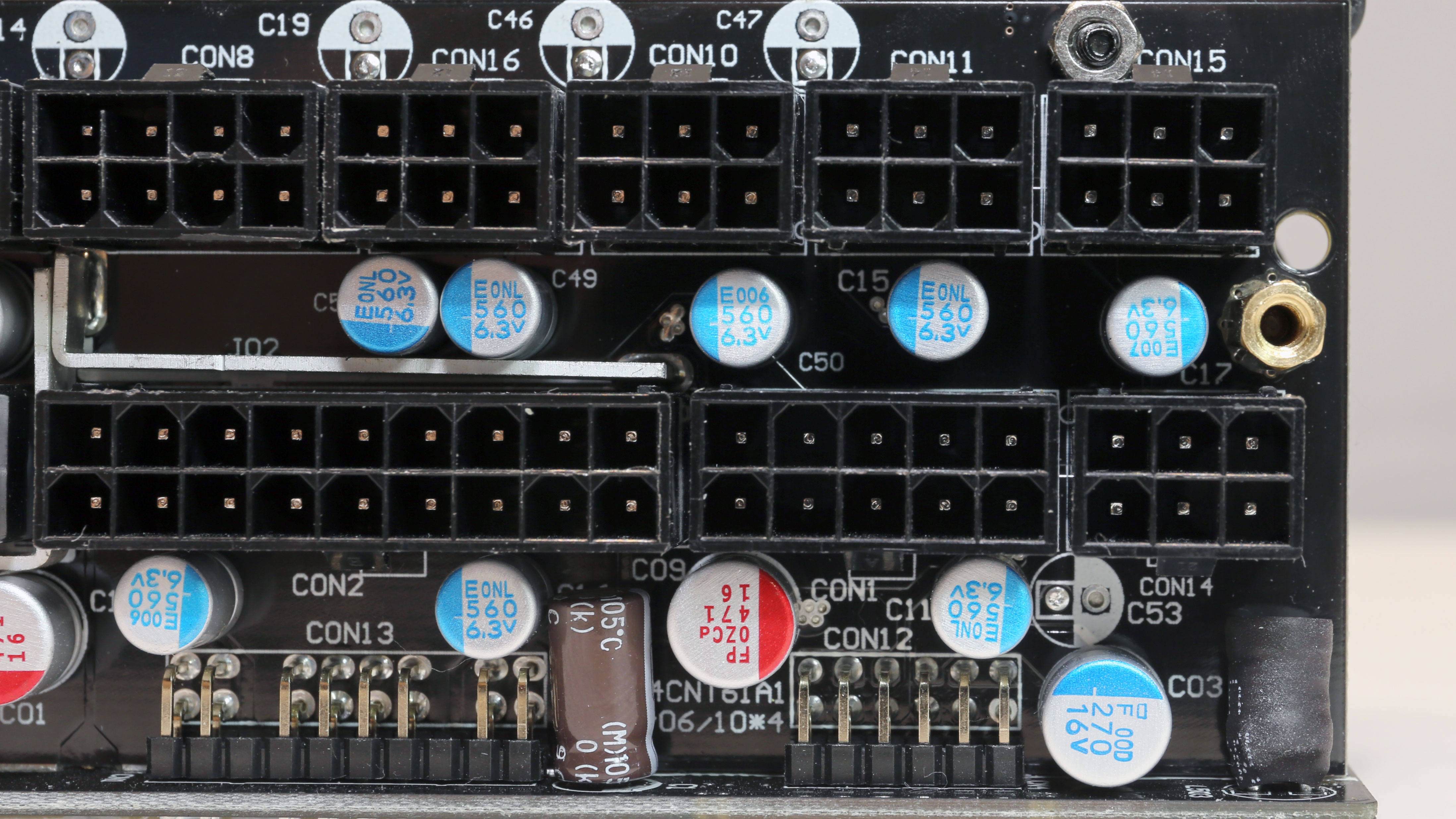
Besides bus bars, the modular board also hosts many polymer caps for cleaning the PSU's DC rails.
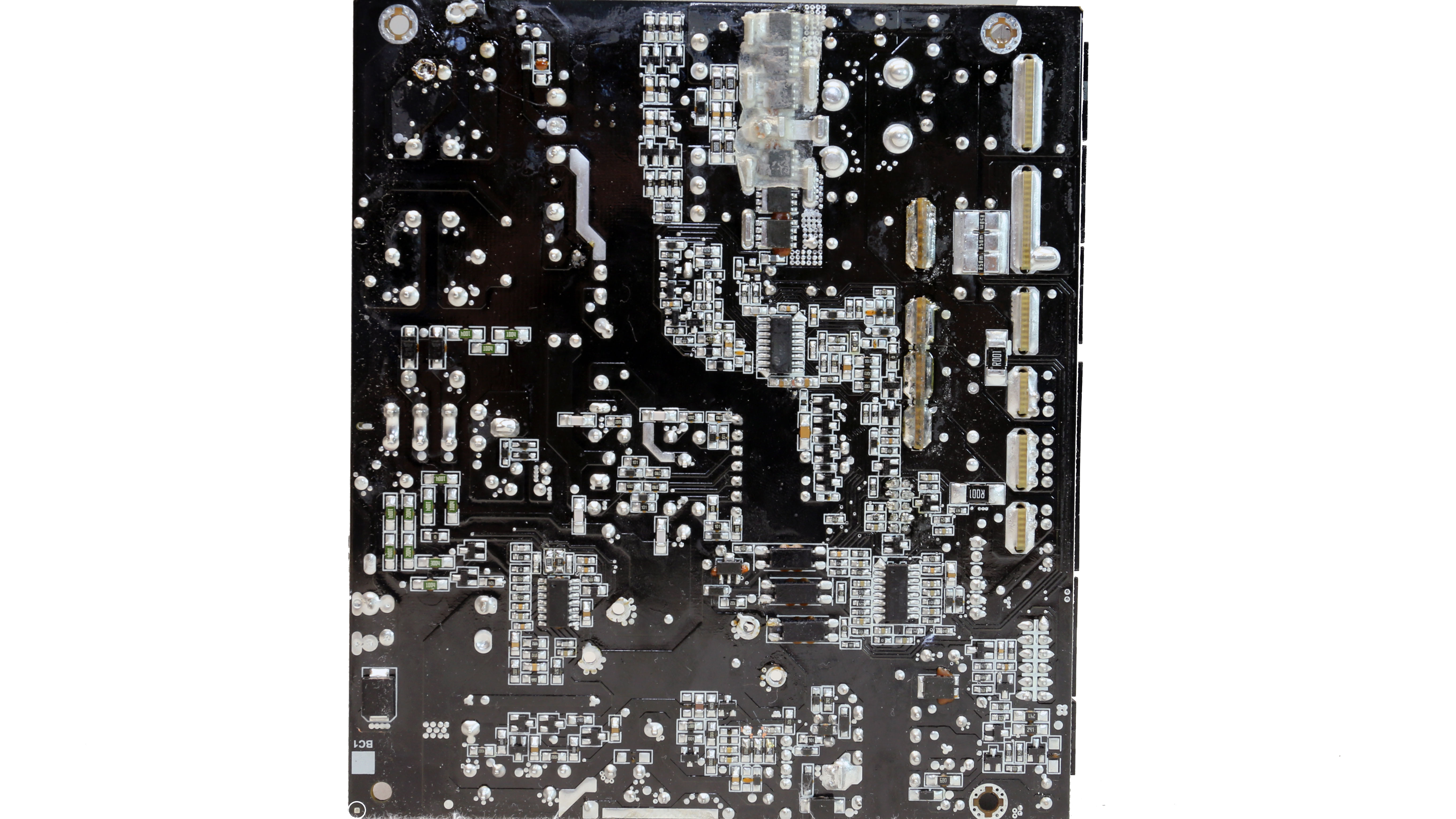
Soldering quality

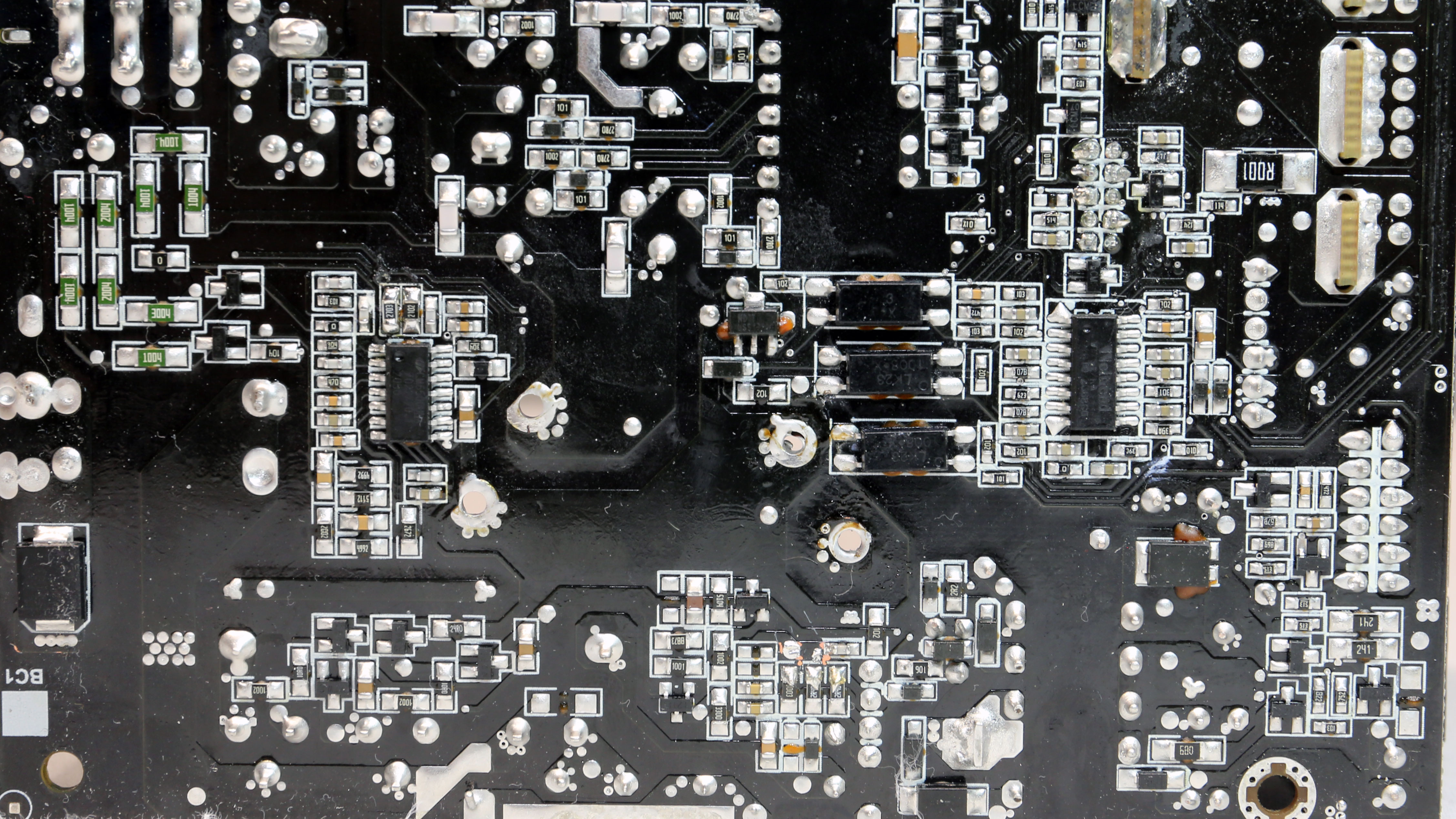
Soldering quality is within expectations.
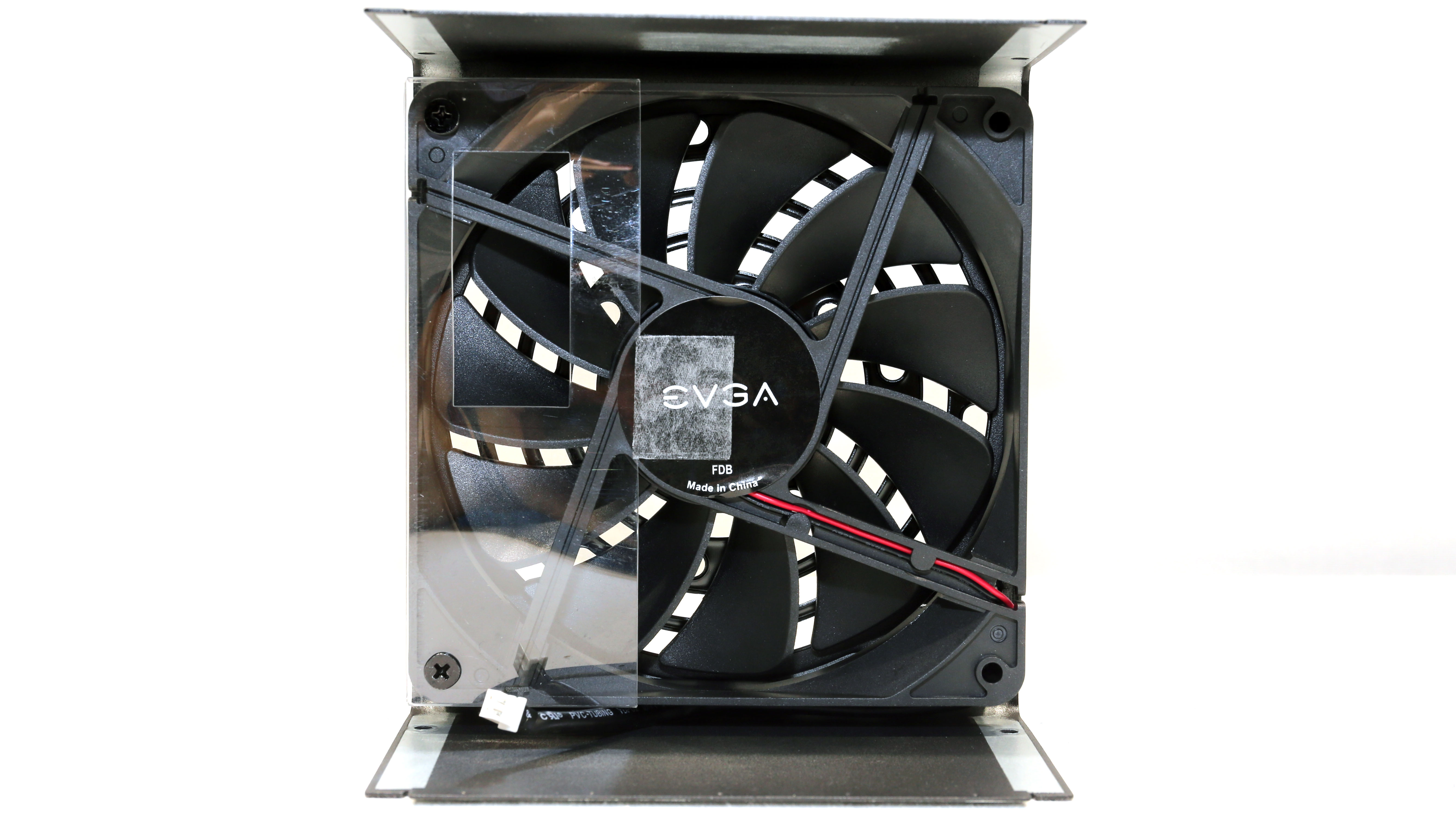
Cooling fan
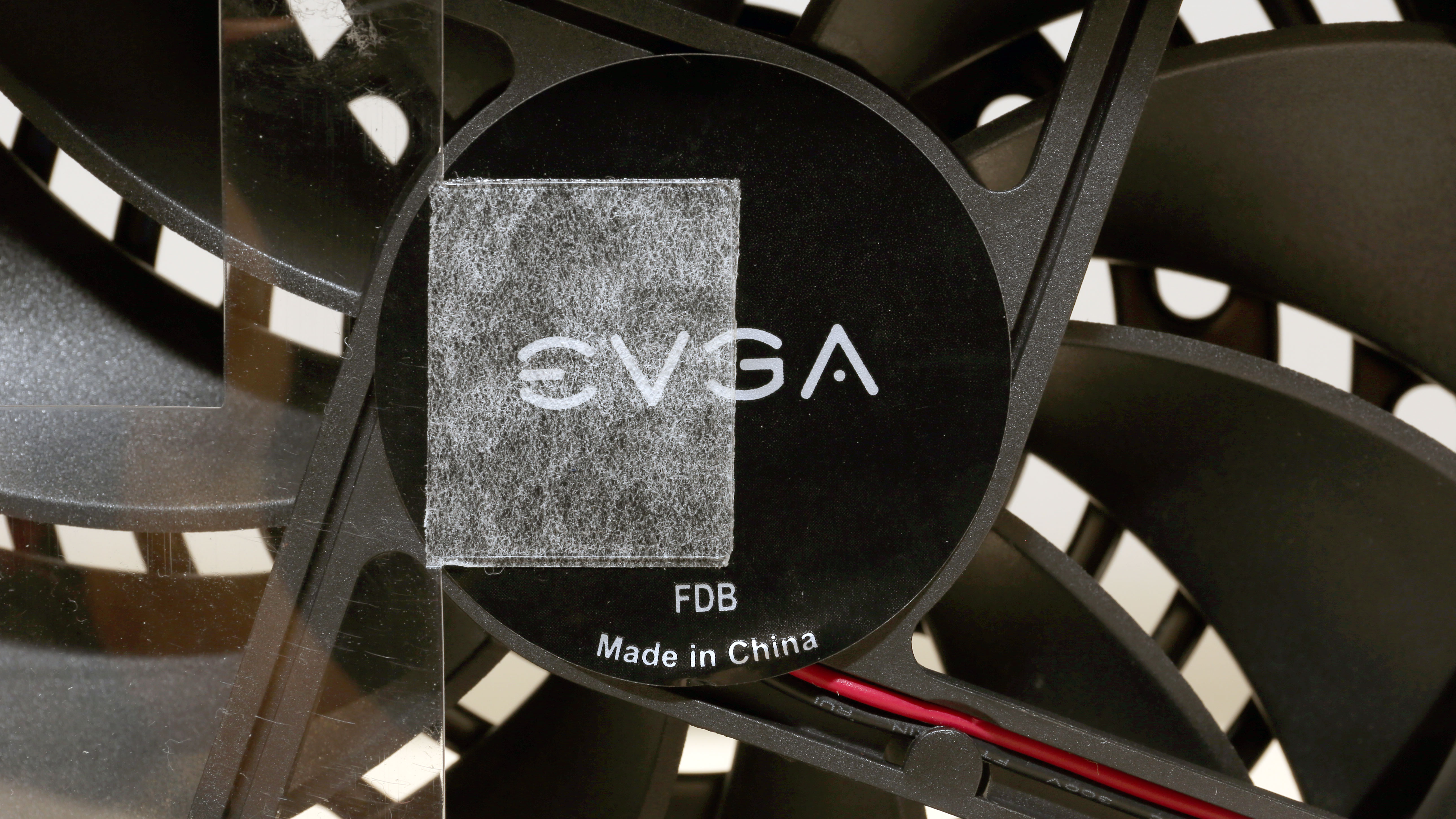
Hong Hua provides the cooling fan, which uses a fluid dynamic bearing for lower noise output and increased reliability.
MORE: Best Power Supplies
MORE: How We Test Power Supplies
MORE: All Power Supply Content
Current page: Specifications and Part Analysis
Next Page Load Regulation, Hold-Up Time, Inrush & Leakage Current, Efficiency and Noise
Aris Mpitziopoulos is a contributing editor at Tom's Hardware, covering PSUs.
-
Roland Of Gilead Hey there,Reply
Shouldn't the '1000w' in the Power specification chart be underneath the 12v rail? Also, are the amps correct? Specs from EVGA state 83.3a on the 12v rail, as opposed to 62.5? -
jsz031 Why is EVGA so scared to send you a GT or GA?Reply
I know they're worse, but I would like to see how they relatively perform according to your specific linear testing. -
werther595 Is the Super Flower models in the comparison charts the Leadex V Pro 1000W? I think that is their only current 1000W Gold unit. It was specifically named in the review of the Corsair 2021 PSU. Will you be reviewing the Super flower Leadex V Pro?Reply -
Lemkes Compared with the 1000 G3, the G6 model with a similar capacity has a depth of 140mm and a smaller size. A 135mm fan can hardly fit its chassis. As we said before, EVGA's G6 model uses an upgraded version of the Seasonic Focus platform.Reply
targetpayandbenefits.com -
LordTimothyDexter There's no way this review looked at the fan curve for this and must have taken the average dB data from somewhere else. The low average dB is EXTREMELY misleading for this PSU. It stay quiet up to a certain power draw and then the noise SKYROCKETS from it jumping to extremely high fan speeds, but if you were to take the mean dB across its load % it would show a low average dB. Very misleading, this thing gets louder than all the fans in my case combined -- 13 Arctic fans going at 1300-1500rpm are drowned out by the volume from this PSUReply